Today was our last day in Israel and I got up at 5:45am this morning to get ready and finish packing. We had to be done with breakfast early to take a COVID test at 7:30am for our return flight to the United States.
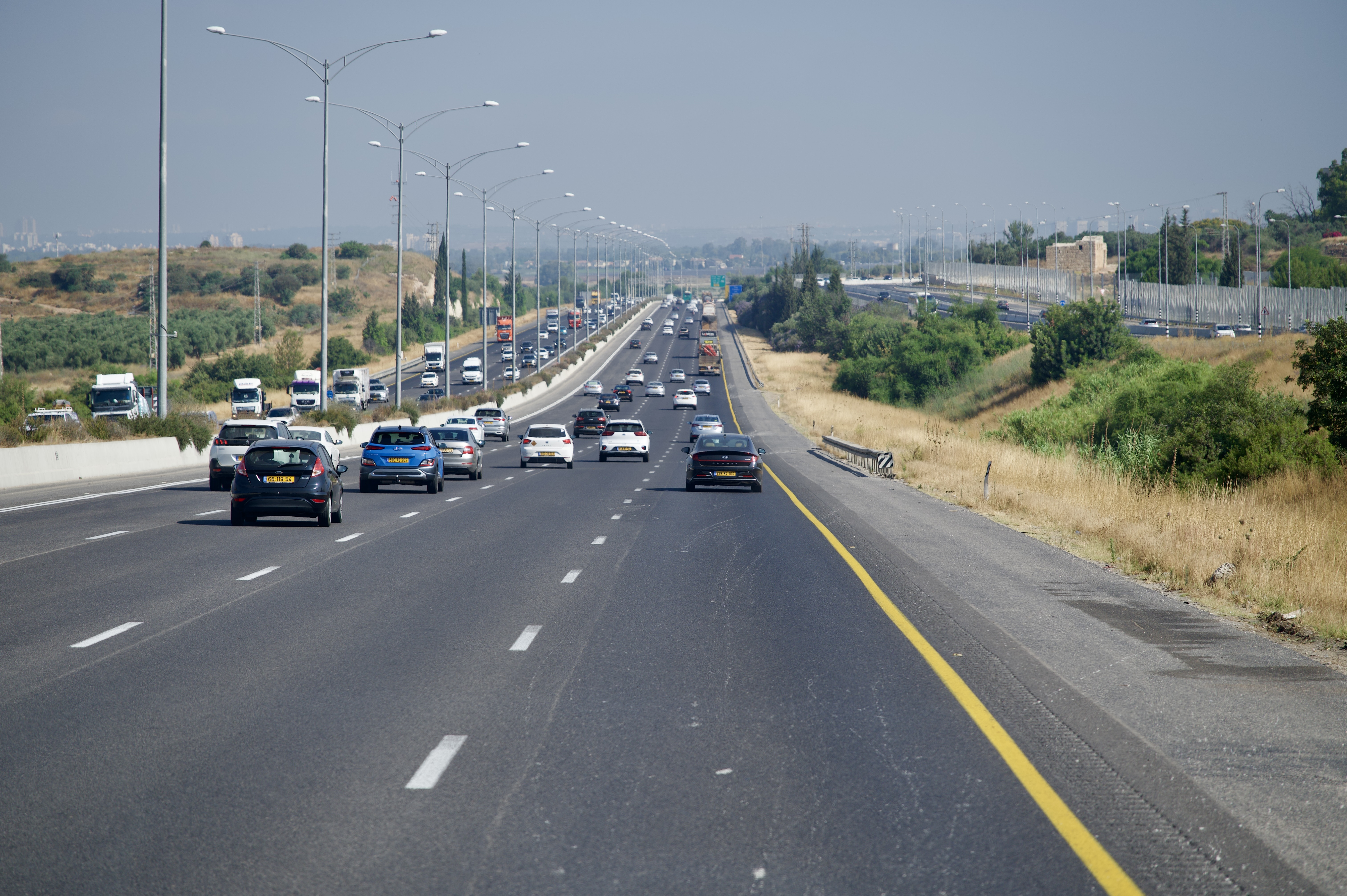
After the COVID test we boarded the bus for a long ride to the northern coast and Caesarea Maritima. This was a site we were supposed to see on our first day that was missed but Ami was able to rearrange our schedule so that we could fit it in today along with Tel Megiddo.
Caesarea Maritima
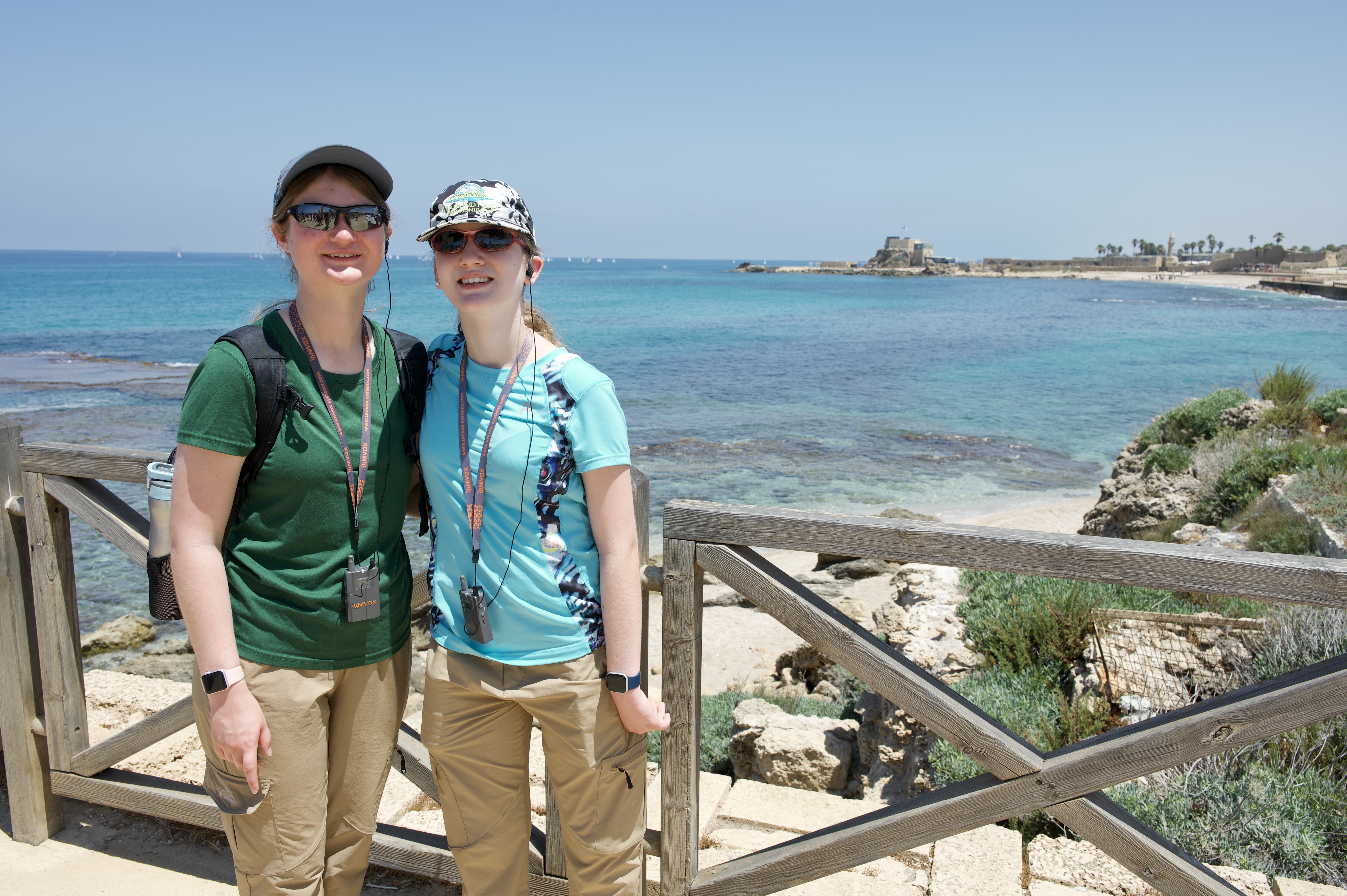
Upon arrival at the site, Ami began to tell us about the city of Caesarea. “Maritima” means “by the sea” (port city on the Mediterranean). It is known simply as “Caesarea” in scripture and is not to be confused with Caesarea Philippi in the Galilean Peninsula that we visited last week.
The city was built by Herod the Great between approximately 22 and 10 B.C. and was named for Caesar Augustus. Herod built it to serve the needs of the Roman Empire, because it did not have a major harbor in Israel.
Ami talked about what a massive project this was to build a port here, because there is not a natural bay. Herod used huge blocks of sandstone assembled with lead to build the harbor. At its peak, Caesarea had a population of over 100,000 people.
The synagogue at Caesarea was also where the Jewish revolt against the Romans began in 66 A.D.
After Roman time, the site was further transformed by the Byzantines in the 5th century, the Turks in the 8th century, and then the crusaders in the 10th to 11th centuries.
Among many other reasons, the ruins at Caesarea are important because they show us what a Roman city looked like at that time. It was built according to a “Hippodamian Plan” which consisted of horizontal and vertical roads creating square-shaped patterns that contained buildings (we know it as the grid system). It shows that Romans planned out their cities in detail before starting to build. This style was invented by the architect Hippodamus of Miletus.
They are also important because of the role that Caesarea plays in the books of Acts (Acts 8:40; 9:30; 10:1, 24; 11:11; 12:19; 18:22; 21:8, 16; 23:23, 33; 25:1, 4, 6, 13):
*It is first mentioned when Philip came to Caesarea as he went from city to city, spreading the gospel after the conversion of the Ethiopian eunuch (Acts 8:40).
*After Paul’s conversion, Paul was brought to Caesarea and sent on a ship to Tarsus to avoid death by those who were opposed to his testimony (Acts 9:30).
*Caesarea was the home of Cornelius, and was mentioned in Acts 10:1, 24 and 11:1 related to his conversion.
*Soon after Peter escaped from prison, Herod Agrippa I journeyed to Caesarea where he made his final speech (Acts 12:19–23). Acts records that he sat down and praised himself as one with the voice of a god (Acts 12:22). An angel of the Lord struck him down (with worms) because he did not give God the glory (Acts 12:23).
*During Paul’s second missionary journey, it is recorded that after he landed at Caesarea, he greeted the church (Acts 18:22).
*During his third missionary journey, Paul visits Philip the evangelist, who had a house in Caesarea (Acts 21:8).
*The last mention of Caesarea in the New Testament comes in the long narrative of chapters 23 through 26, in which Paul appears before Felix, Festus, and Agrippa II (Acts 23:33–26:32). Paul makes his case before Festus, finally invoking his right as a Roman citizen and appealing to Caesar (Acts 25:11).
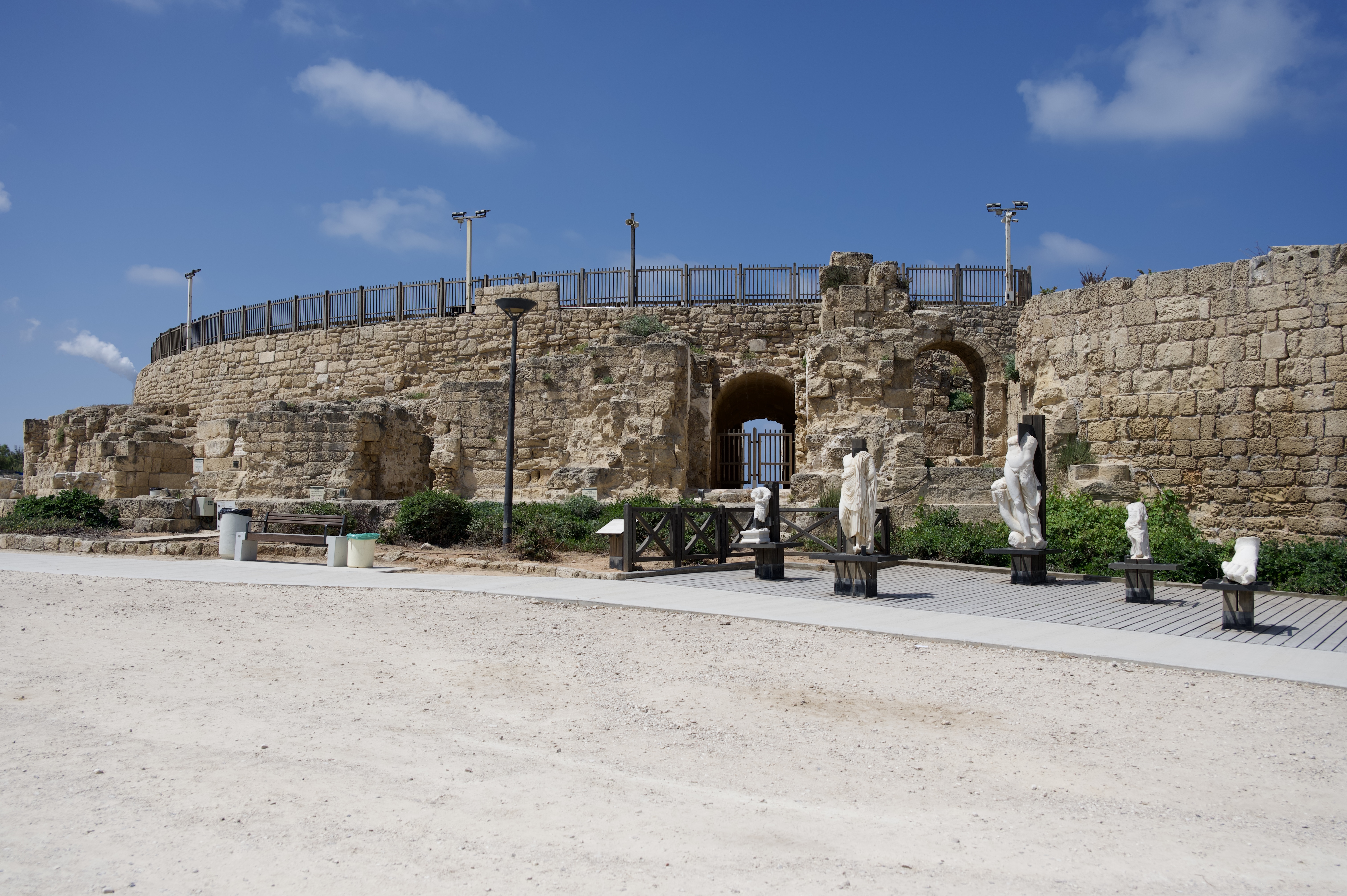
Our first stop in the city was the magnificent theater built by Herod and the many marble statues standing just outside.
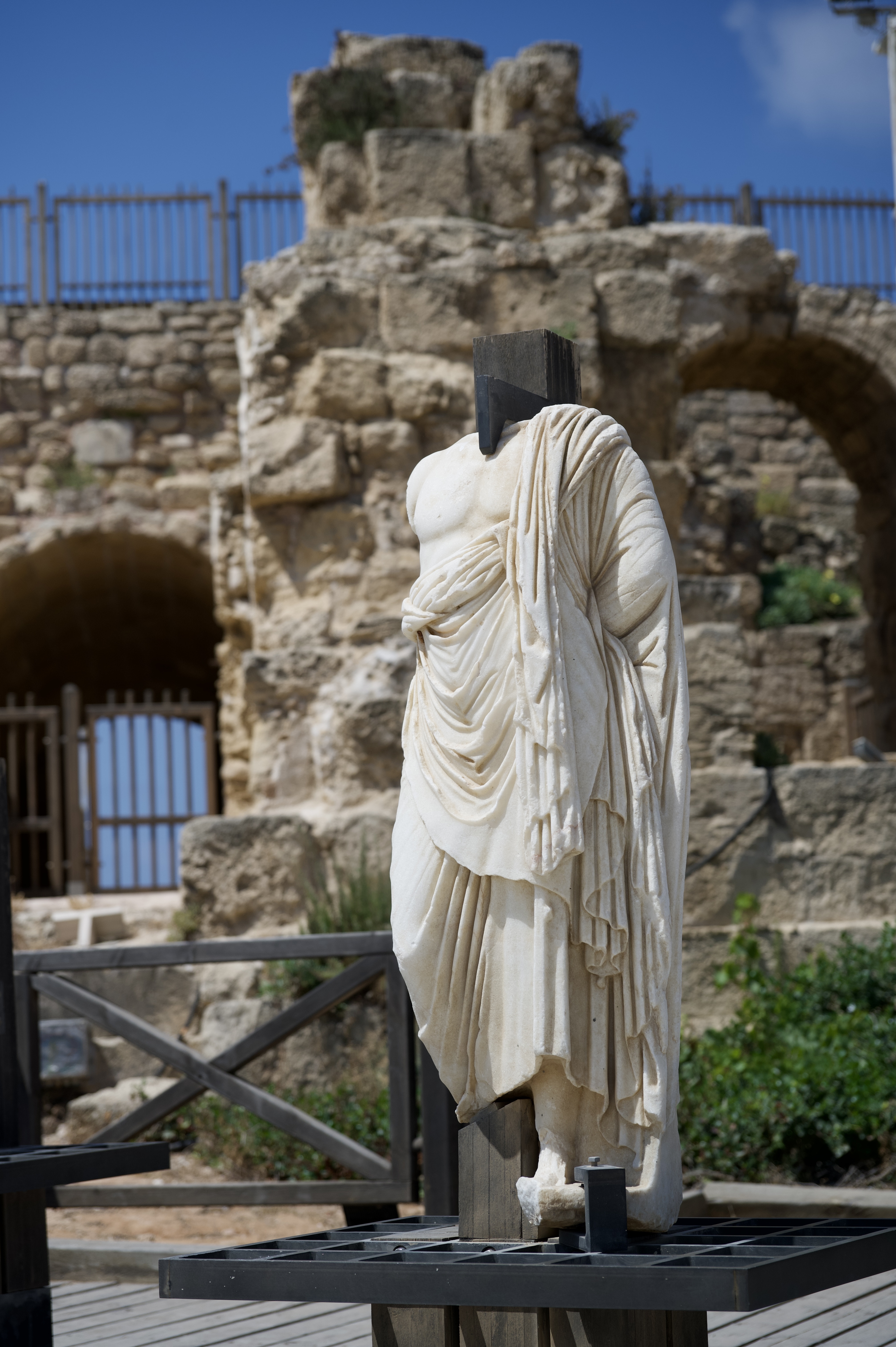
Caesarea was full of marble sculptures, as was typical of Roman cities of the time. All of them are headless today as they were beheaded by Muslims because Islam does not allow icons.
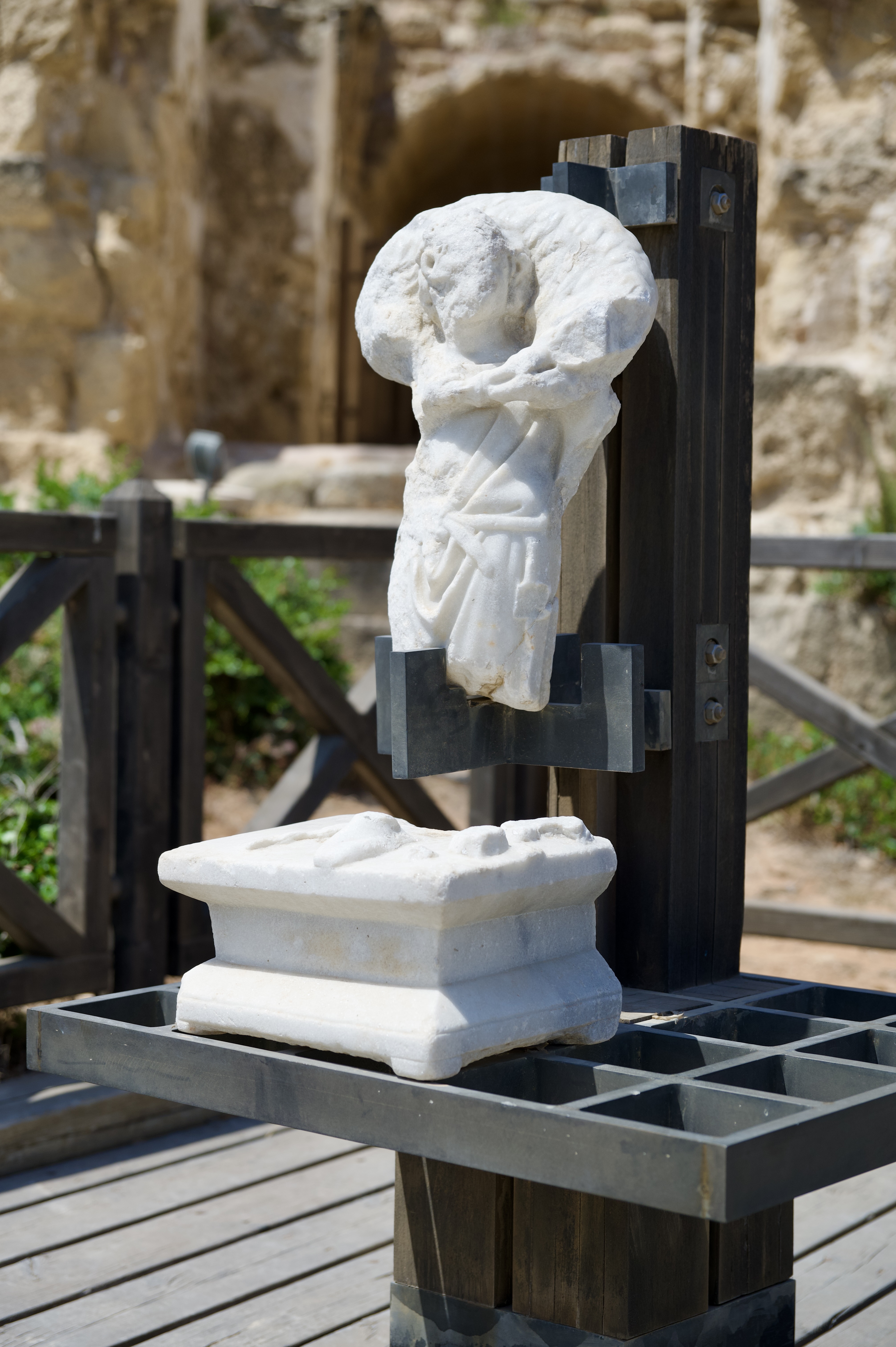
One of the statues that Ami showed us was of a little shepherd from the Byzantine period.
There is no marble in Israel, so all of this had to be imported from other parts of the Roman Empire to build the statues and columns. They also imported other materials such as granite.
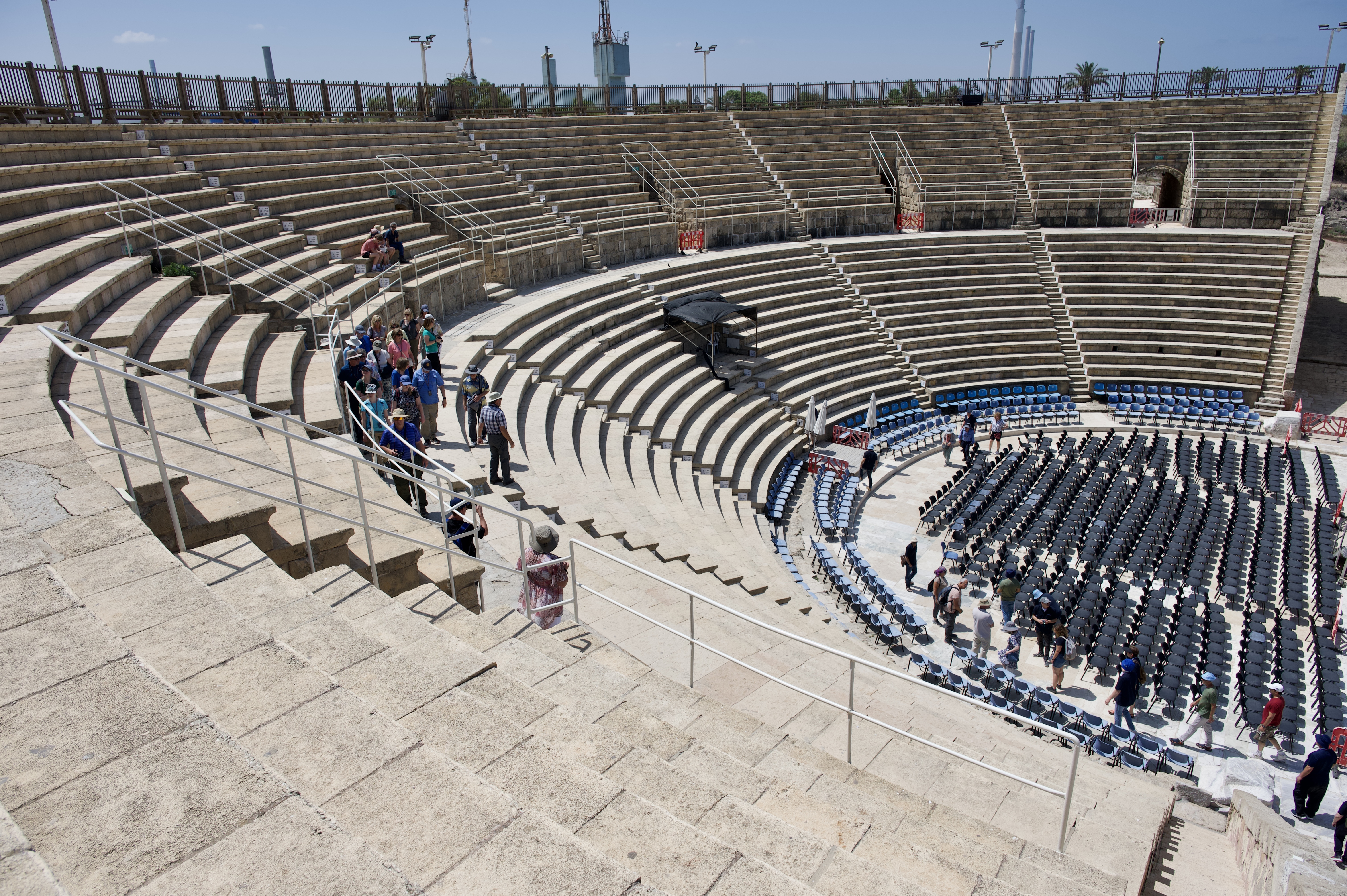
Next, we went inside the theater that was built out of sandstone. The base of this theater is original, but the seats have all been restored with concrete to allow for modern-day concerts. It is frustrating that so much restoration is taking place at these sites. They were working on the theater when I first came to Caesarea, and they are still working on it.
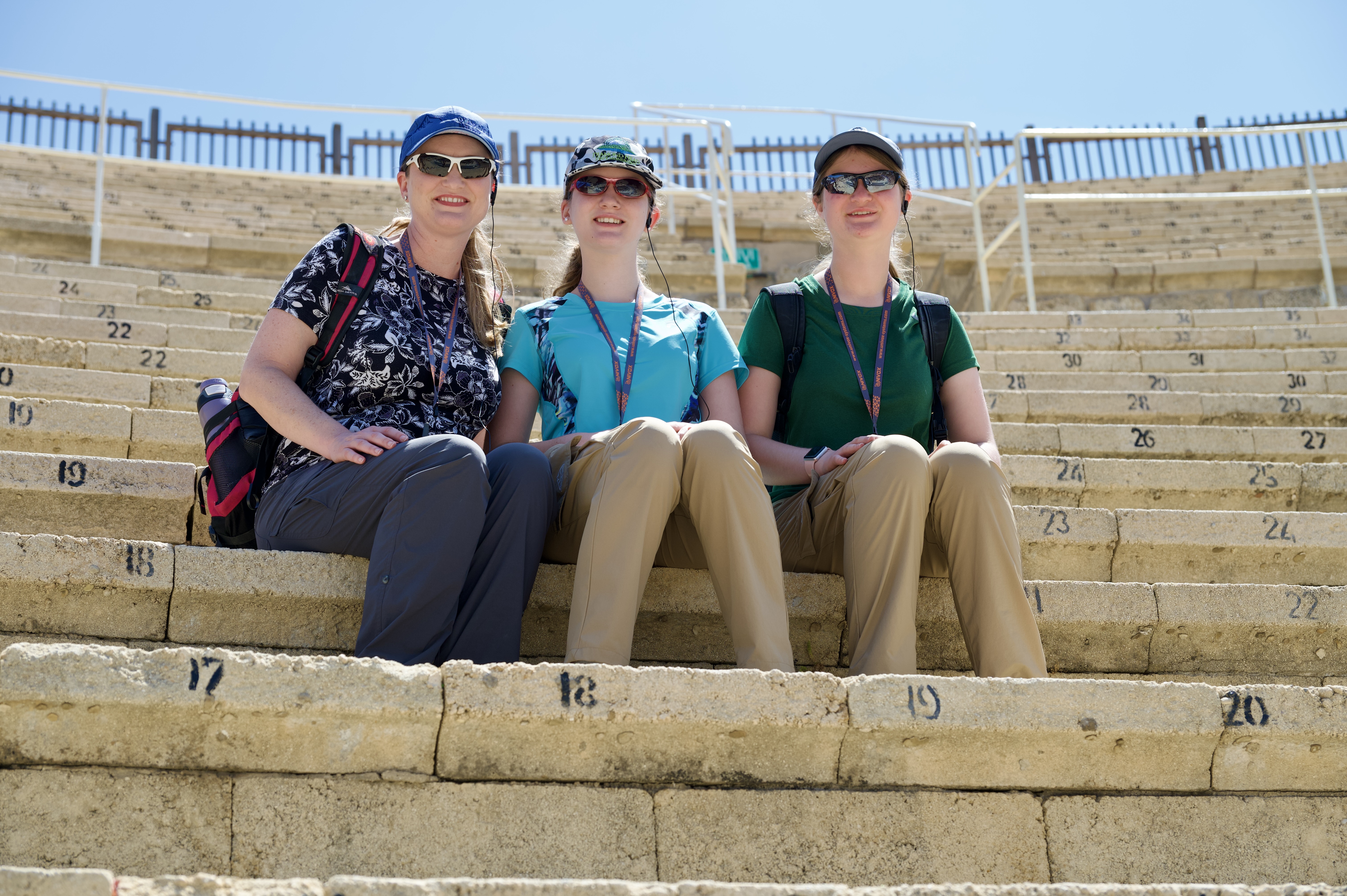
I learned something from Ami about ancient theaters that I did not already know. He said that the entrance/exit tunnels were called “vomitoriums” (where we get our word vomit) because they “spit out” the crowd from the theater. Fascinating and gross all at the same time.
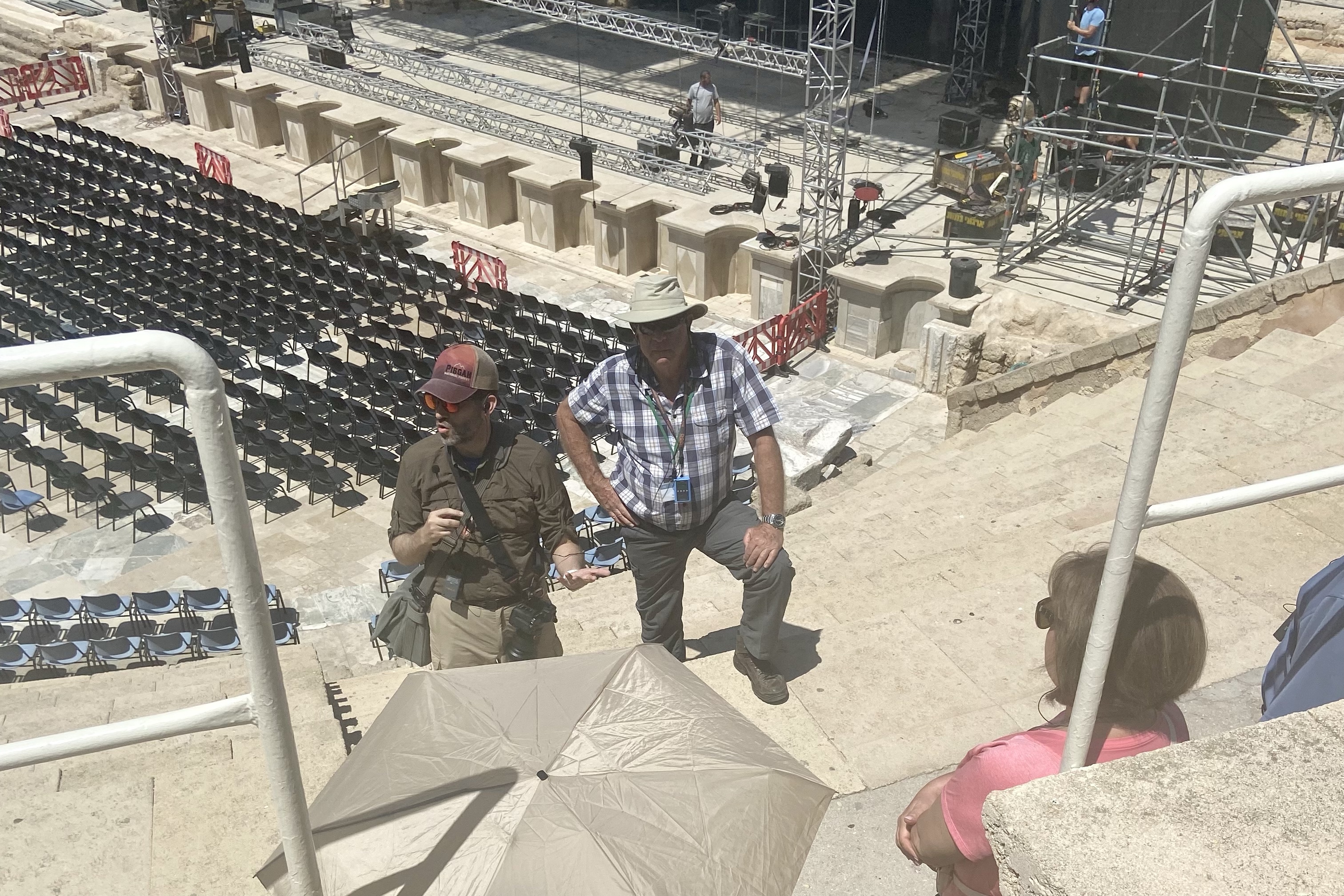
In the theater, Ami continued to talk to us about the history of Caesarea, and about its role in the story of Cornelius and of Paul’s imprisonment. Once Ami finished, I spent a few minutes talking to the group about the other mentions of Caesarea in the books of Acts and how being at this site can really enhance our ability to picture the events in scripture.
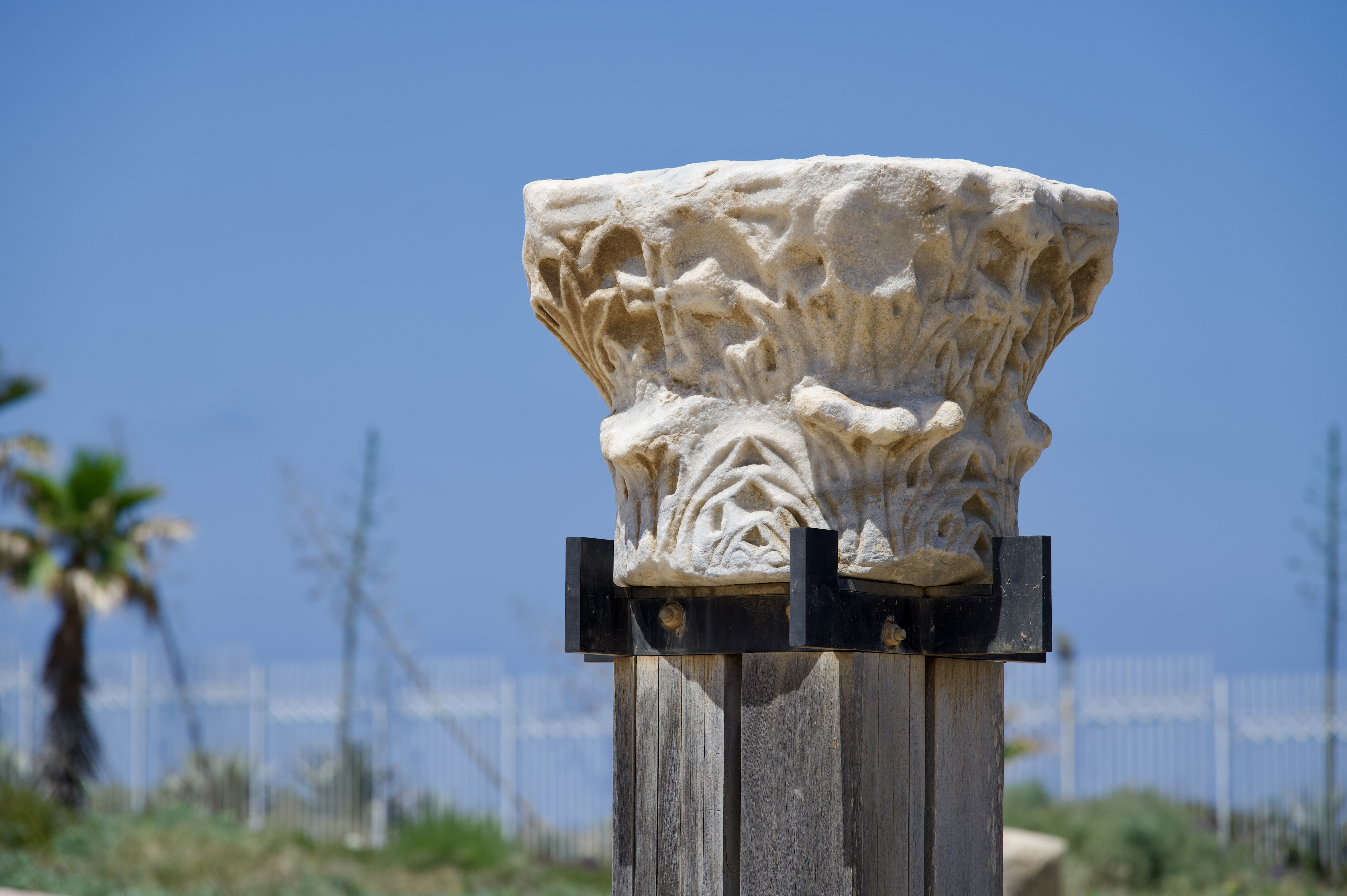
Back outside of the theater, Ami showed us several column fragments and a sarcophagus that were found at Caesarea. These have different symbols on them depending on what period they are from. For example, those with a cross are from the Byzantine period.
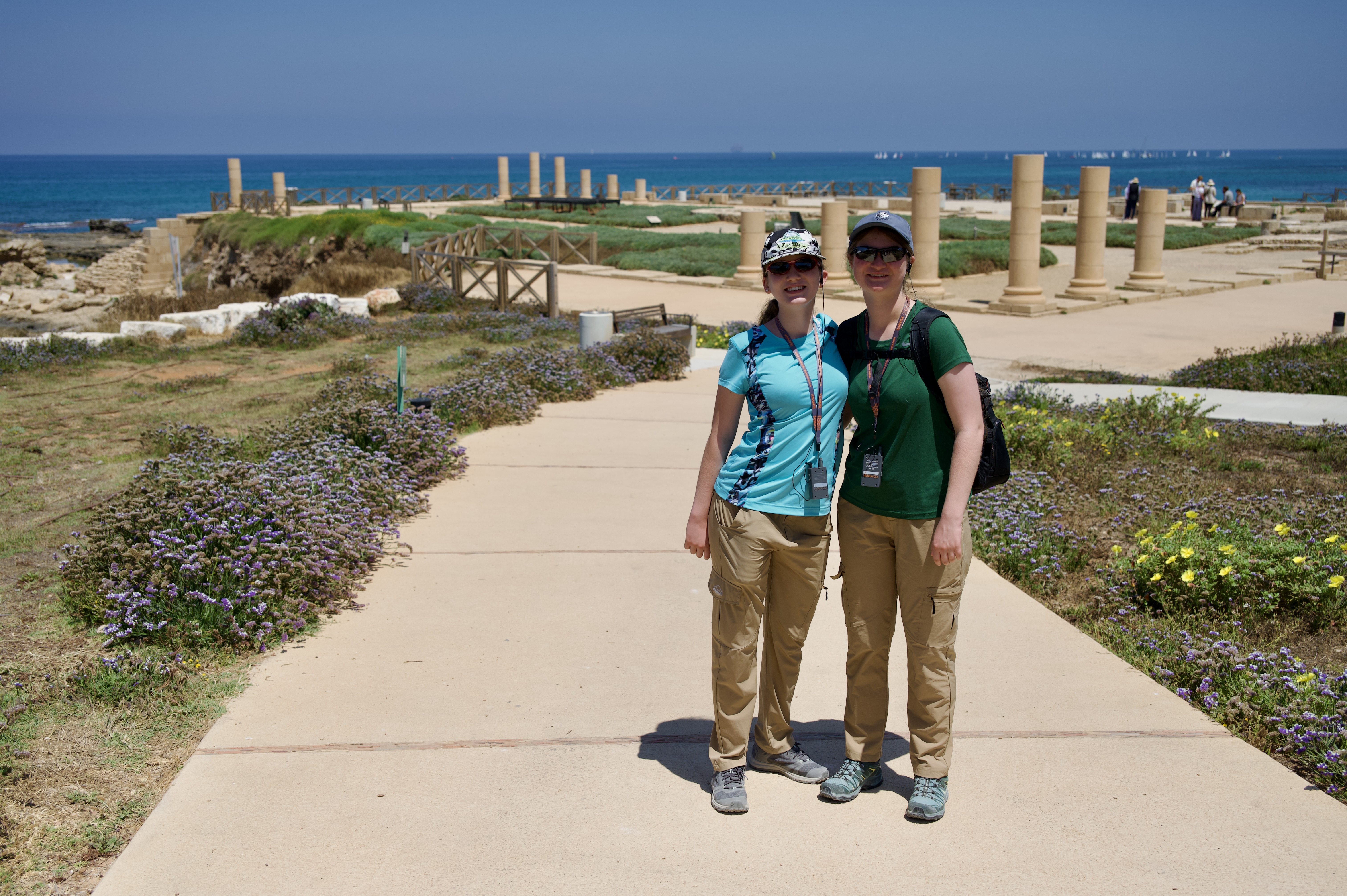
As we approached the palace of Herod the Great, Bruce told the group about a time he had been to Caesarea with Dr. Marlin Connelly.
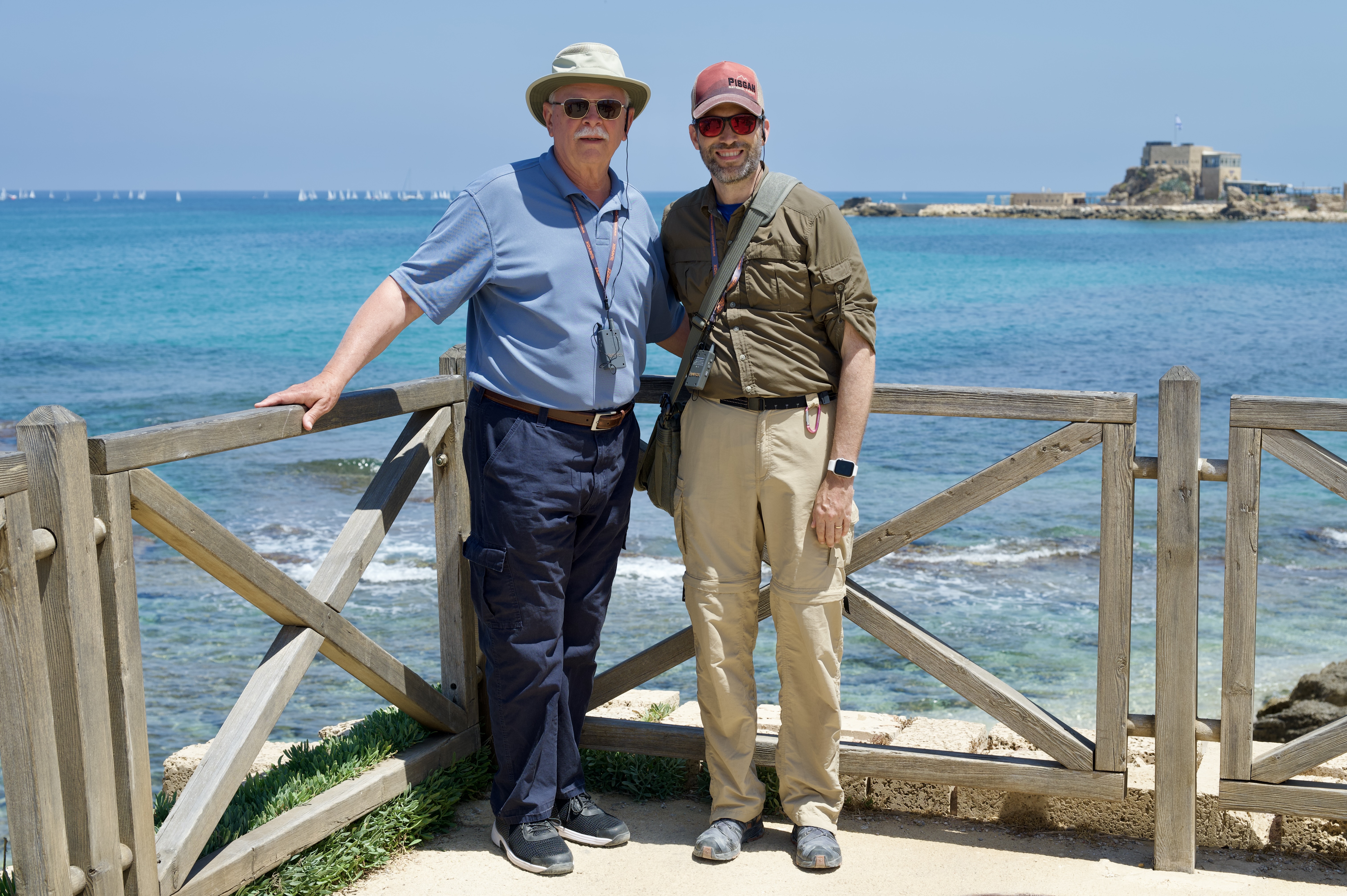
He said that while the group was touring the palace, he looked out onto the rock by the shore and saw Dr. Connelly talking with some of the local fisherman. He got emotional as he told this story as we lost Dr. Connelly in 2020. Dr. Connelly was my mentor in preaching, and while I had heard the story before, I was glad that Bruce shared it with the group. It was easy to picture him out there on the rocks.
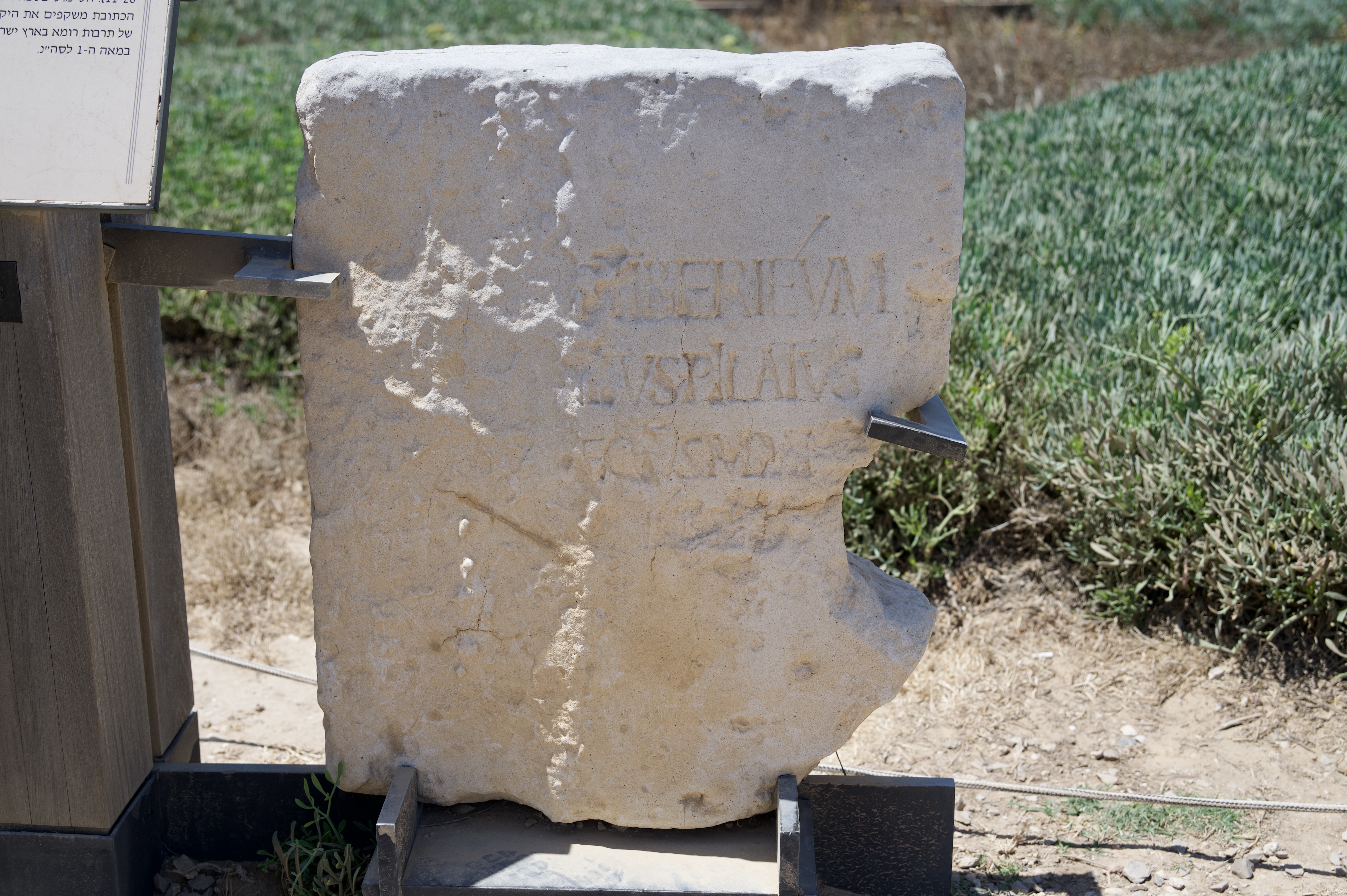
At the palace, Ami showed us the replica of the inscription that was found at Caesarea mentioning Pontius Pilate. The palace at Caesarea was likely used by Pontius Pilate while he was a Roman Governor in Israel. The inscription reads, “Pontius Pilate, the prefect of of Judea, erected a building dedicated to the emperor Tiberius.”
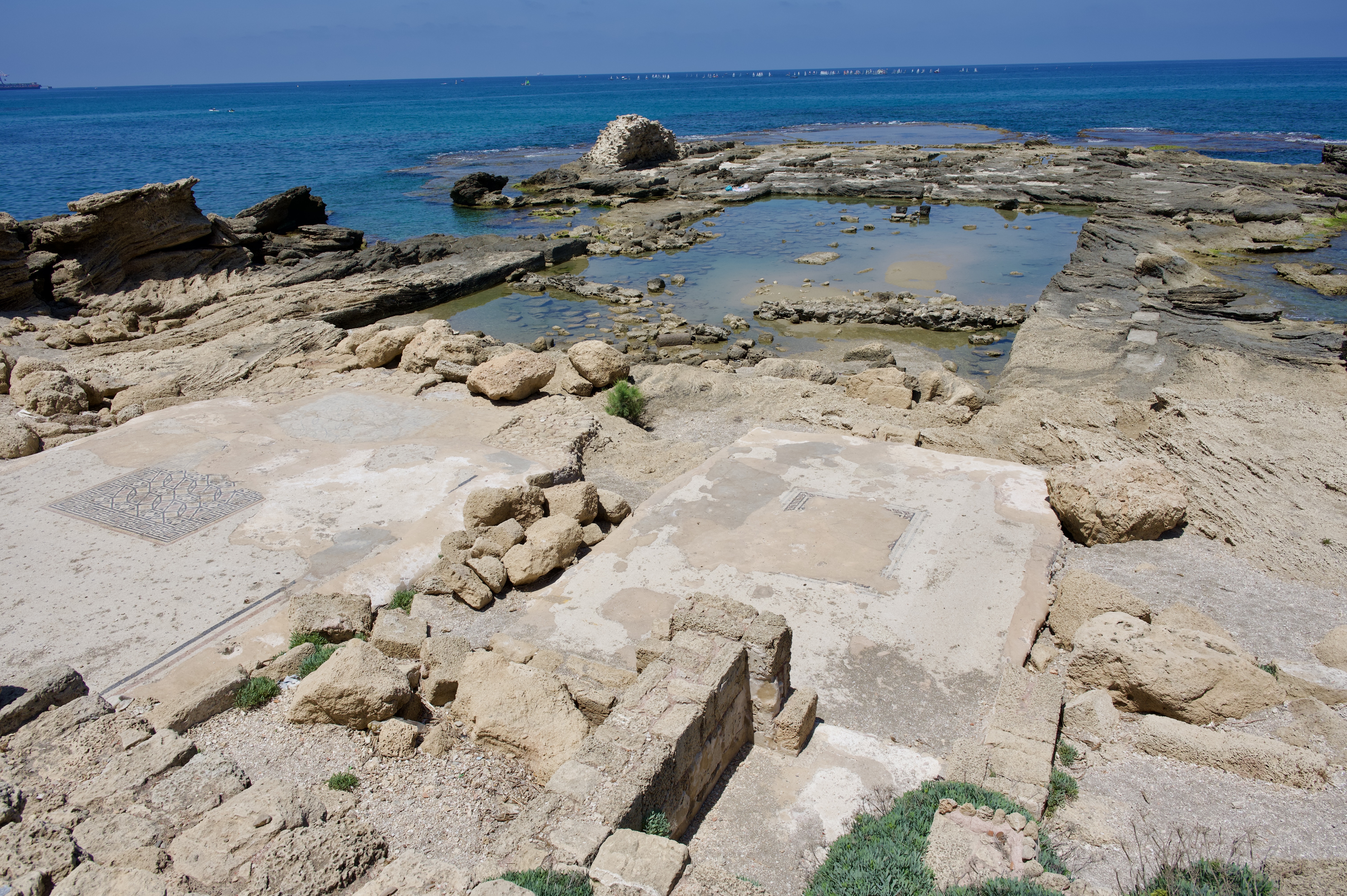
Also at the palace, Ami showed us the swimming pool of Herod that can still be clearly seen out in the Mediterranean and is still surrounded by beautiful mosaics.
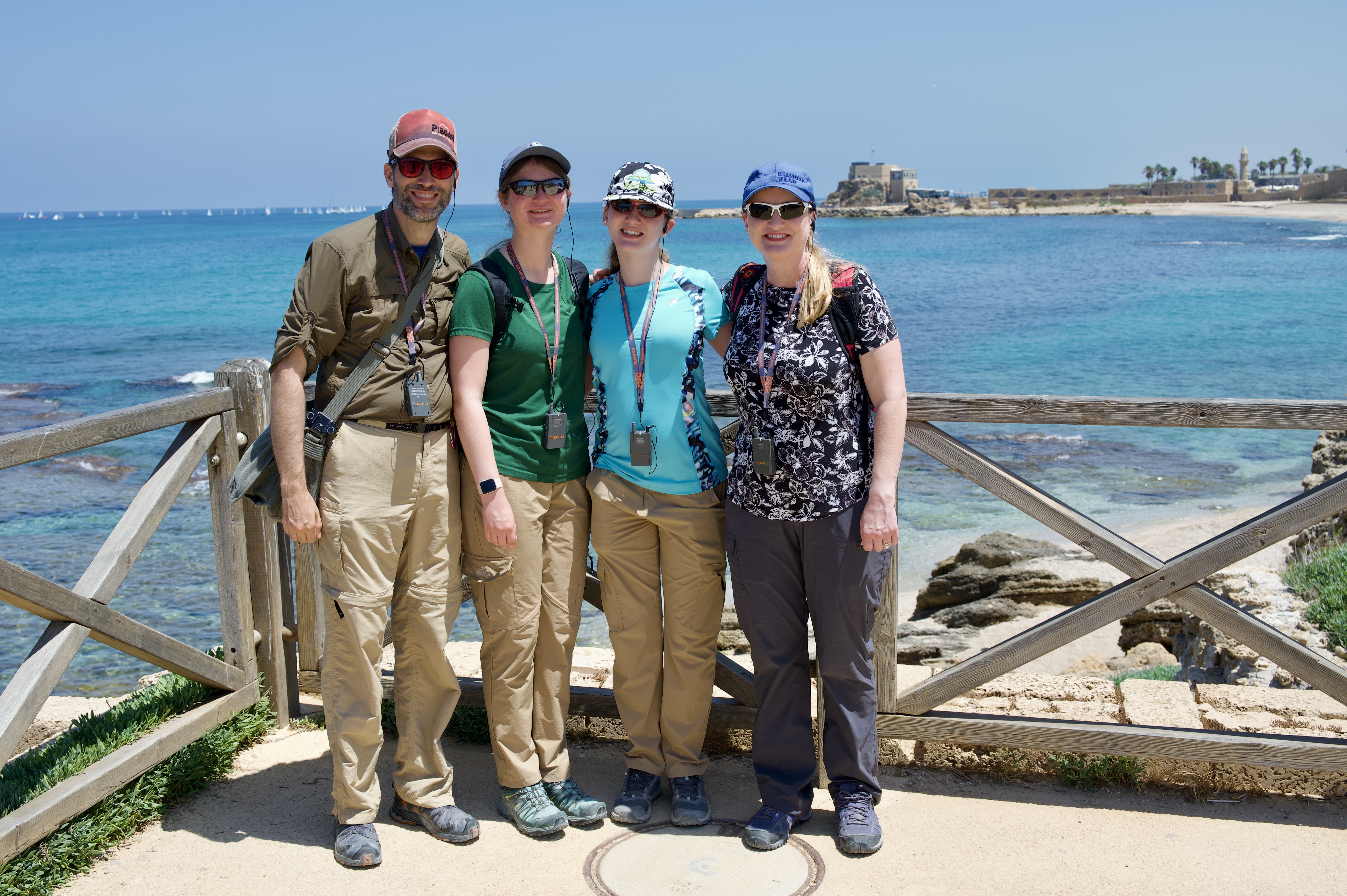
In addition to the ruins at Caesarea, the view of the Mediterranean from this place is incredible.
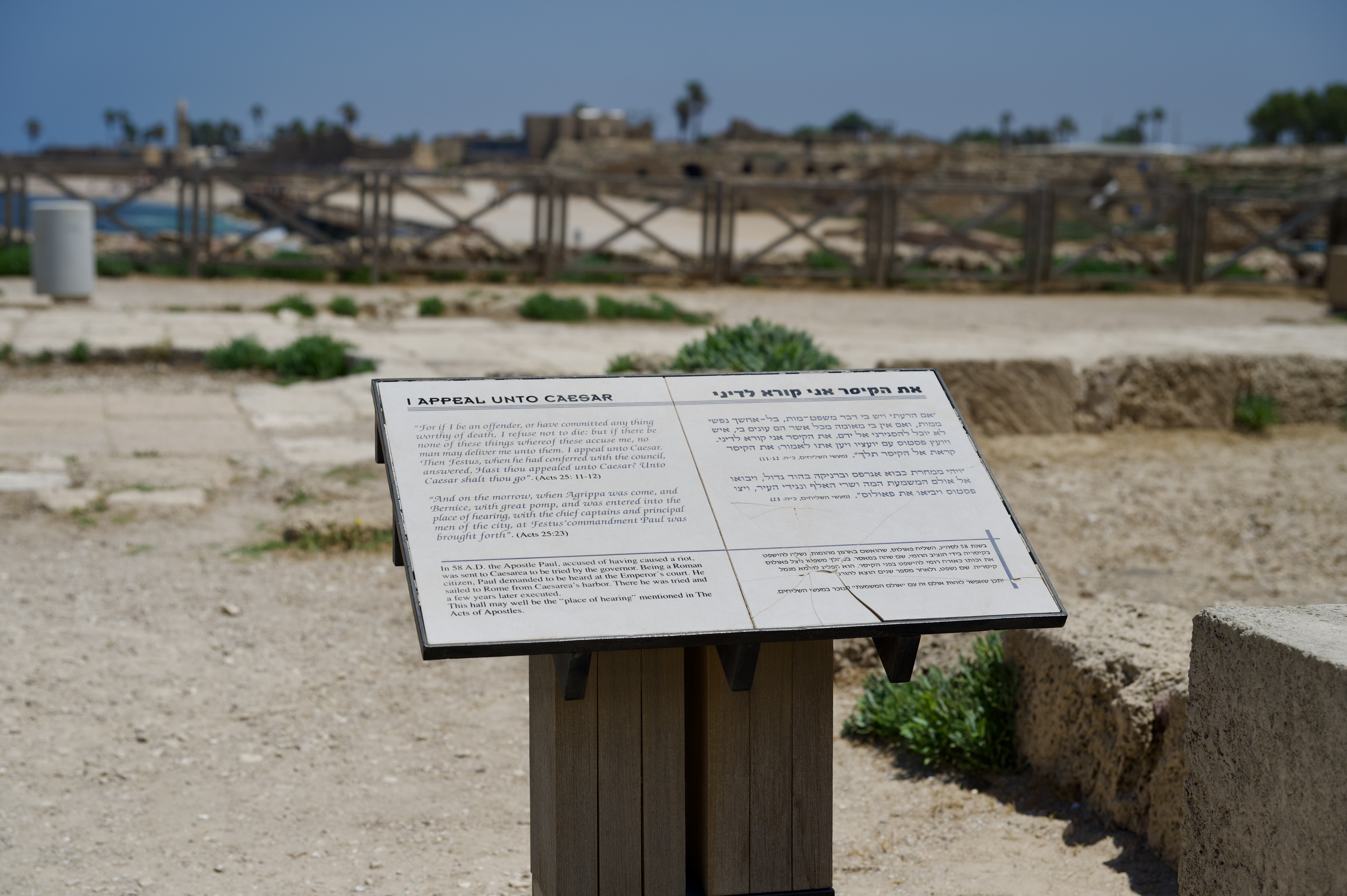
In the upper part of the palace, Ami talked to us again about Paul being imprisoned here for two years. It was specifically mentioned in Acts 23:35 that Paul was being held in Herod’s palace.
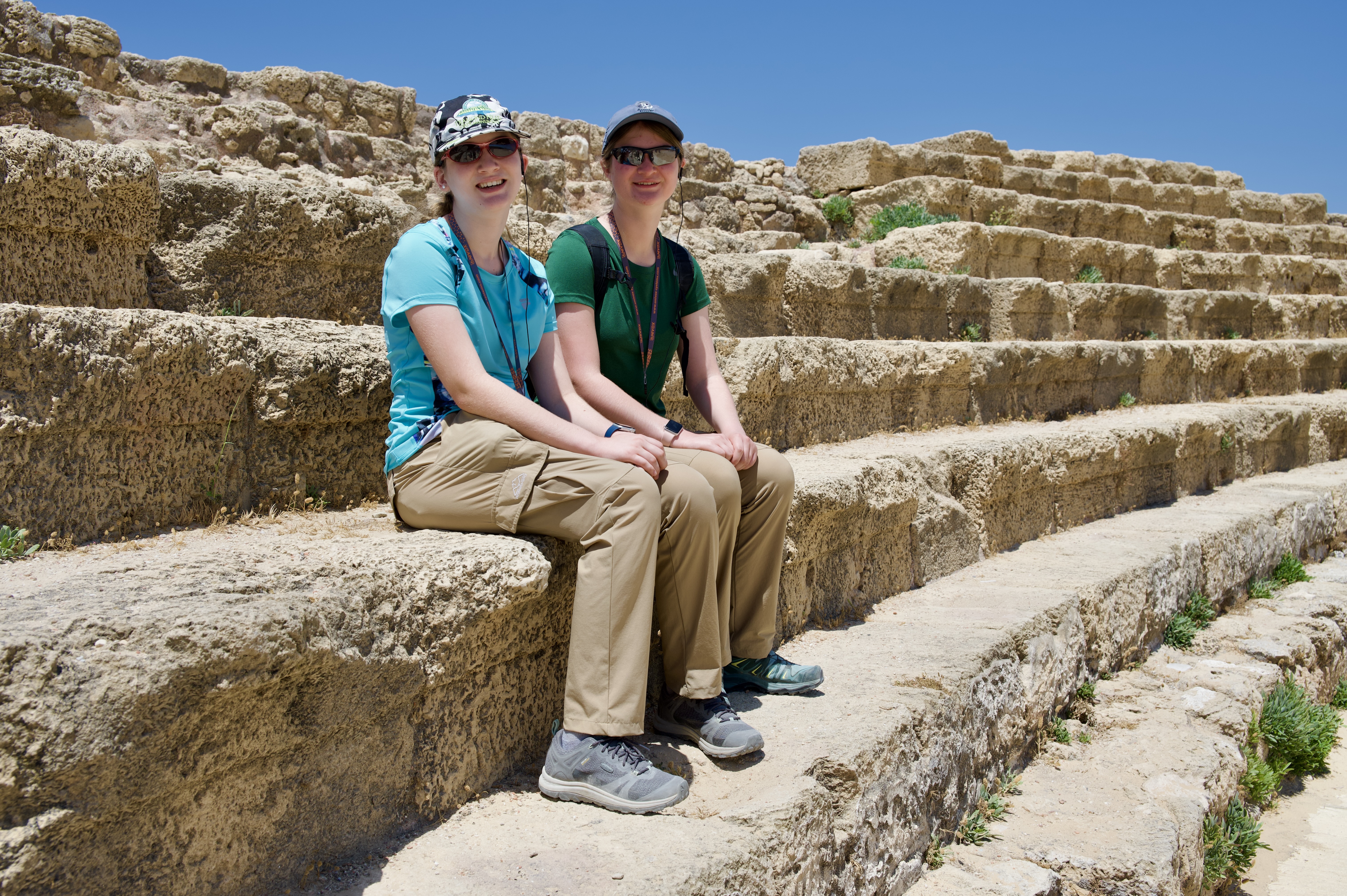
Next, we walked over to the magnificent hippodrome, which is from the late Roman period.

The hippodrome was an amphitheater as it was a complete oval and was used for games and sport rather. The side of the hippodrome near the Mediterranean has been completely consumed by the sea.
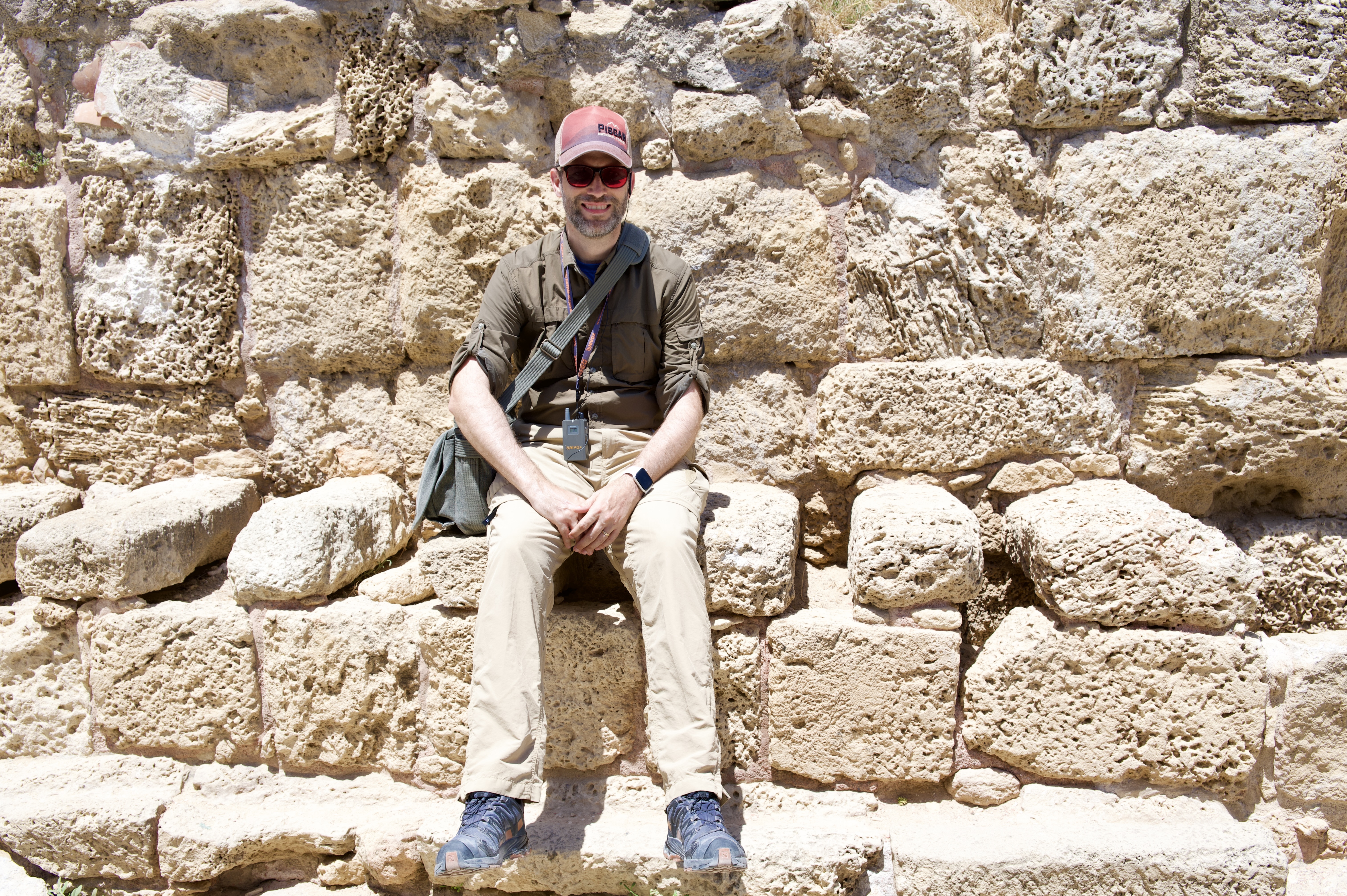
Next to the hippodrome is a public toilet like the one we saw in Bet-She’an. This time I decided to try one out (not really).
Before heading to the next area in Caesarea, we took a short break to allow the group to go down to the Mediterranean.
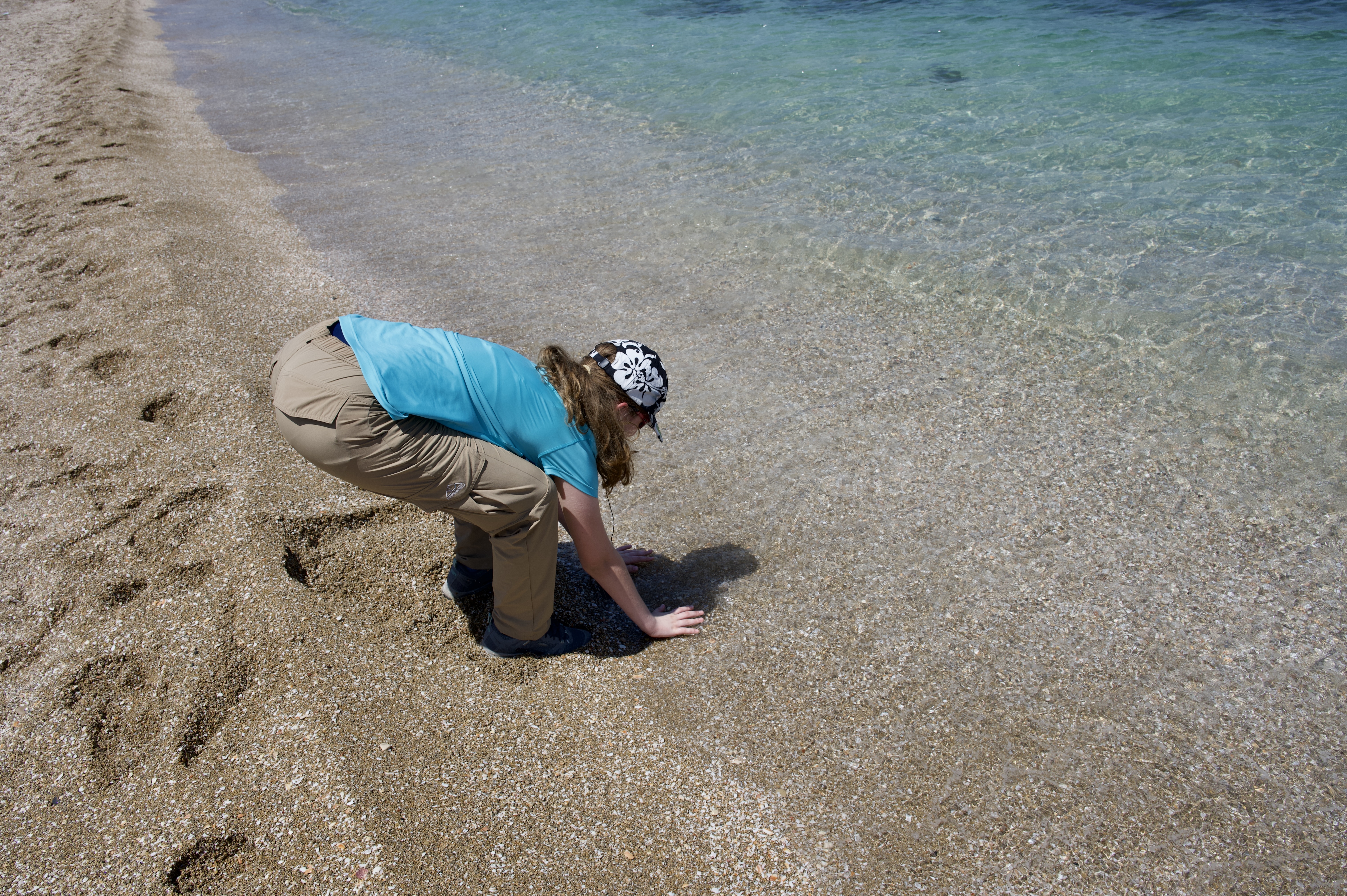
My family reached down and put our hands in the water.
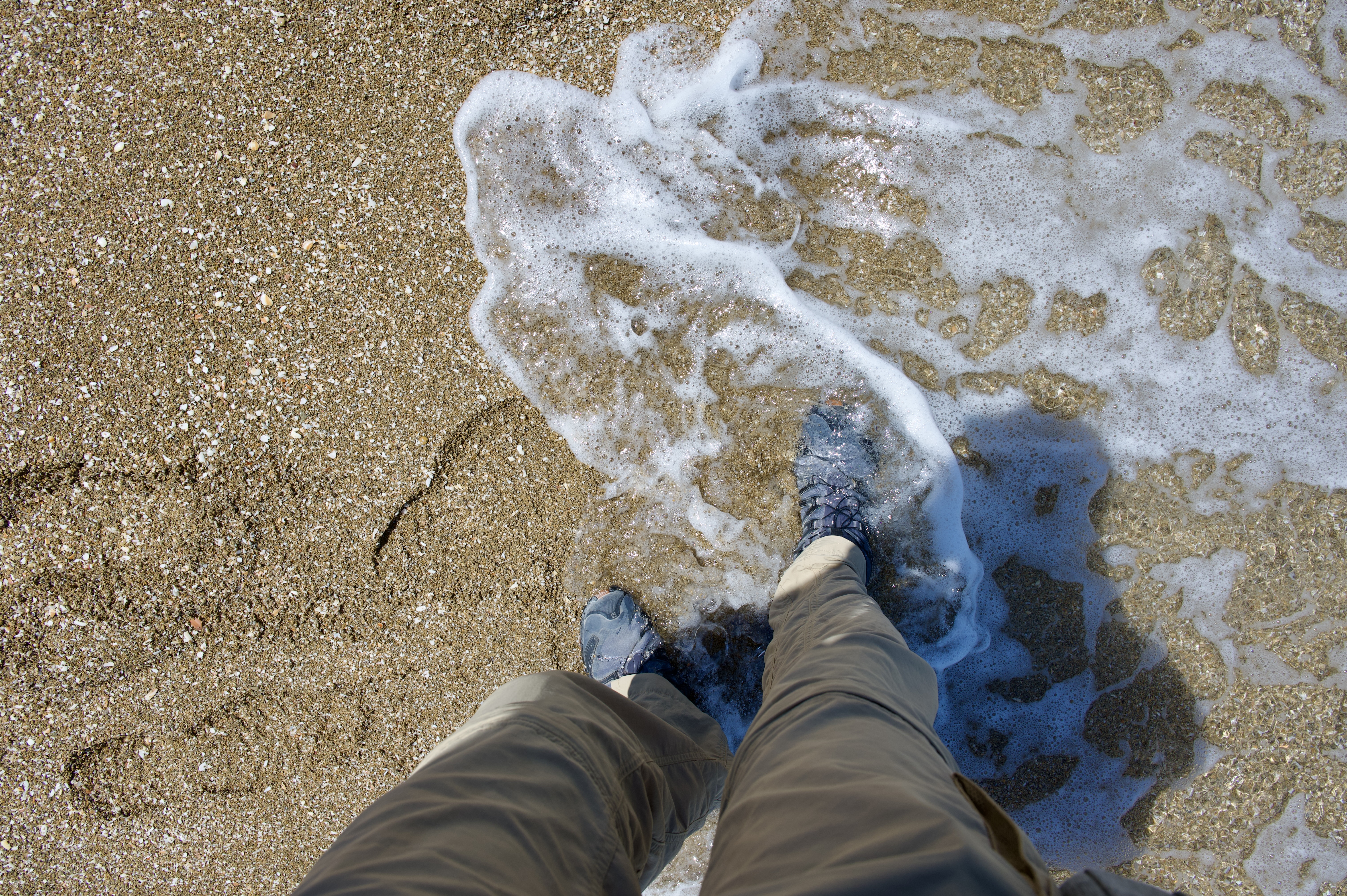
I also tried to get a picture of my foot touching the water, and just like two years ago, the water went over the top of my waterproof shoe. Squish, squish, squish.
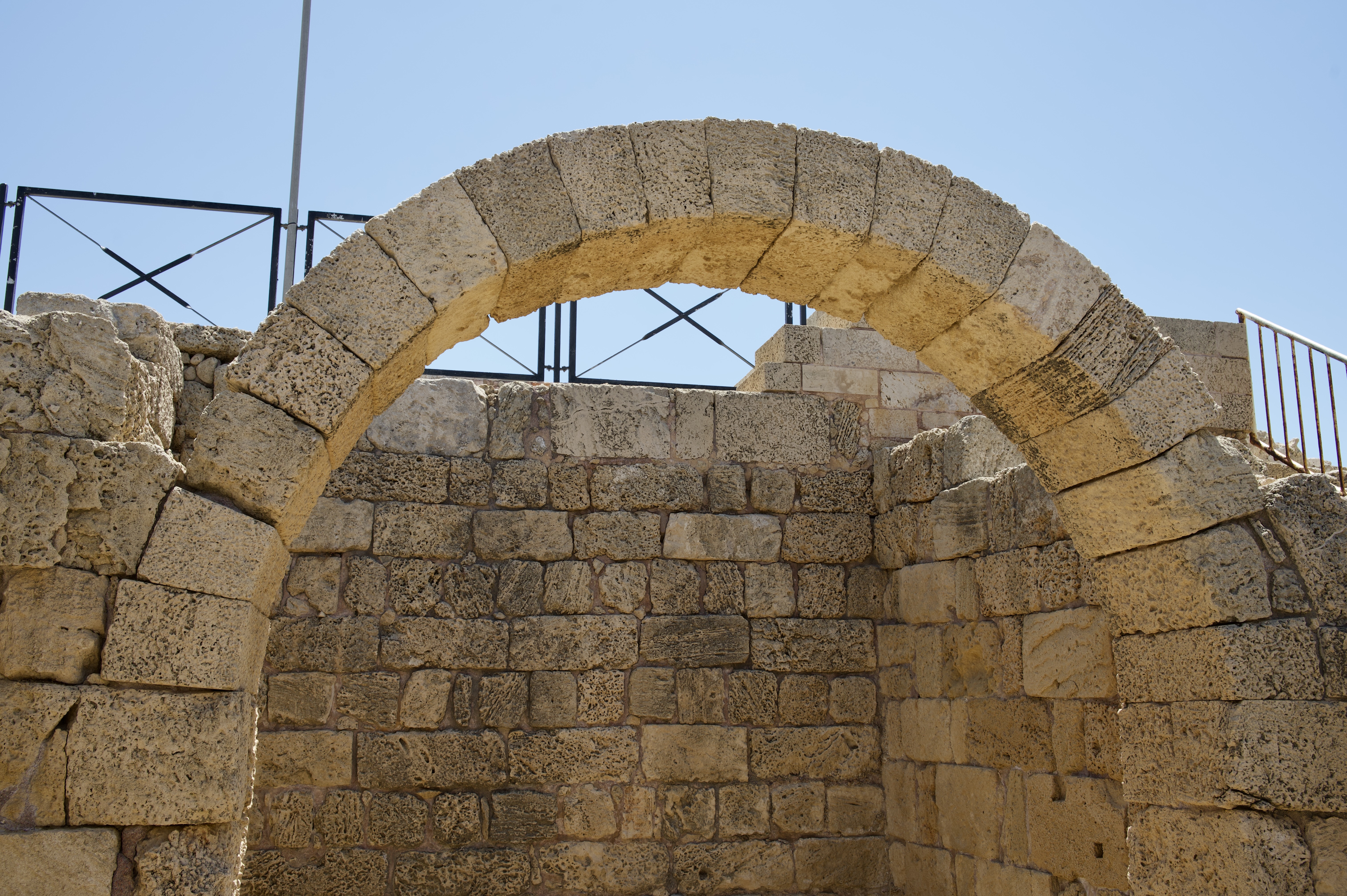
From here, we headed north along to the coast into another set of ruins. We did not visit this next part on my previous trip, so I was excited to learn about these areas. Ami showed us an example of a Roman Arch. With this type of arch, the center keystone is larger on the top than the bottom, which allows all subsequent stones to form the arch.
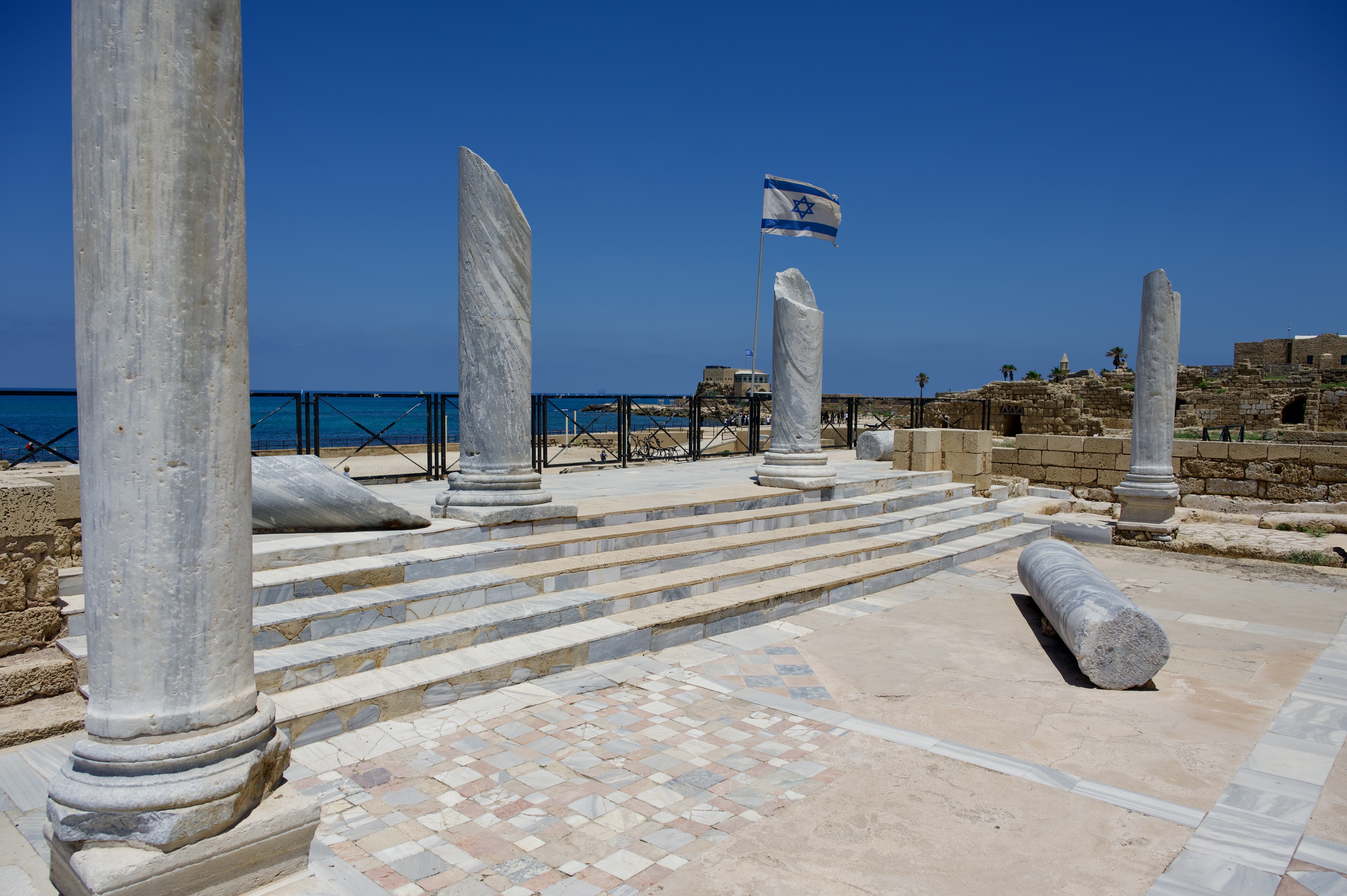
Up above this area we saw the remains of a magnificent bath house with marble columns from the late Roman period.
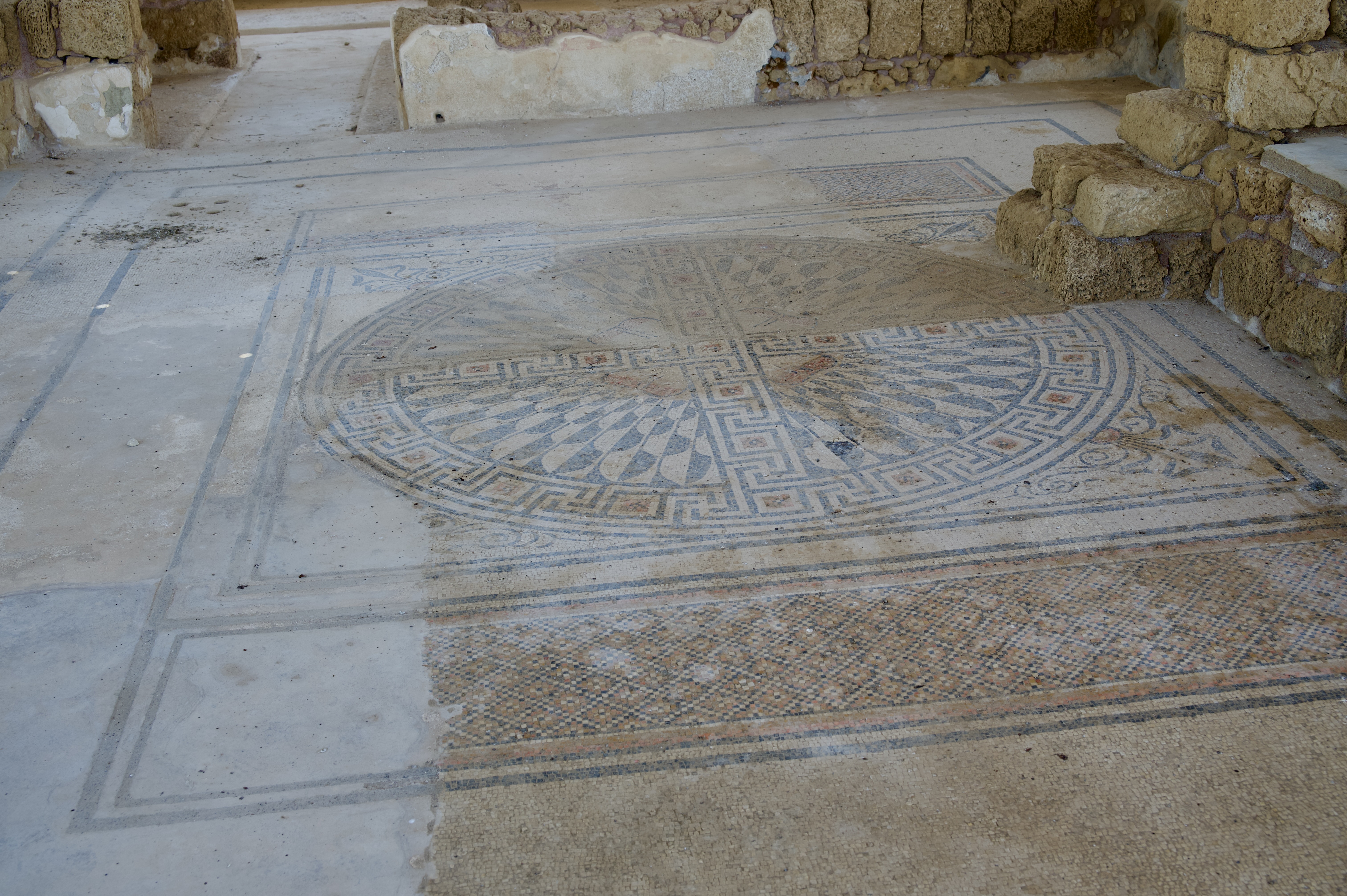
We then saw a late Roman period house with beautiful mosaic floors.
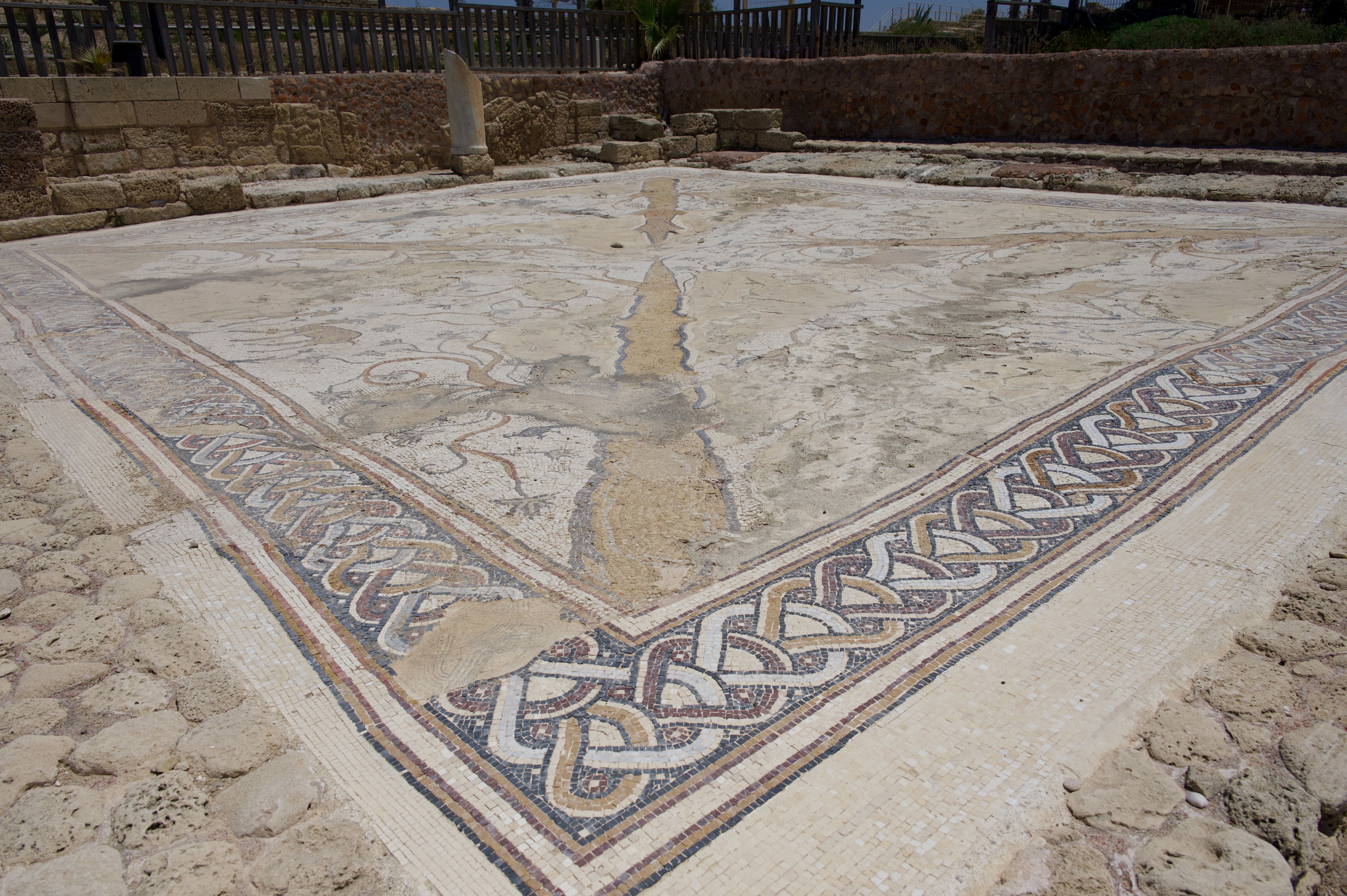
Next we went through a district believed to be from the Byzantine period, which also had some beautiful mosaics, though many of these had been damaged by earthquakes.
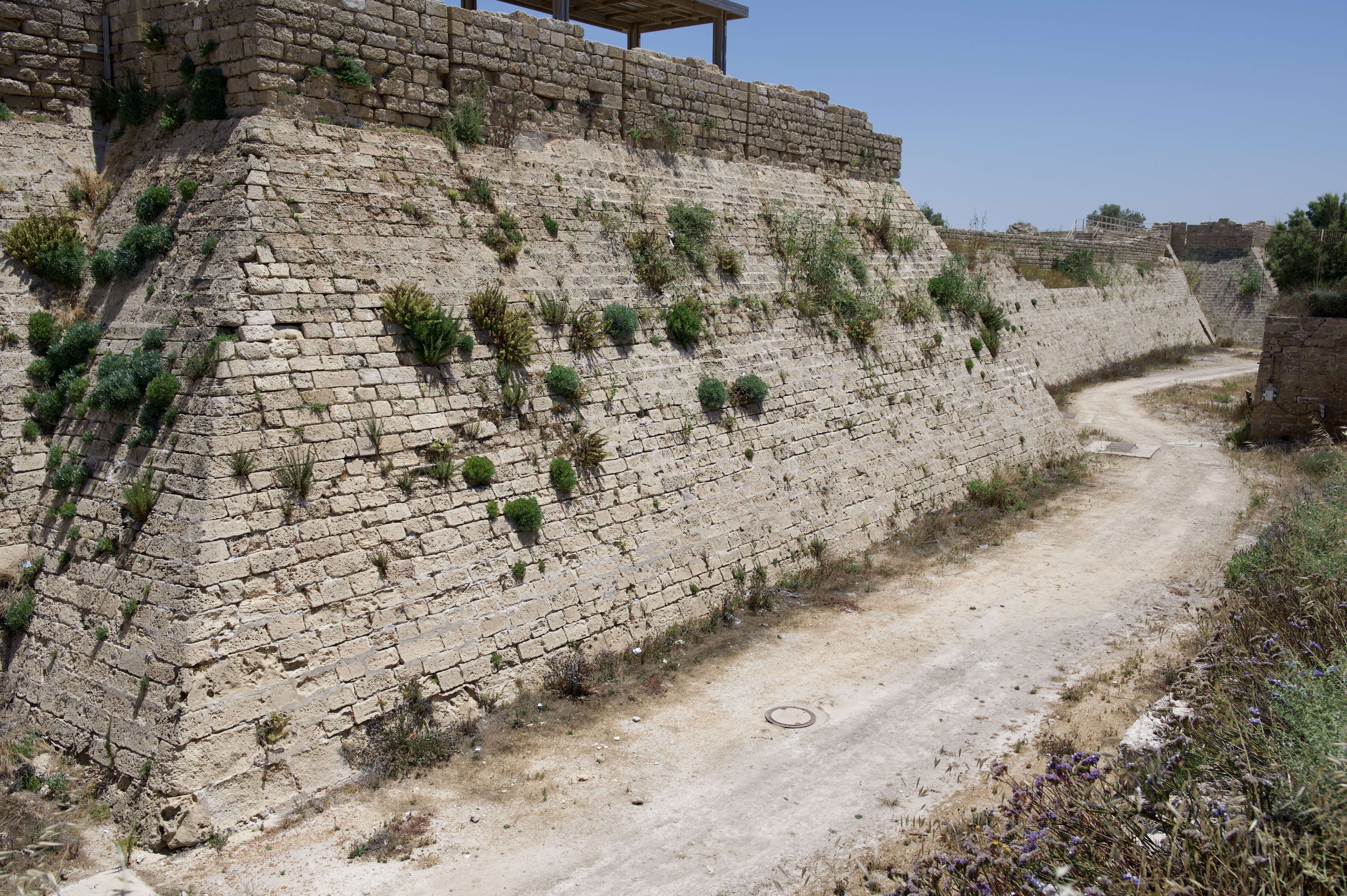
Above the Byzantine area is a Crusader period fortress with a large moat.
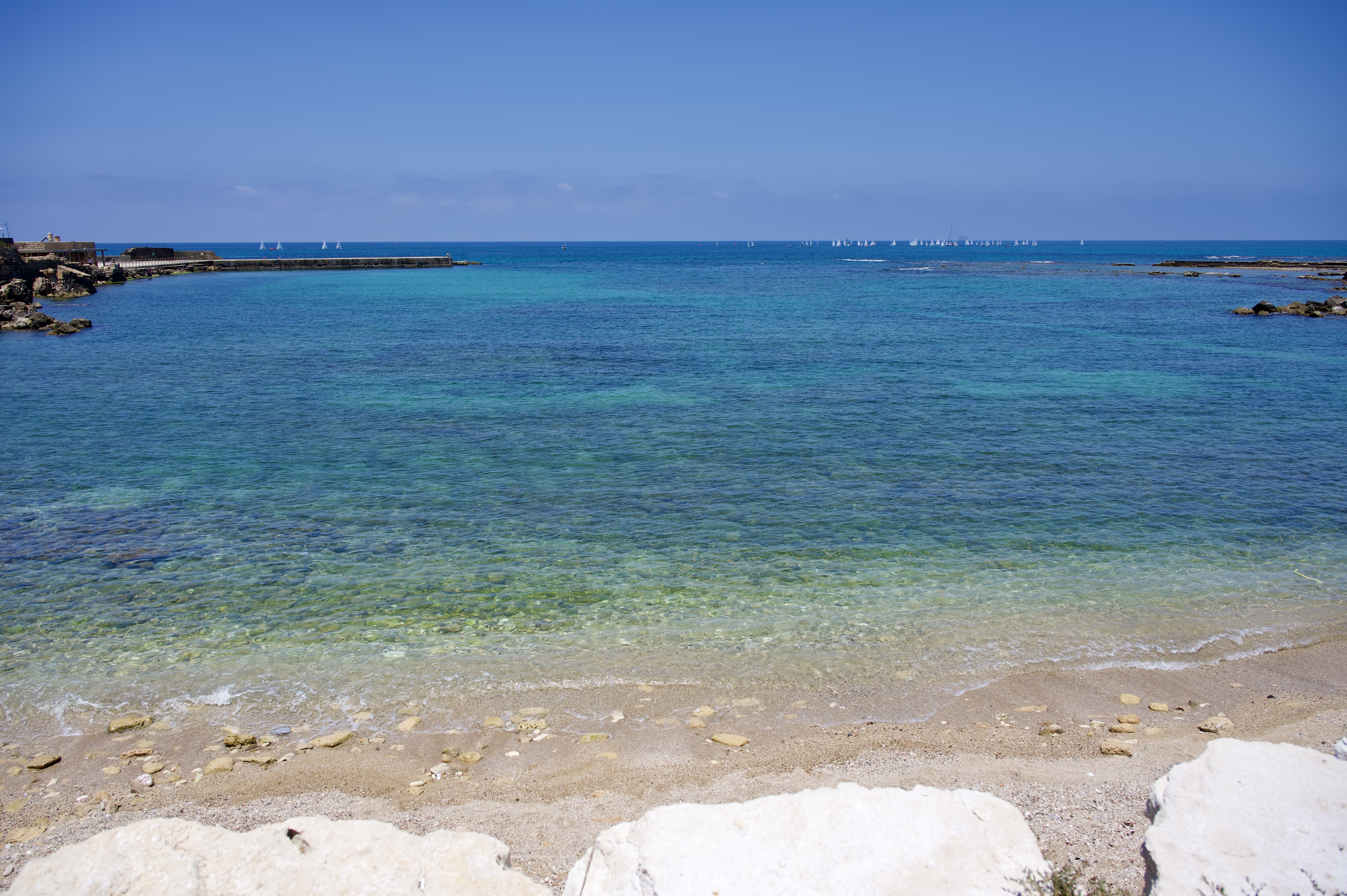
Beyond the fortress we saw the location of the harbor at Caesarea. Even though the only remaining ruins are under water, I loved seeing where it used to be located. As I was looking at the sea, I was imagining Paul embarking or disembarking here when fleeting to Tarsus, or after his missionary journeys, or on his voyage to Rome as a prisoner. I’m so glad I got to see this.
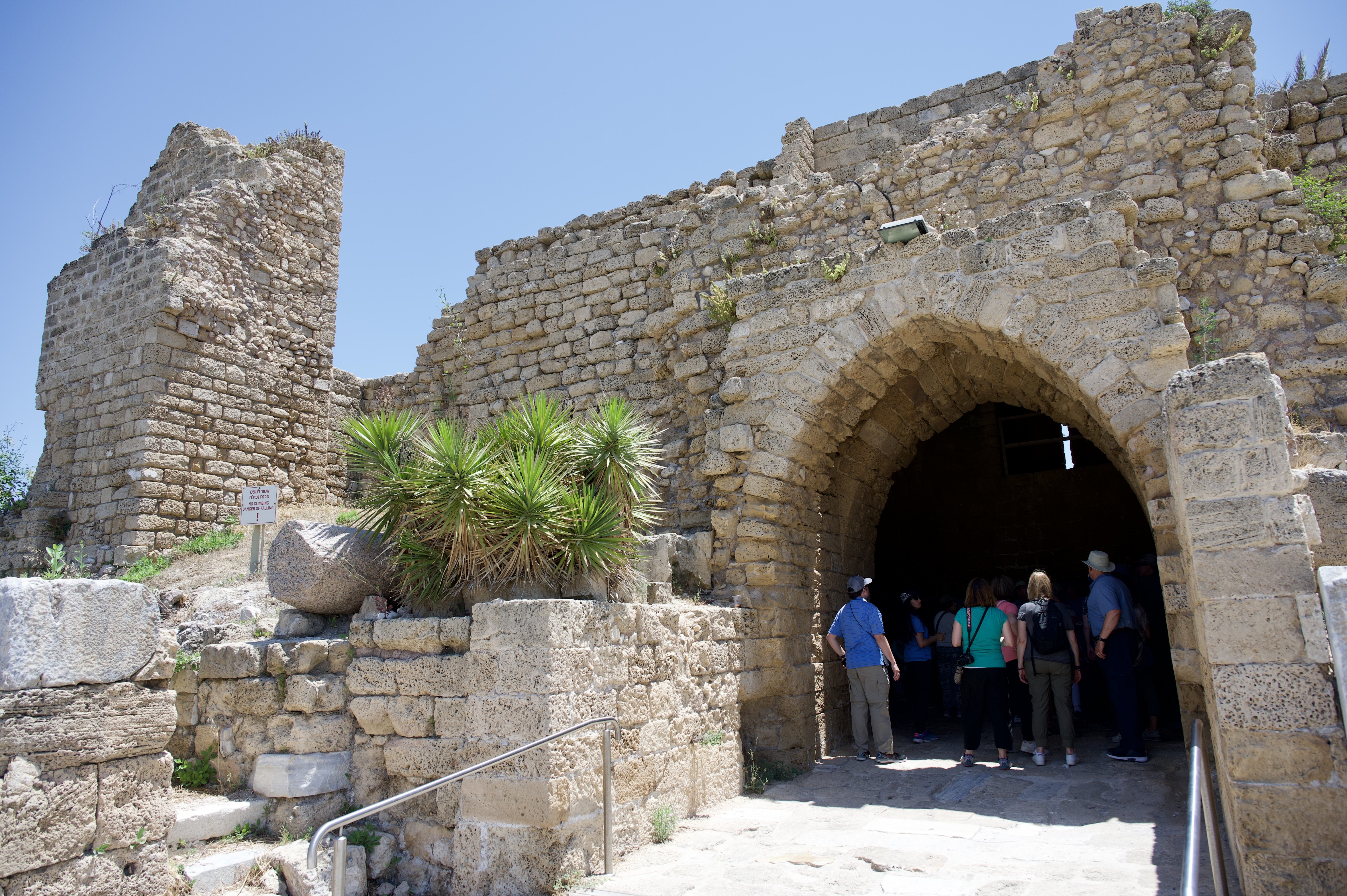
On the way out we exited through the remains of a Crusader period gate.
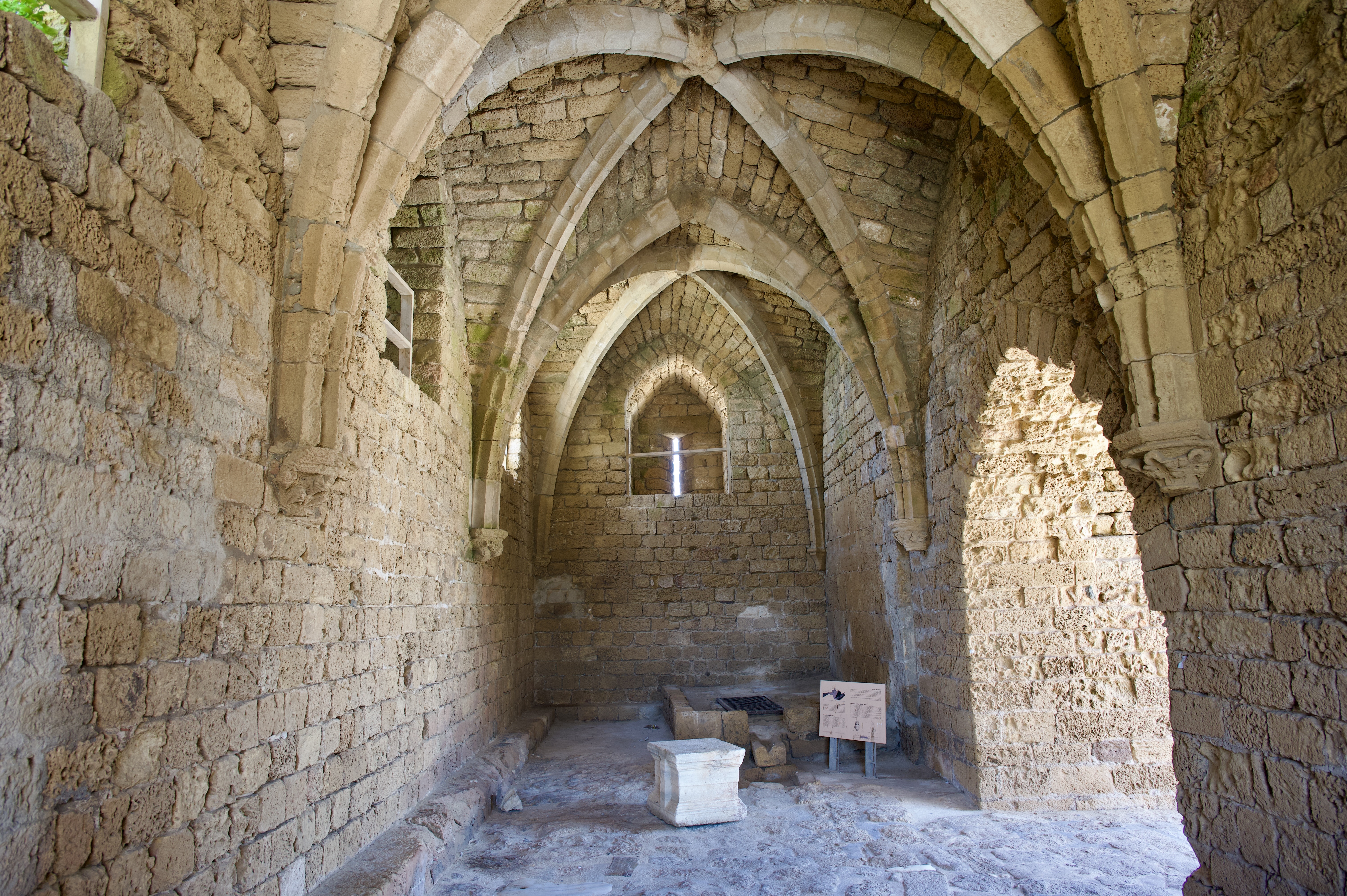
The route through this gate is shaped like an L, which Ami said was to slow down horses trying to make it through.
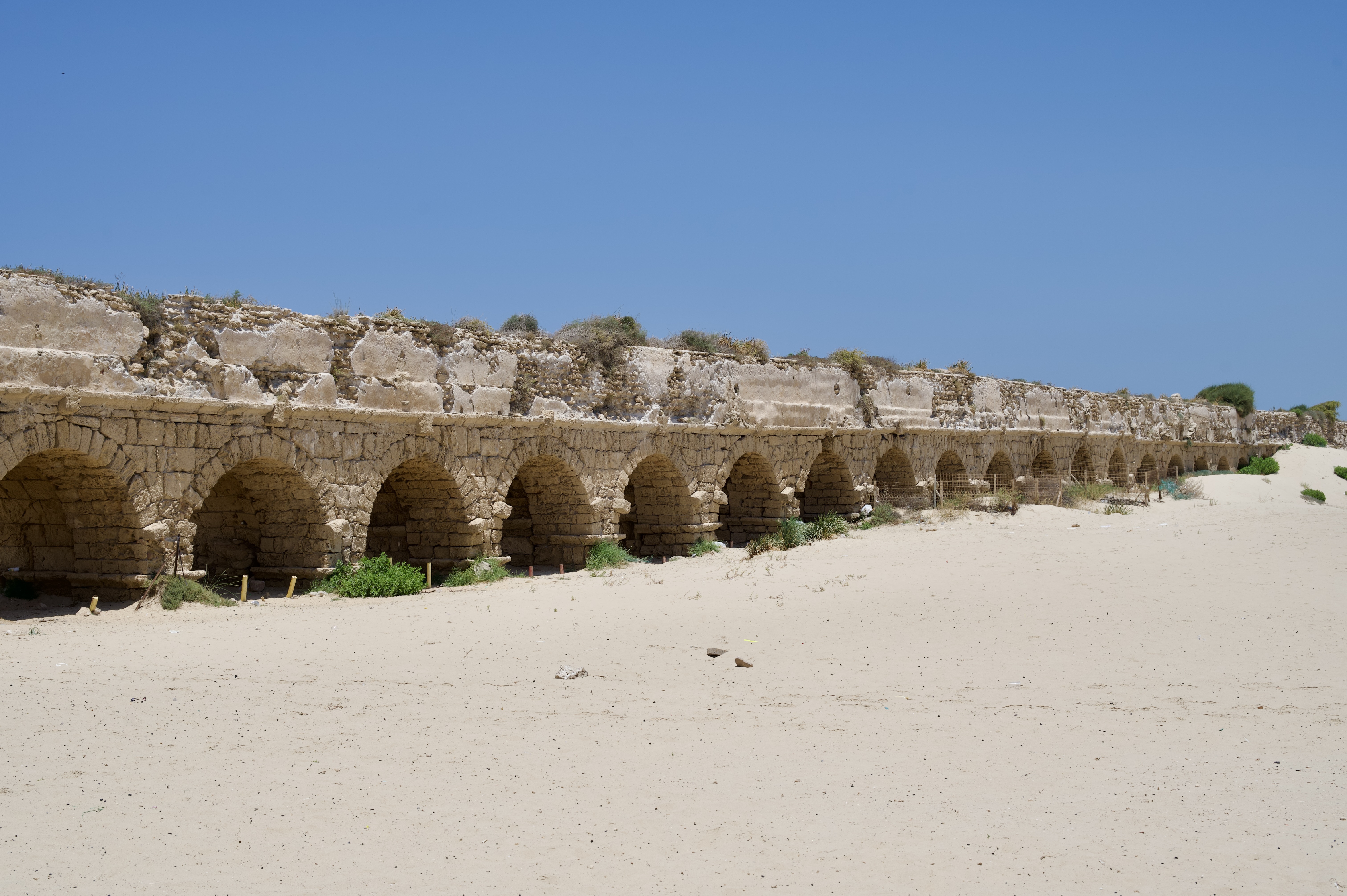
After leaving the gate, we boarded the bus for a short drive up the coast to see the remains of Herod’s aqueduct for Caesarea. Aqueduct literally means “water carrier” in Latin. It was important for cities to have a source of fresh water, and this aqueduct was built by Herod the Great to carry water approximately 8 miles from a spring on Mt. Carmel. This fresh water would have been used for daily consumption, ritual washings by the Jews, and fountains for the Romans.
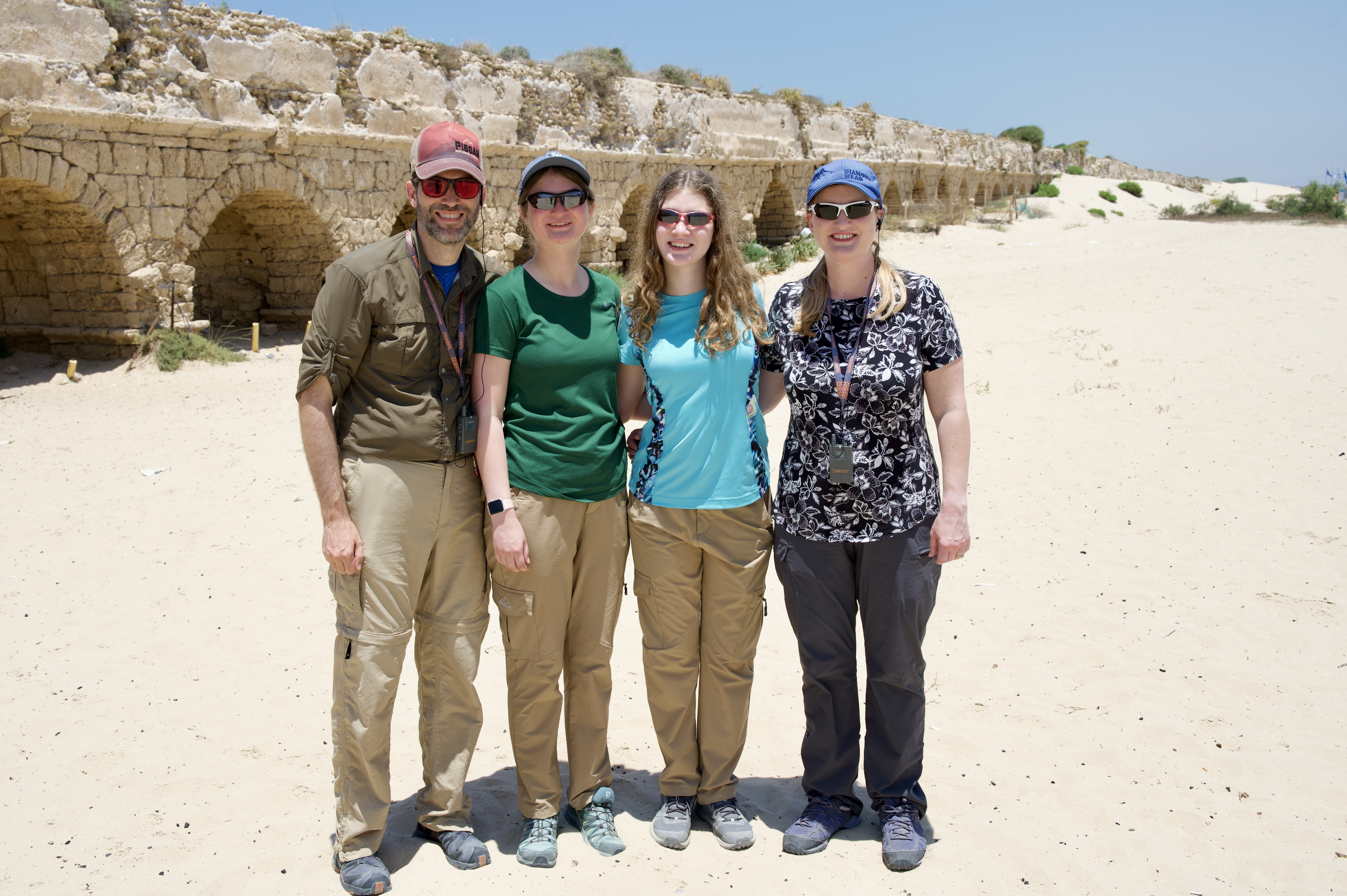
Ami said that they have found three pipes on top of this structure made from ceramic. He also said that they have found inscriptions at the aqueduct from unit 10 of the Roman Army.
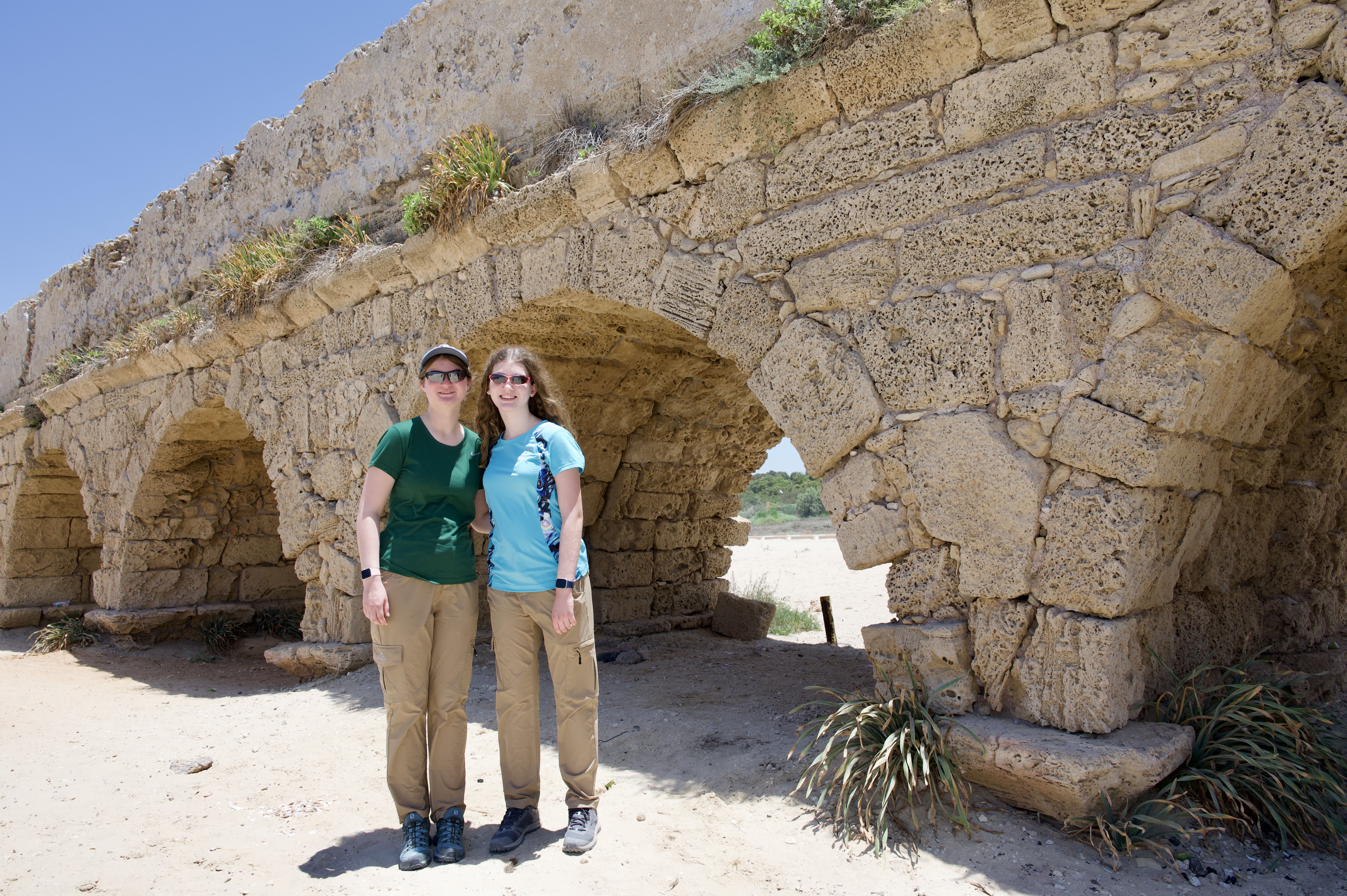
It is believed that this is the same unit that destroyed Jerusalem, and the assumption is that Herod had soldiers doing construction and maintenance work when they were not in battle.
Jezreel Valley
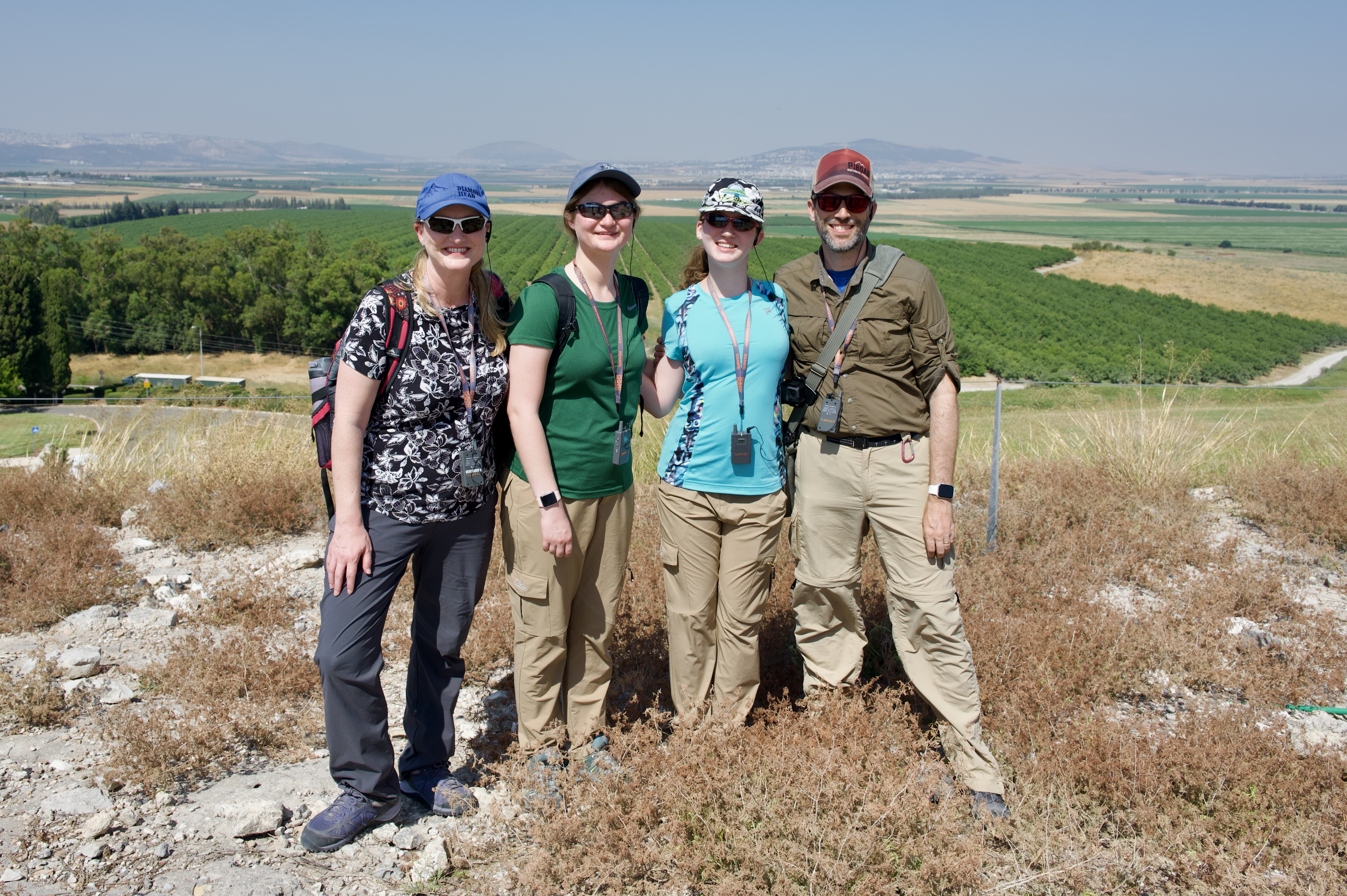
After Caesarea, we loaded the bus to head for Tel Megiddo. Even though we didn’t make a specific stop for the Jezreel Valley, Megiddo is right on the edge of this important area, and we were able to see it from the bus and from on top of Megiddo.
The valley is south of Galilee and north of the hill country of Ephraim. Deborah and Barak defeated the Canaanites in the Jezreel Valley (Judges 4–5). Gideon fought and defeated the Midianites on a hill in this valley with just 300 men (Judges 6–7). Saul camped at the spring of Jezreel before his final battle with the Philistines and his death on Mount Gilboa (1 Samuel 31).
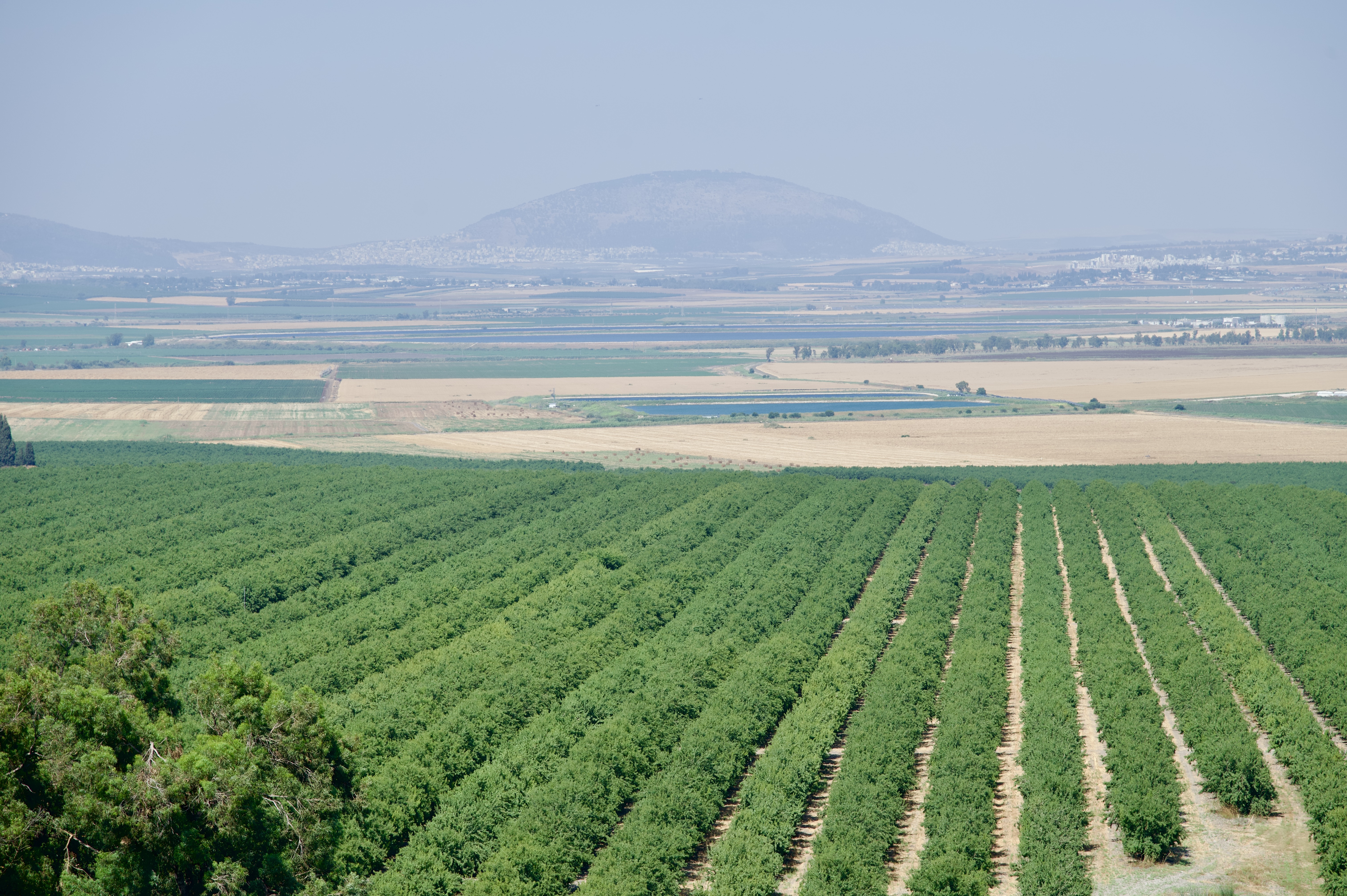
While on top of Tel Megiddo, we were able to see Mount Tabor across the valley, which is a traditional location for the transfiguration of Jesus (Matt 17:1; Mark 9:2; Luke 9:28). This spot was part of our original itinerary, but it had to be removed after missing our first day due to travel problems.
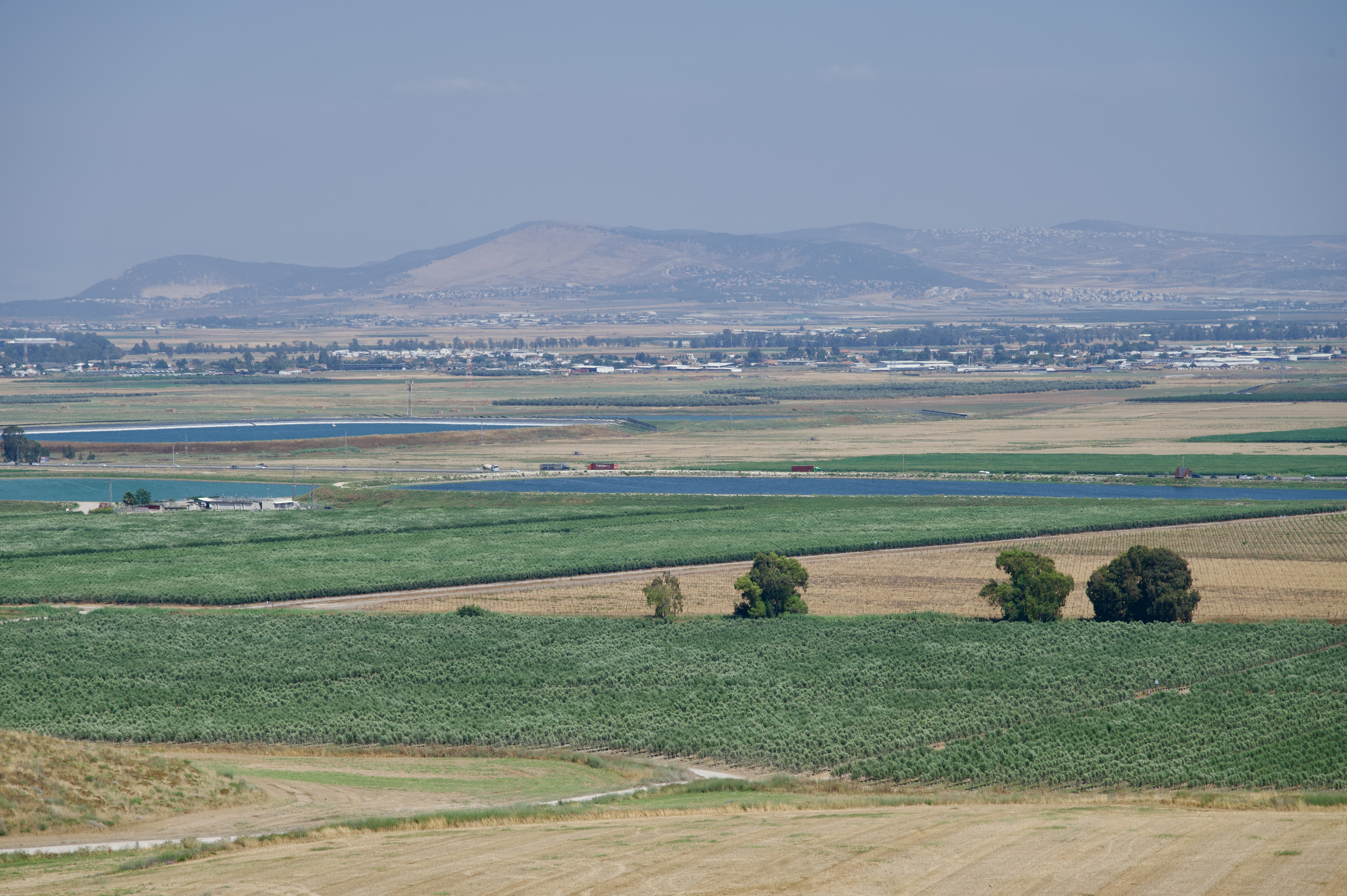
We were also able to see Mount Gilboa across the valley, which is the place where Saul and Jonathan died in I Samuel 31.
Tel Megiddo
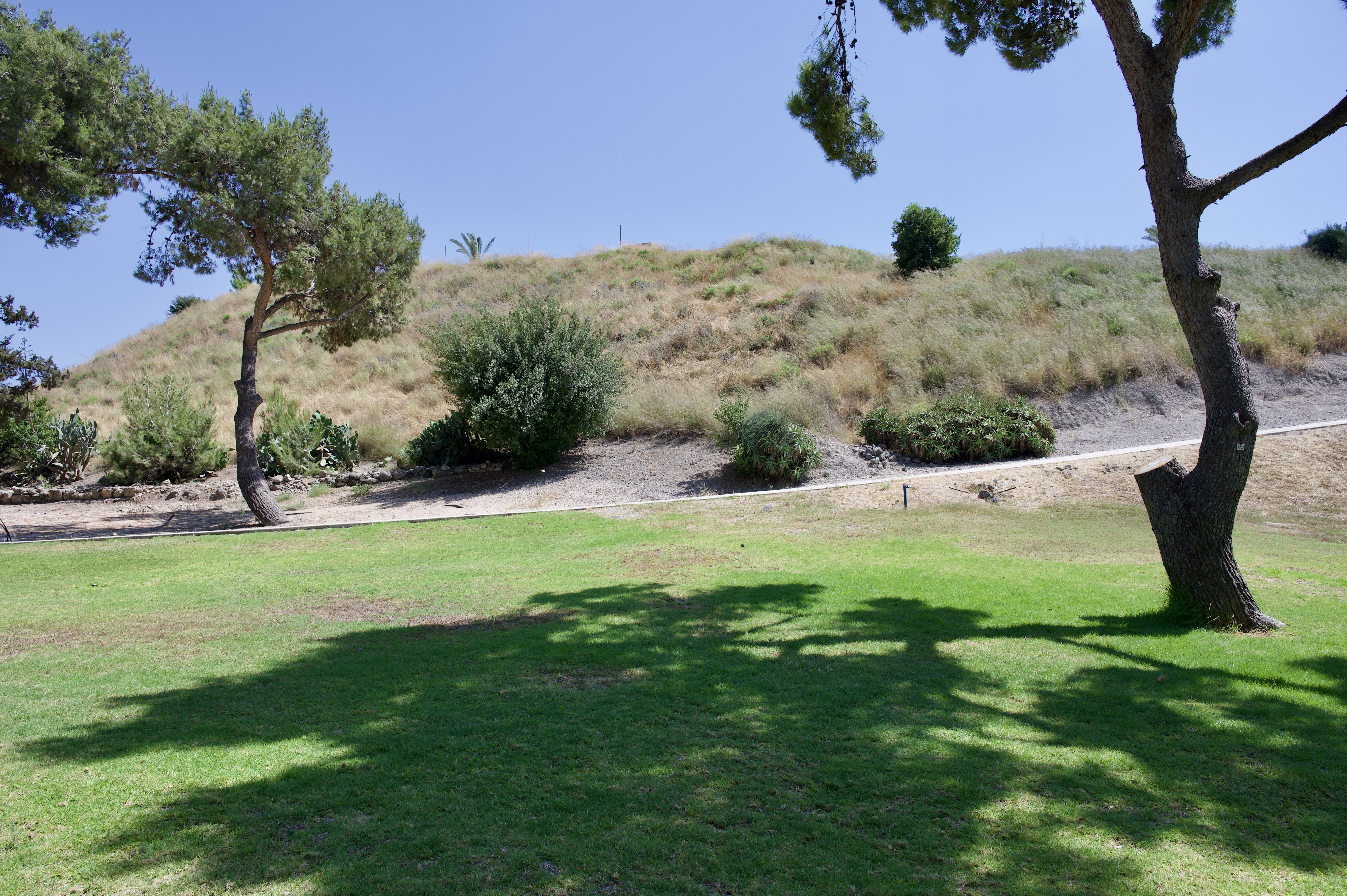
When we first arrived at Tel Megiddo, we watched a short movie about the site and then had lunch. We ate at a table with Bonnie, Sue, and Emily, and the meal was delicious. After lunch, we received word that all of us had tested negative on our COVID tests, which was a relief.
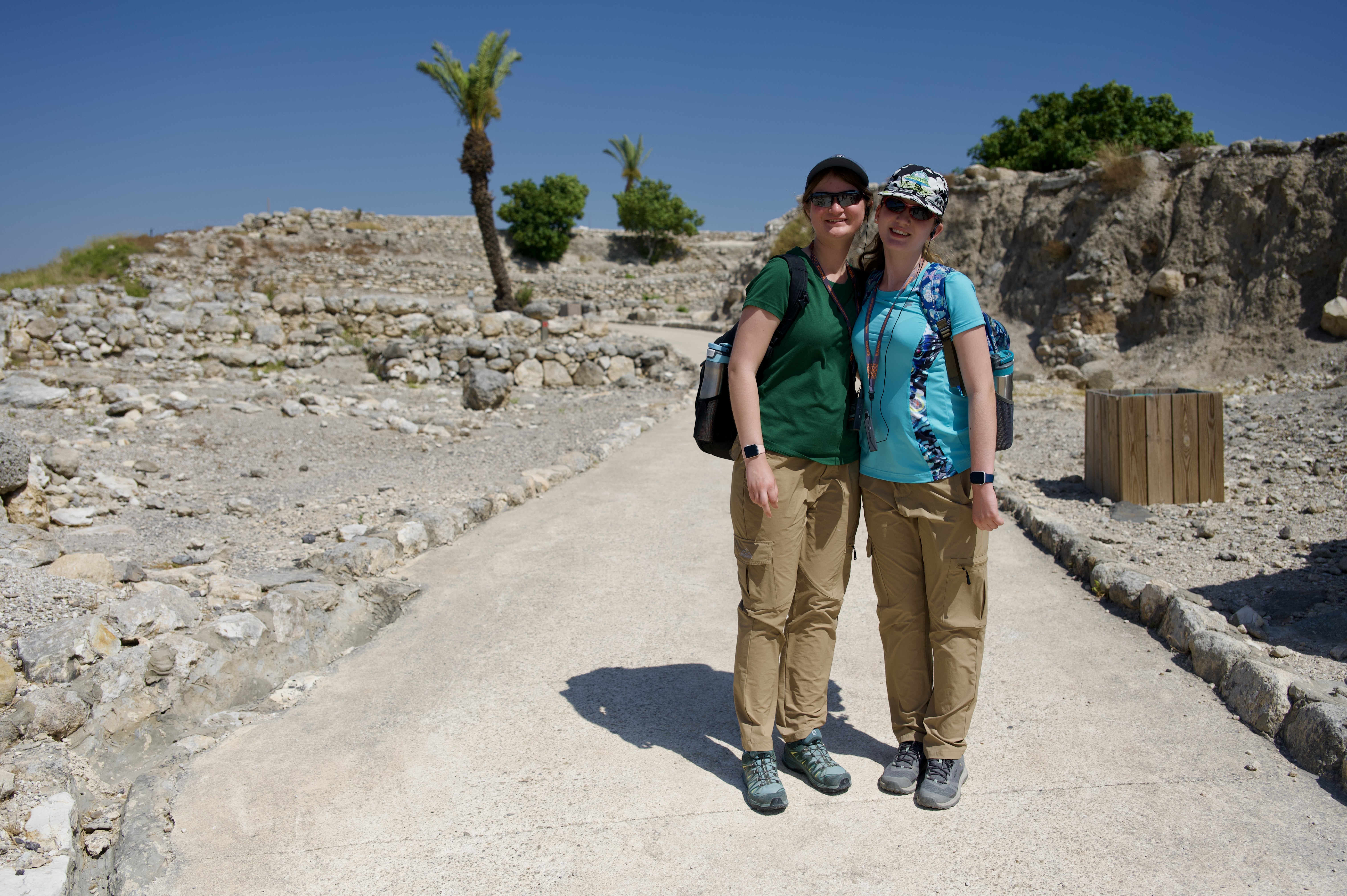
For our tour of Megiddo, we started working up the trail to the top of the Tel, and Ami told us a little about the history of Megiddo that encompasses both the Canaanite and Israelite periods.
Megiddo is a fortress city that dates to about 5,000 B.C., located on the southwest side of the Jezreel Valley at the foot of Mount Carmel.
Megiddo was a city that was located on the Via Maris, an ancient trade route linking Egypt with the northern empires of Syria, Anatolia, and Mesopotamia. Megiddo’s location on this route showed that the city was very significant.
This is also evidenced by the words of Pharaoh Thutmose III (15th century B.C.) of Egypt, “… for the capturing of Megiddo is the capturing of a thousand cities.”
Megiddo was destroyed 30 times by waves of conquerors, and this has resulted in 30 levels or strata that comprise the Tel.
In scripture, Megiddo is referenced 12 times in the Old Testament.
*Megiddo is mentioned among the cities conquered by Joshua (Josh 12:21) – apparently, they were unsuccessful at fully driving out the Canaanites (Josh 17:11).
*During the reign of Solomon, Megiddo was fortified along with Gezer and Hazor (1 Kgs 9:15).
*The city fell to Shishak (925 BC) and to Tiglath-pileser III in 733 BC.
*Josiah died at Megiddo in 609 BC in his confrontation with Pharaoh Neco (2 Kgs 23:29).
*According to tradition this will be the site of Armageddon as described in Revelation 16 (Most likely this association is symbolic)
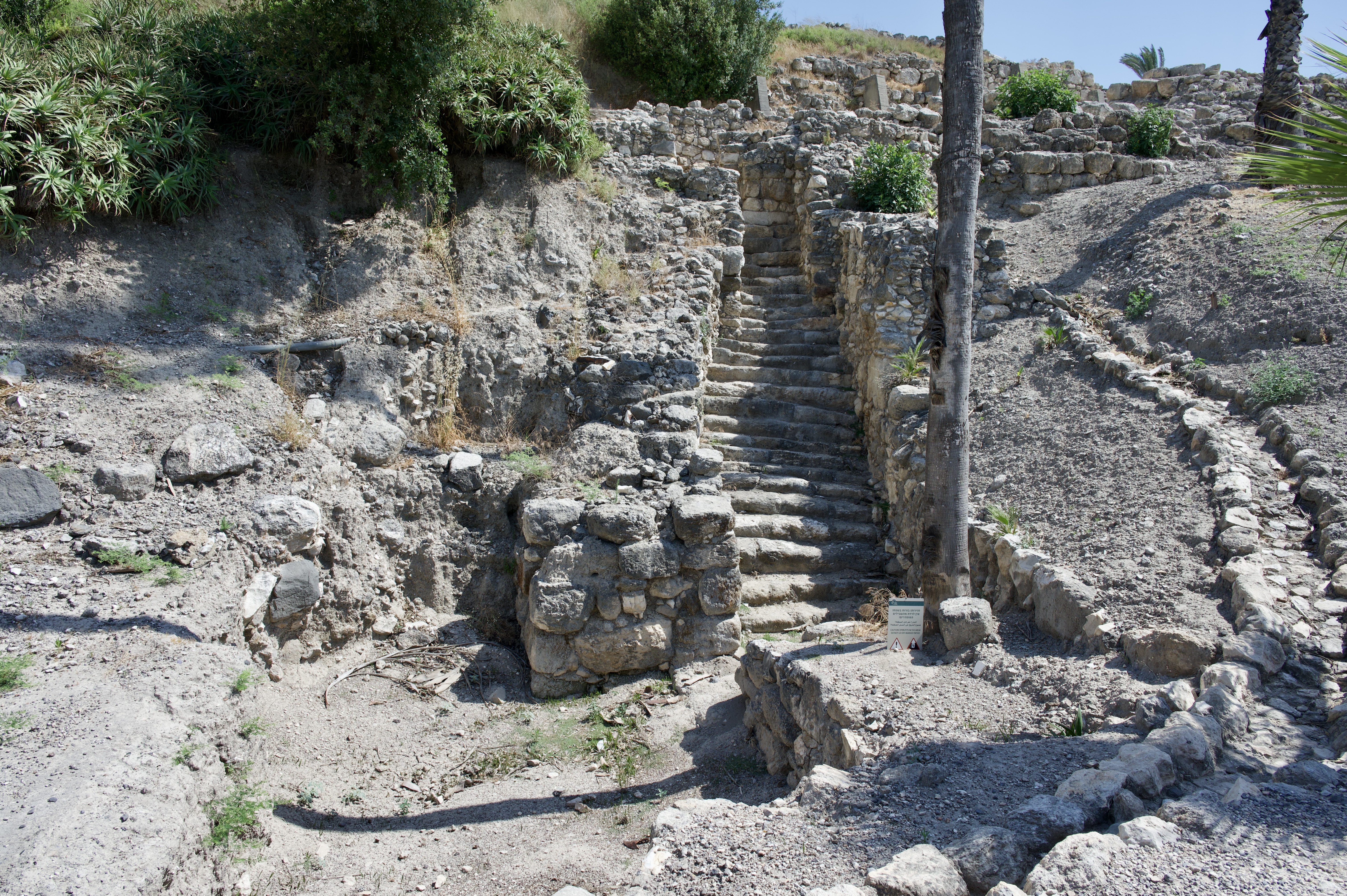
As we climbed up the trail, Ami showed us an ancient staircase from the Canaanite period before the children of Israel took the promised land).
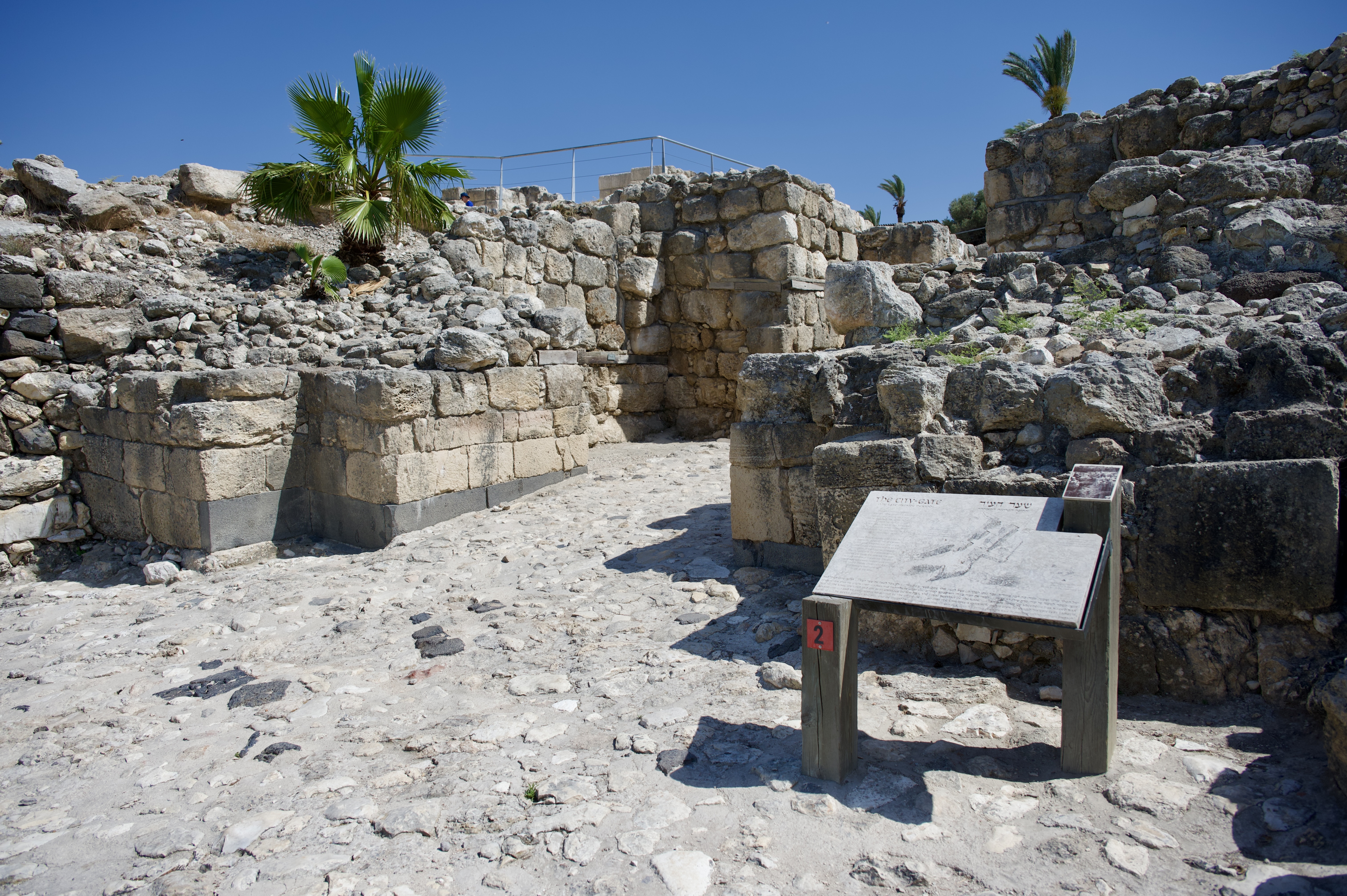
Next we say the main gate from the Canaanite period. This has been dated to approximately the 16th century B.C. This means that it is 3500 years old, and it was the only way in and out of city.
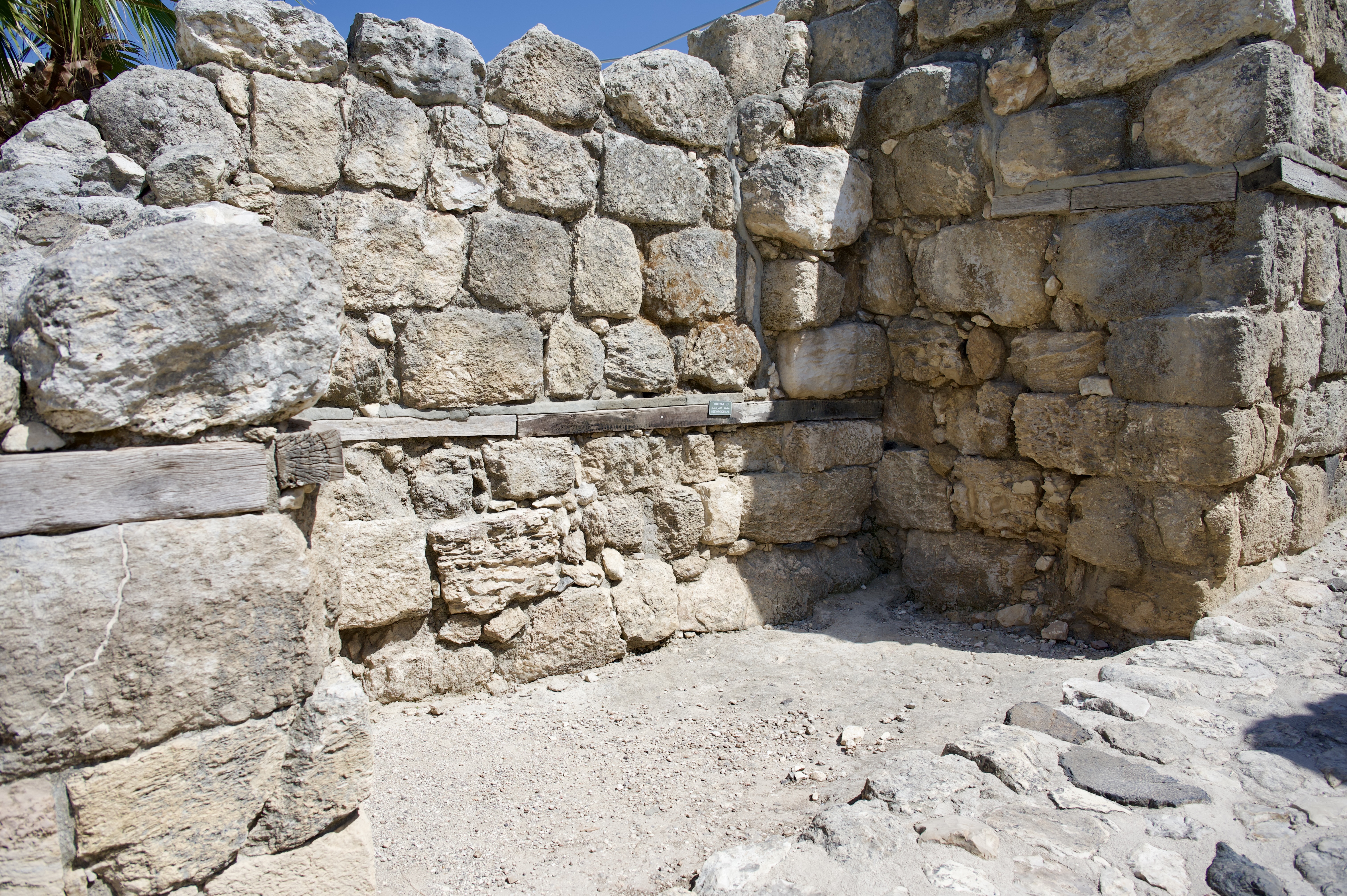
The gate had multiple rooms on either side of it, and Ami said this was for the collection of taxes from those who entered the city.
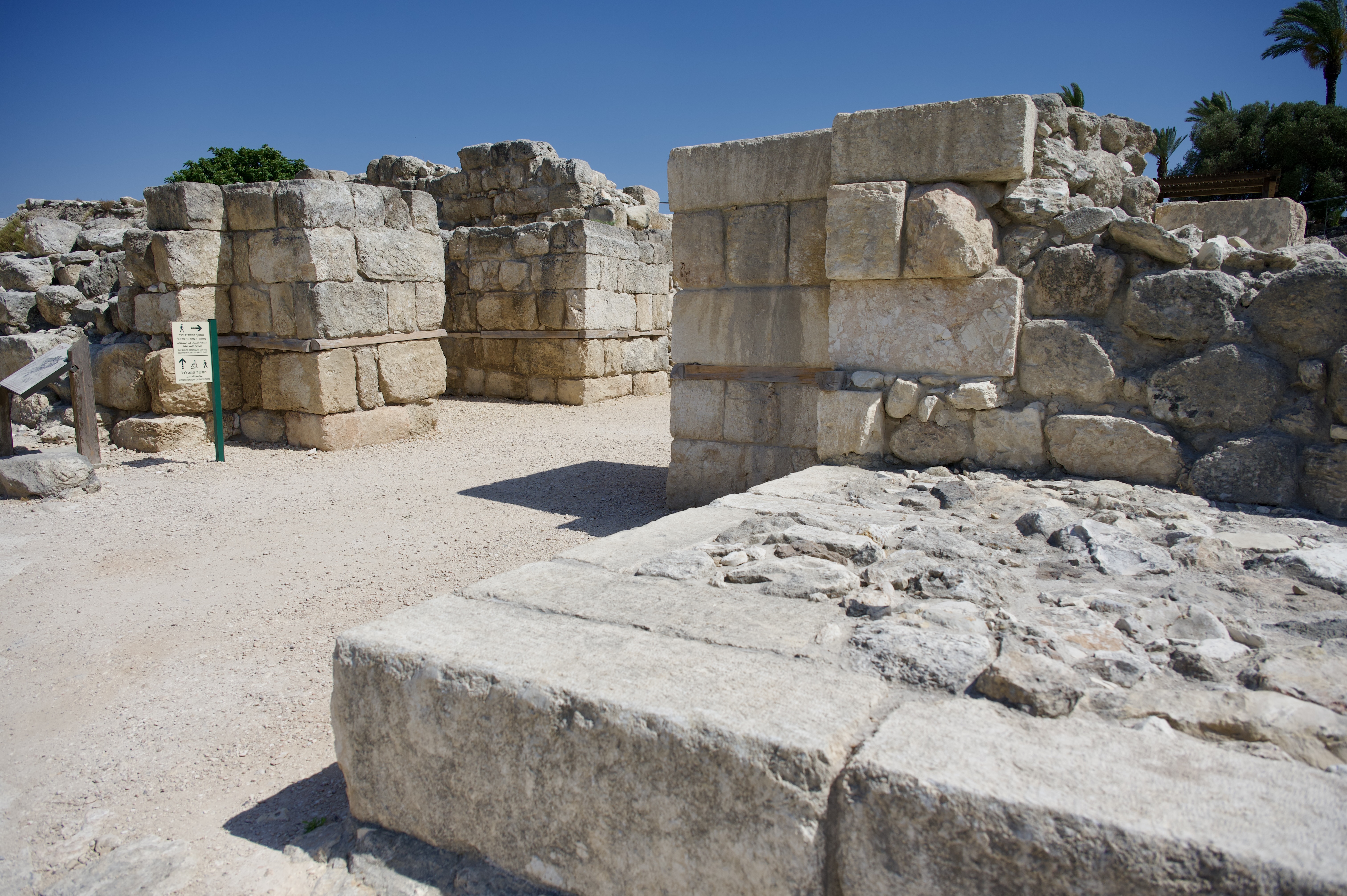
Further up the site, on a different stratum, there is a partially restored gate from 10th century B.C. (approximate time of Solomon). When I was here two years ago, this gate was partially destroyed getting to the lower gate from the 16th century, which is one of the major challenges of archaeology. A lot of restoration had been done in 2 years.
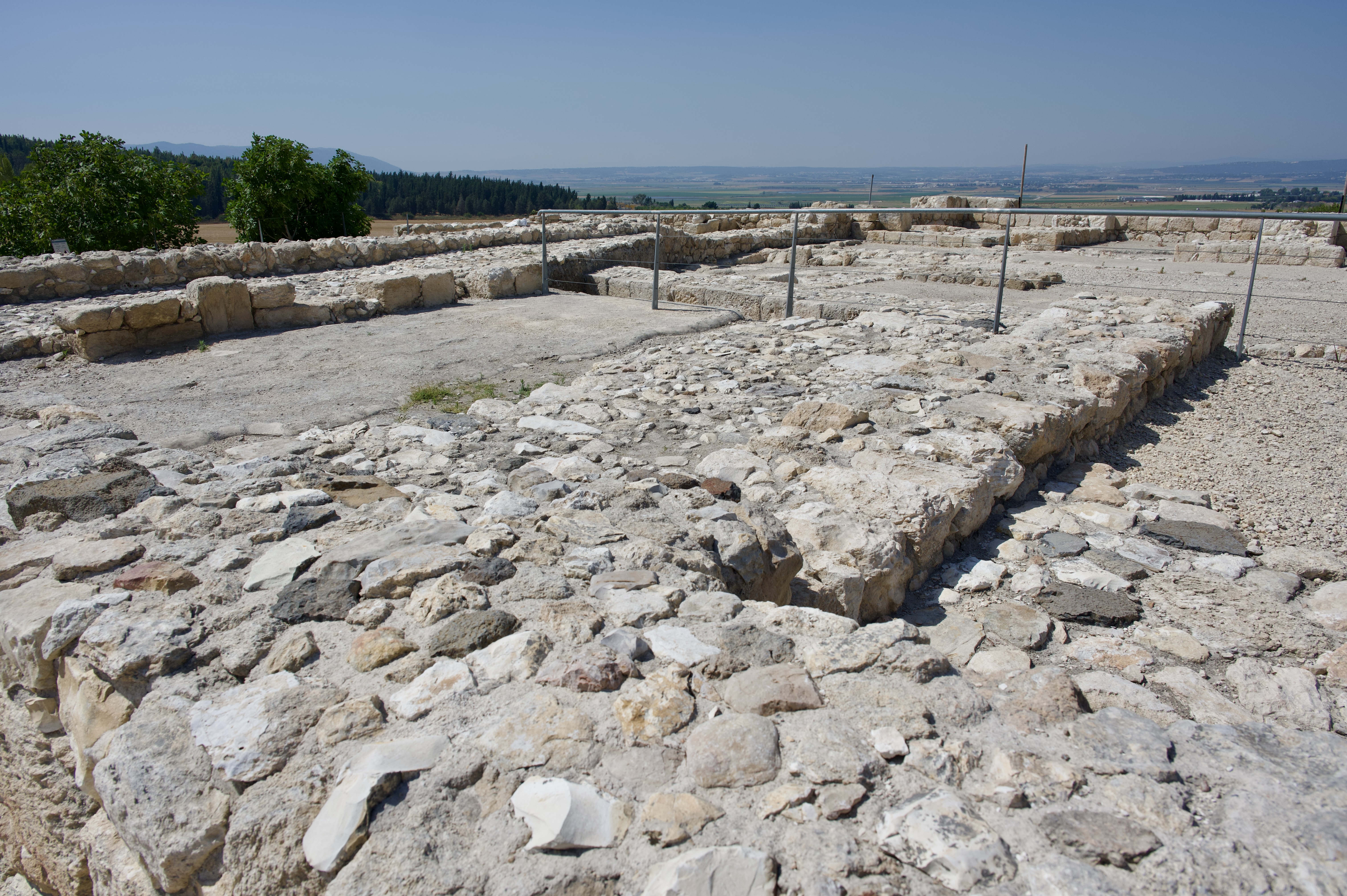
The next thing we saw were the remains of the Northern Palace and Stable. Most agree that this if from the Israelite period, but scholars are quite divided about whether this was from Solomon’s time (10th century BC) or Ahab’s time (9th century BC).
From here, Ami took us up to the top of the Tel and talked to us about the Jezreel Valley, which spread out below us.
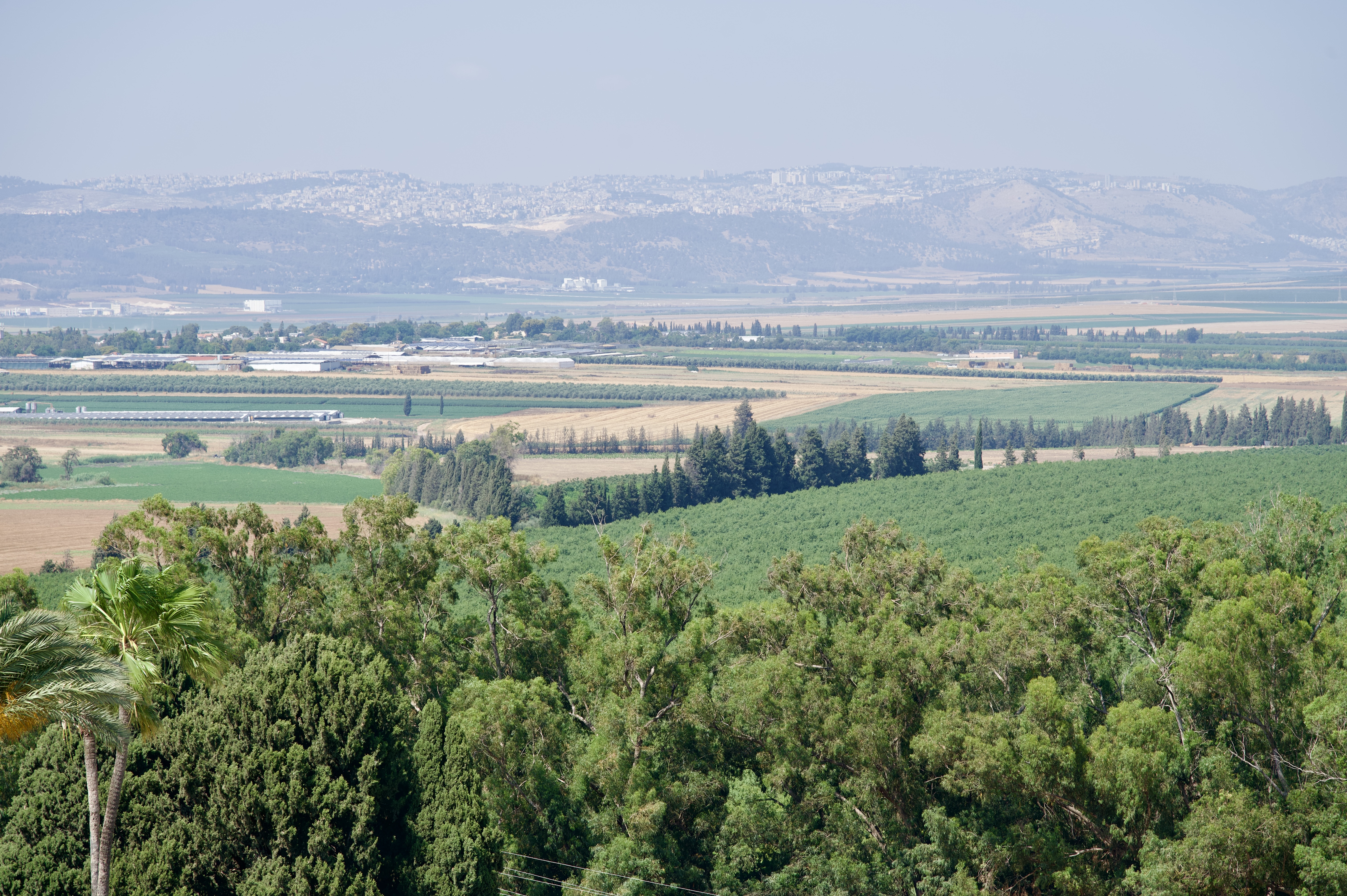
In addition to the things I described above, we were also able to see the modern day city of Nazareth across the valley as well as Mt. Carmel, which is northwest of Megiddo.
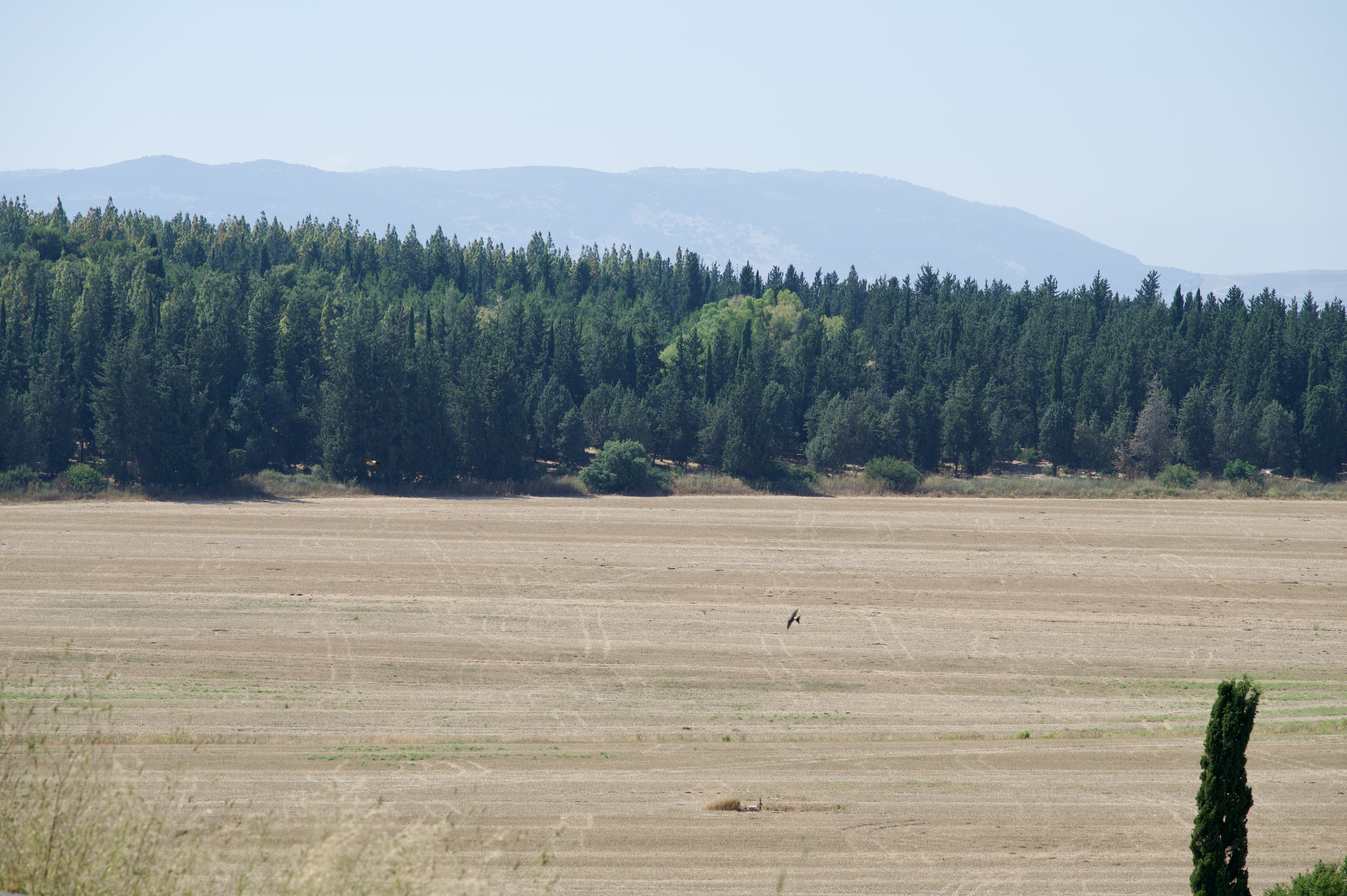
Mt. Carmel is the location where Elijah defeated the prophets of Baal in 1 Kings 18:20-40.
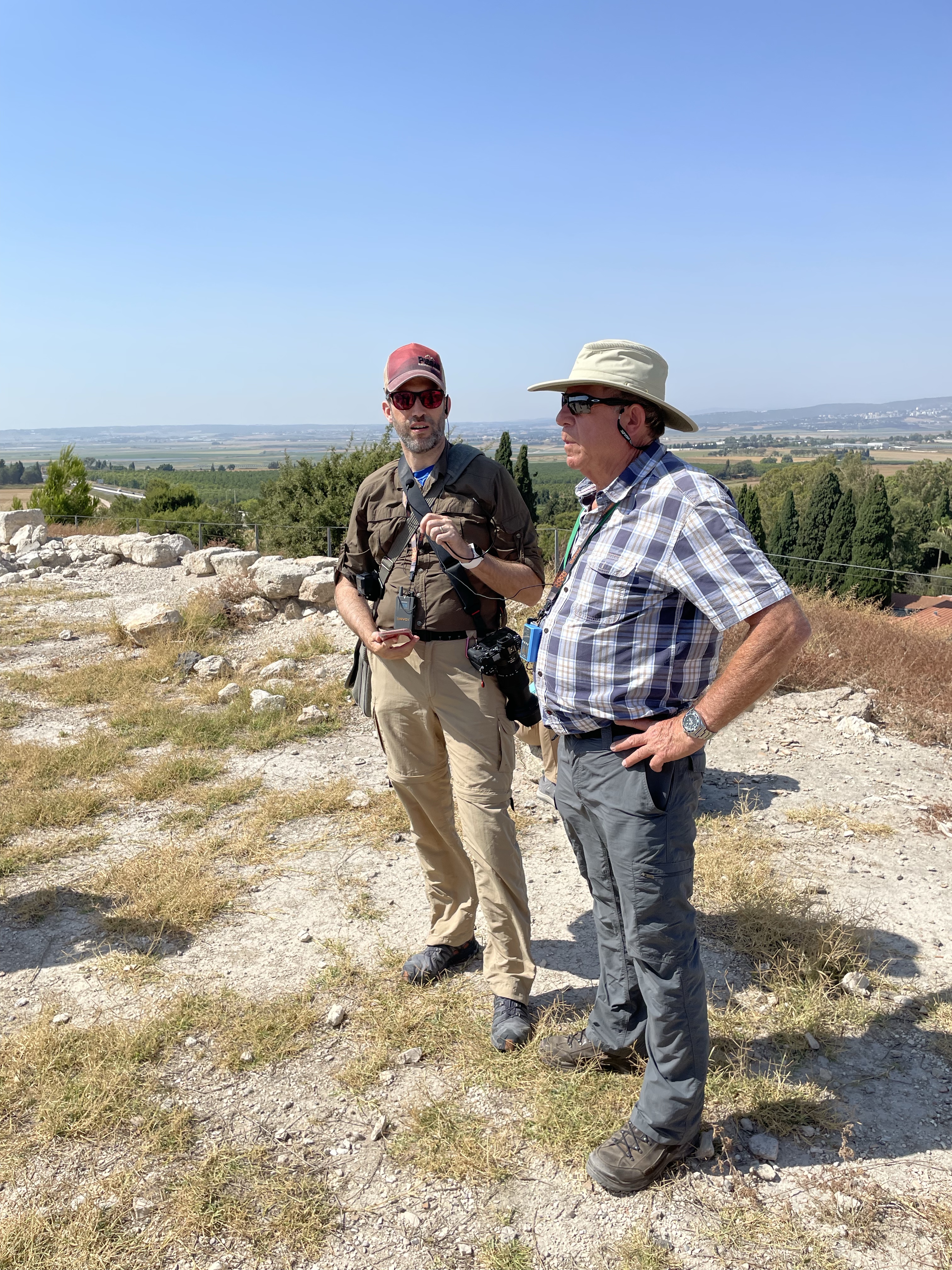
I talked to the group about my belief that John’s use of “Armageddon” was Revelations was not intended to mean that the final battle would physically take place at Megiddo but was used metaphorically because there were so many battles that took place at this site (Ami had earlier said something similar). I also read from 2 Kings 23 which mentions that King Josiah died at Megiddo.
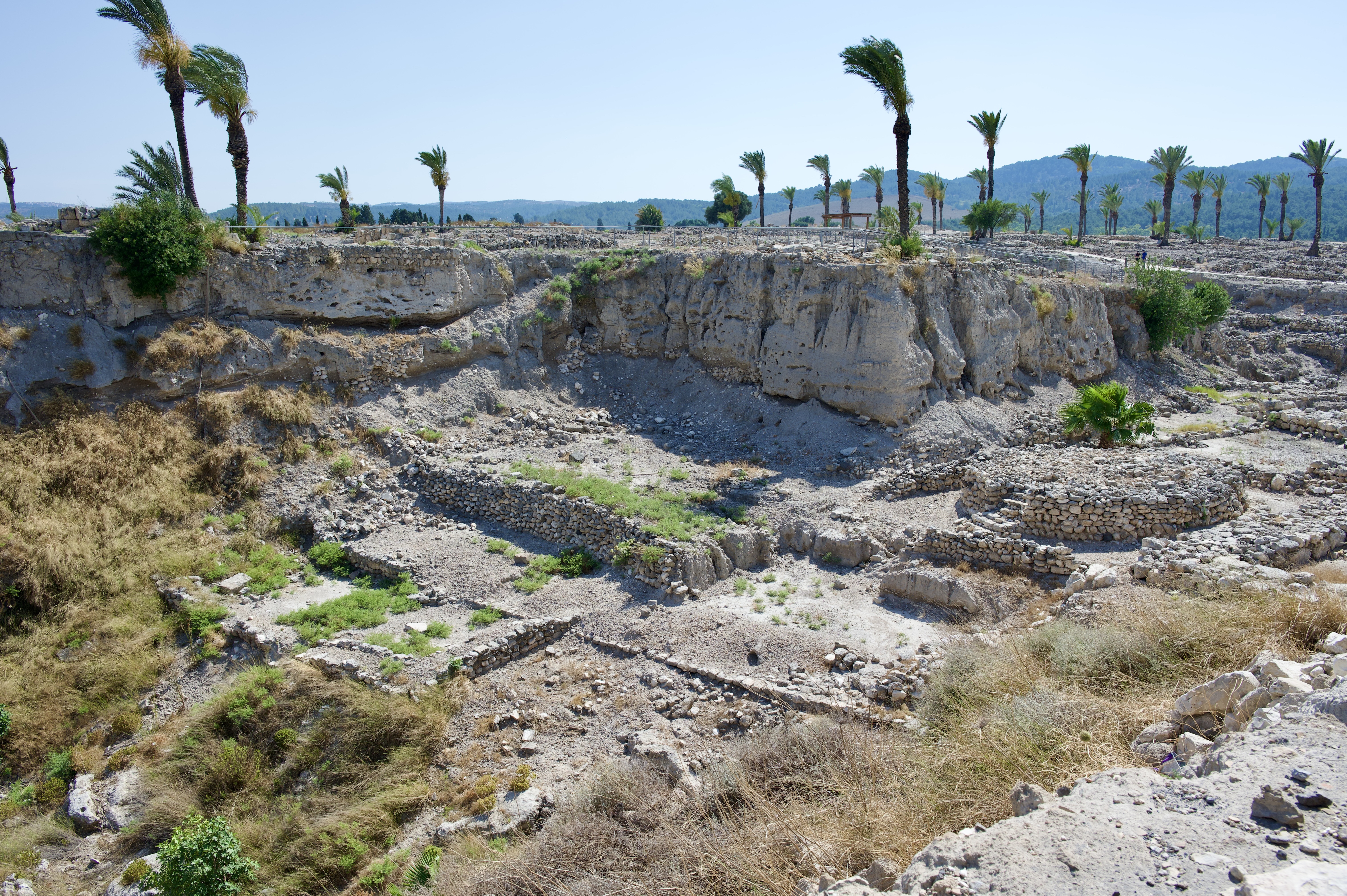
At the top of the tel, Ami pointed out how it was easy to see all of the different strata at Megiddo.
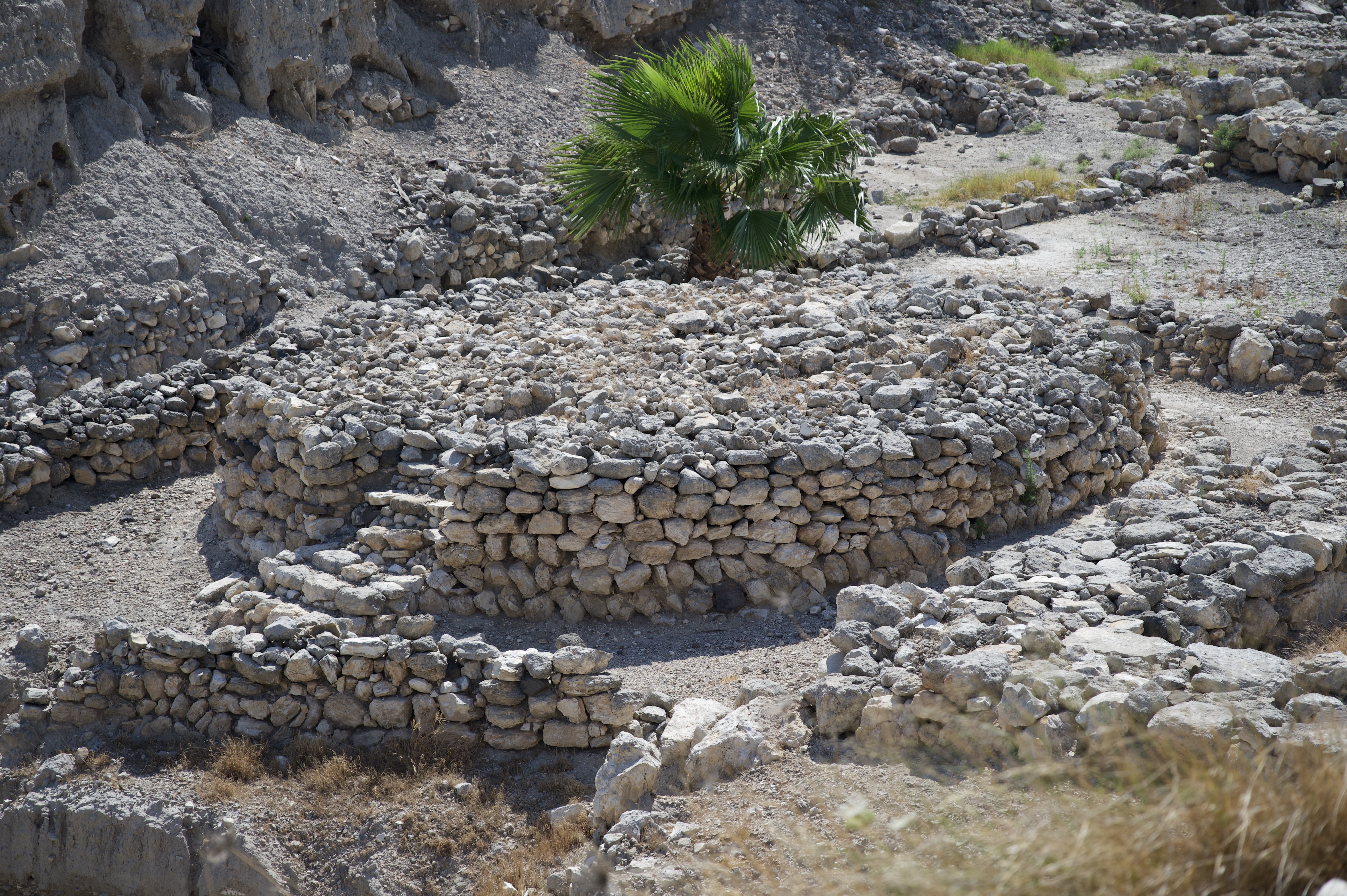
He also showed us the remains of a Canaanite period altar.
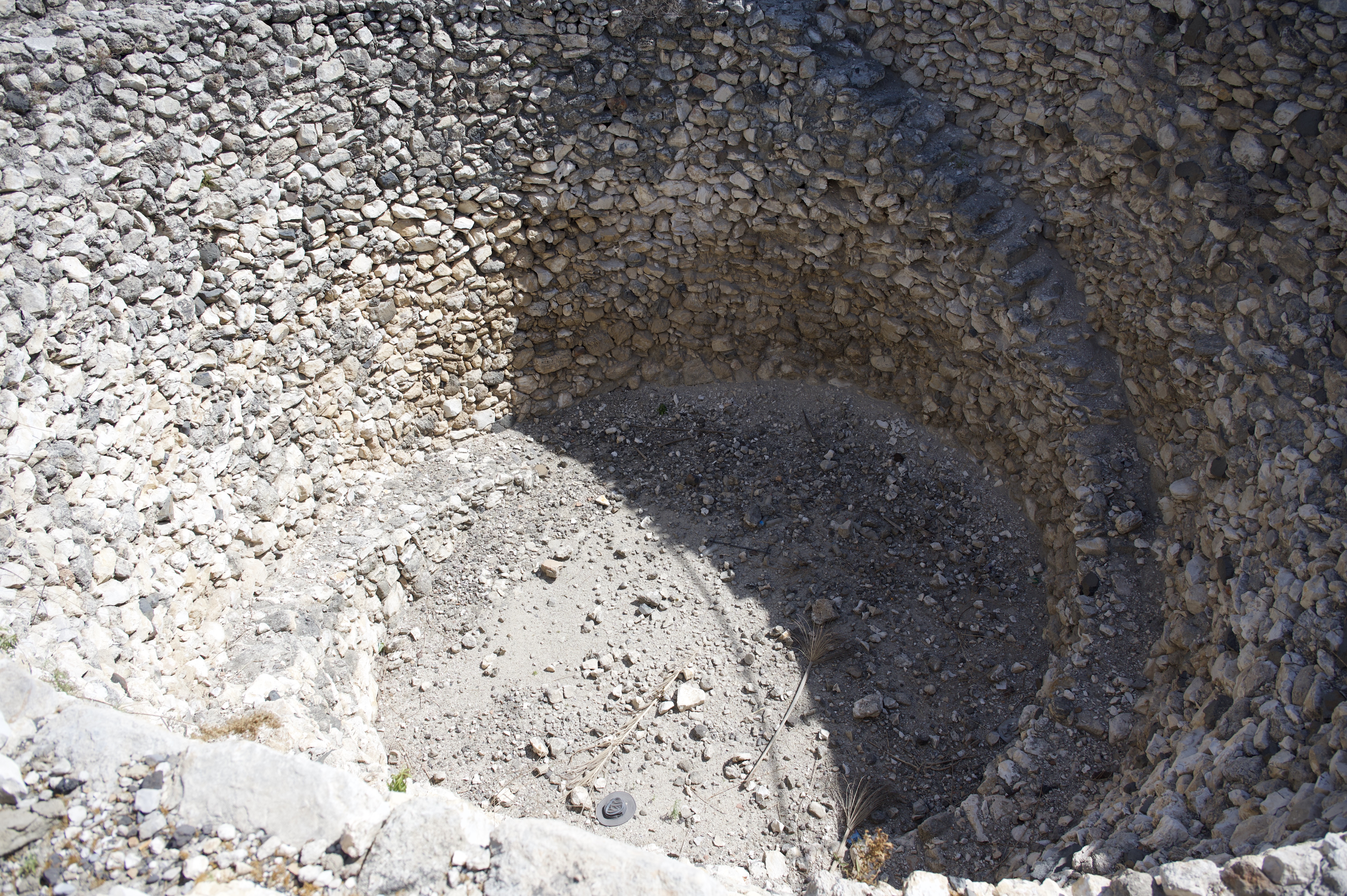
We then walked to the southern end of the site and saw a grain Silo from the late Israelite period. It is estimated to be from the time of Jeroboam II (8th century B.C.)
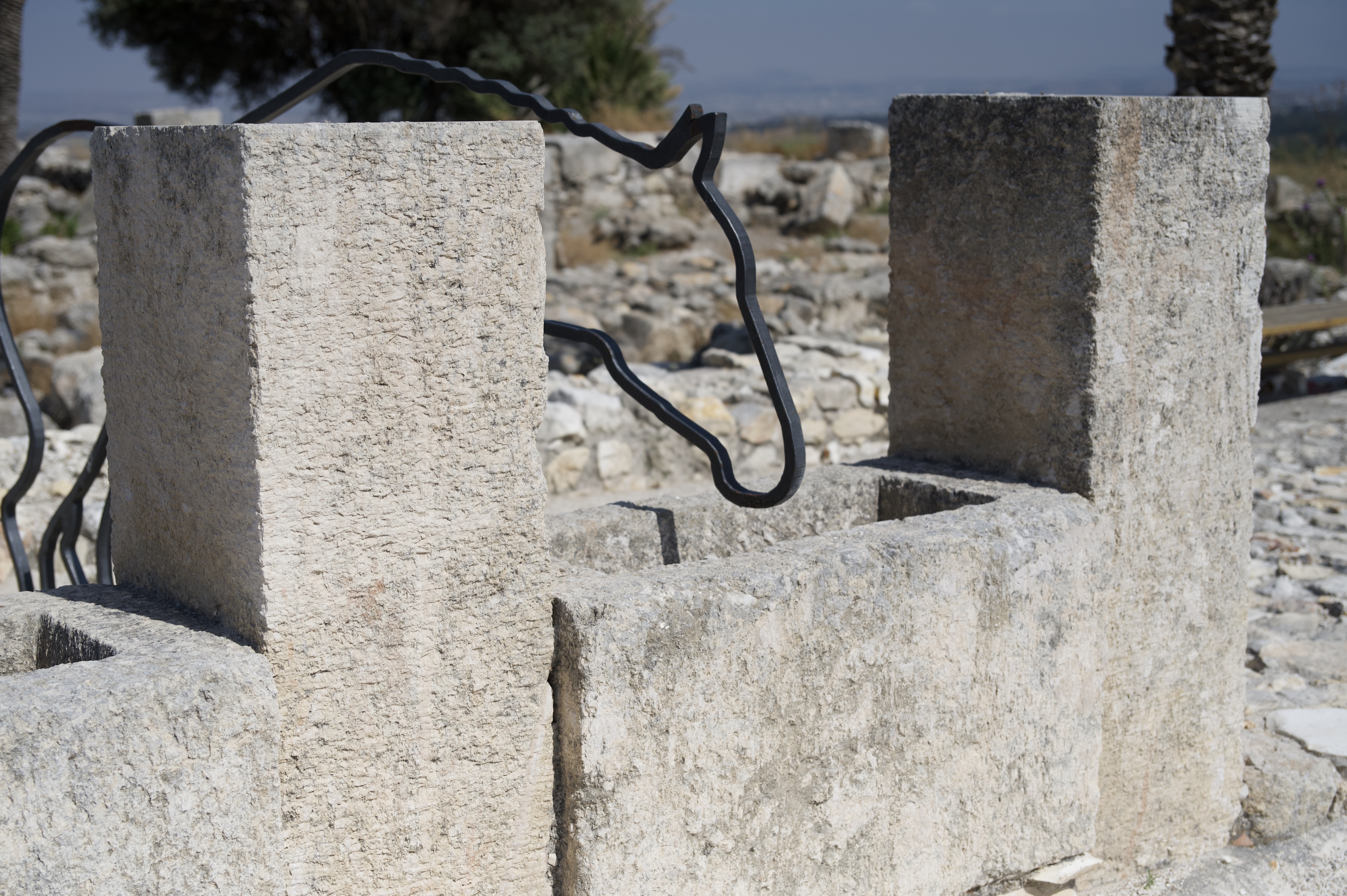
We then saw the southern stables, which have mostly been reconstructed and are estimated to be from the 9th Century B.C. (Time of Ahab)
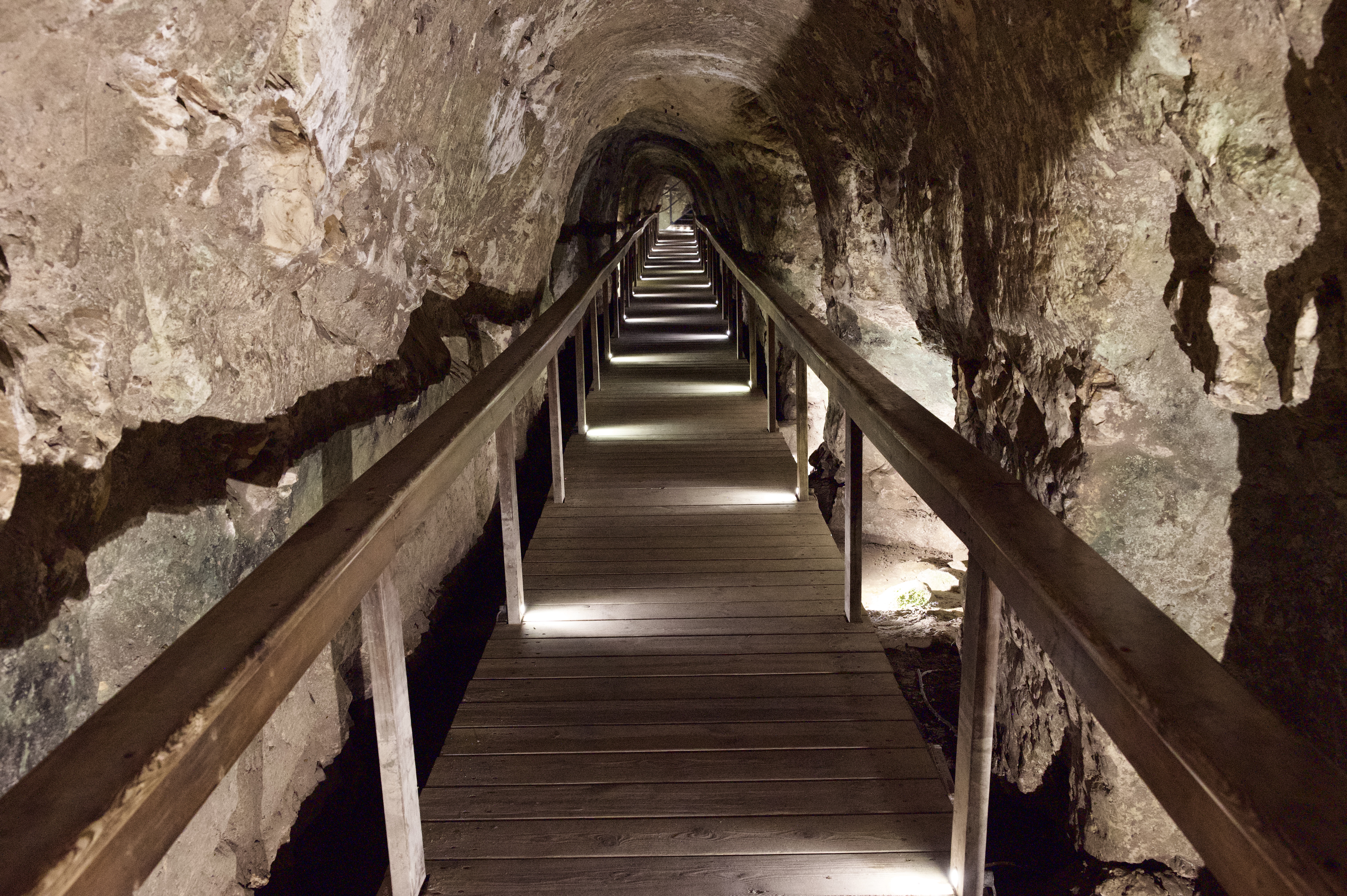
Our final stop was the water system from the 9th Century BC. The water system was a tunnel that was built underground to the spring which was the source of water for the city. This was key for being able to access the water supply during times of siege. The spring was covered from the outside so that it was only accessible via the tunnel.
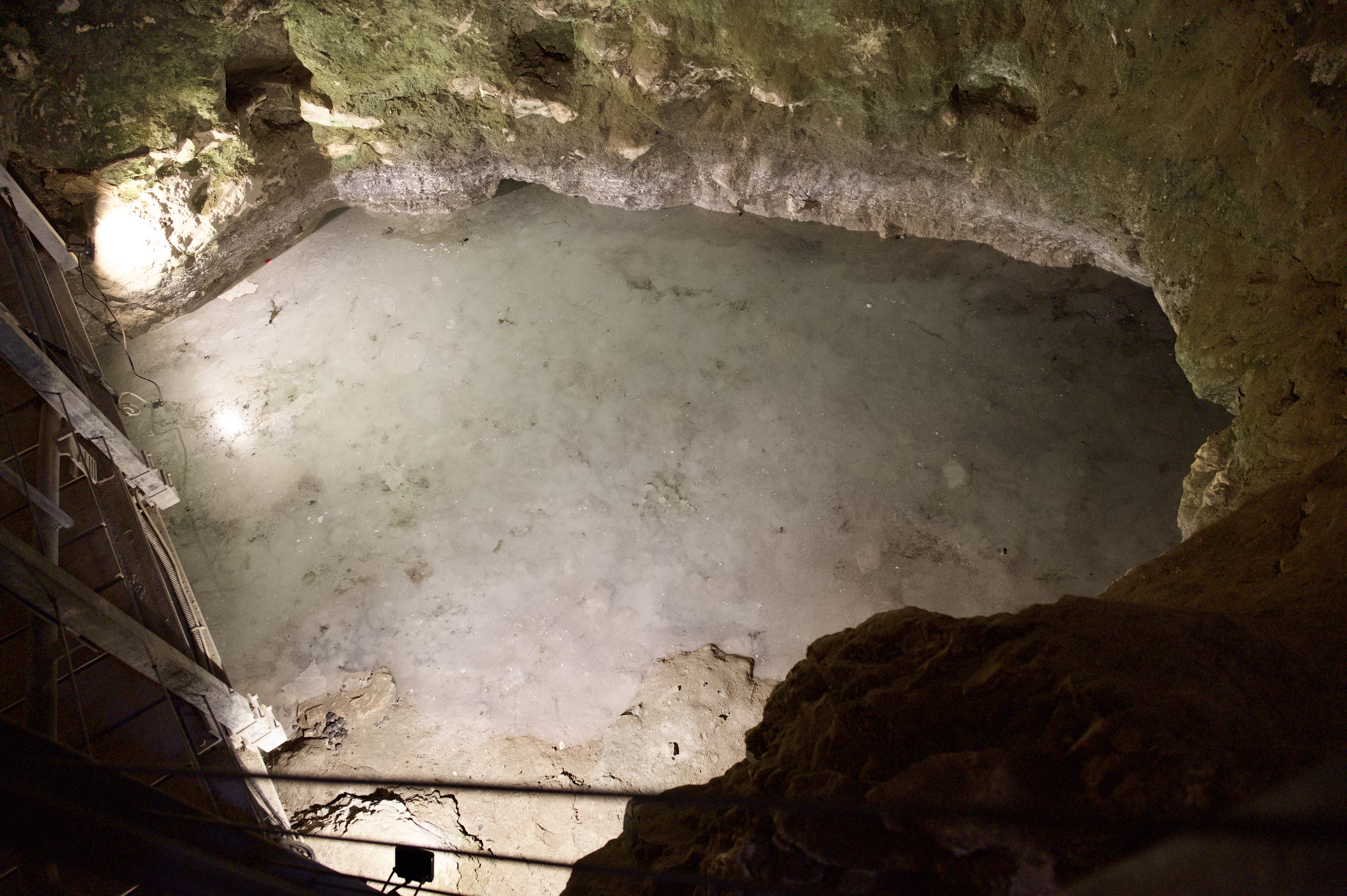
We got to walk down and through this tunnel to the spring that is still there today. Ami let me go first so I could make a recording of the entire system for showing to future Bible classes.
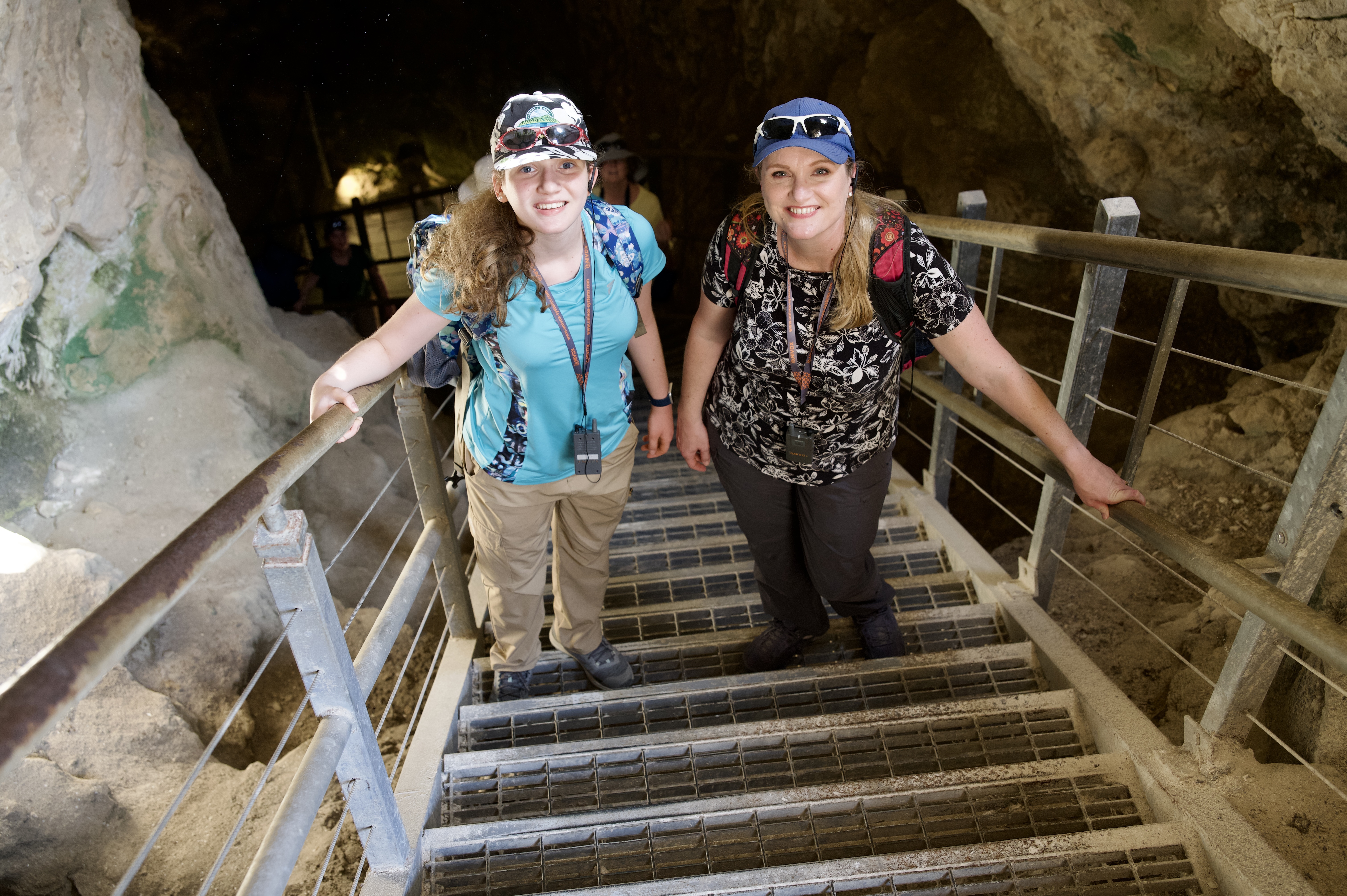
Olivia made it through this water system as well. Before our trip I didn’t think she would try any of them, but ended making it through all of them.
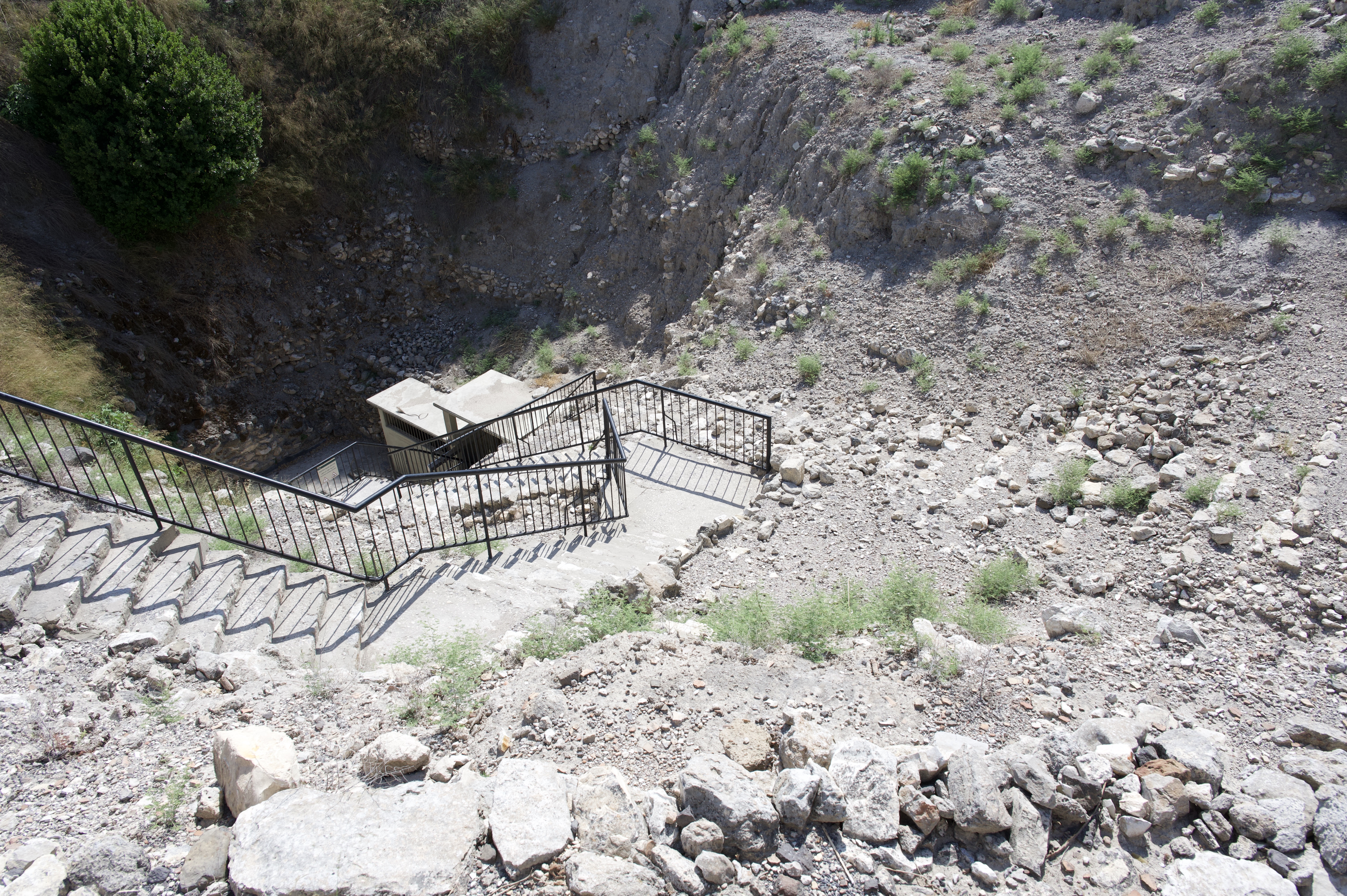
From the top you can still see the original steps going down the hill near where the modern steps are. Down in the tunnel, it is quote cool, which felt nice on a very hot day.
After finishing up at Megiddo, we boarded the bus and began making the long drive to Jaffa for our farewell dinner.
Jaffa (Joppa) for Dinner
Present day Jaffa is in the same location as the Joppa mentioned in the New Testament in Acts 10. Peter was staying in Joppa with Simon the tanner when he had the vision of the animals coming down on a sheet while on the roof. That was at the same time as Cornelius had sent messengers to Joppa to bring Peter back to Caesarea.
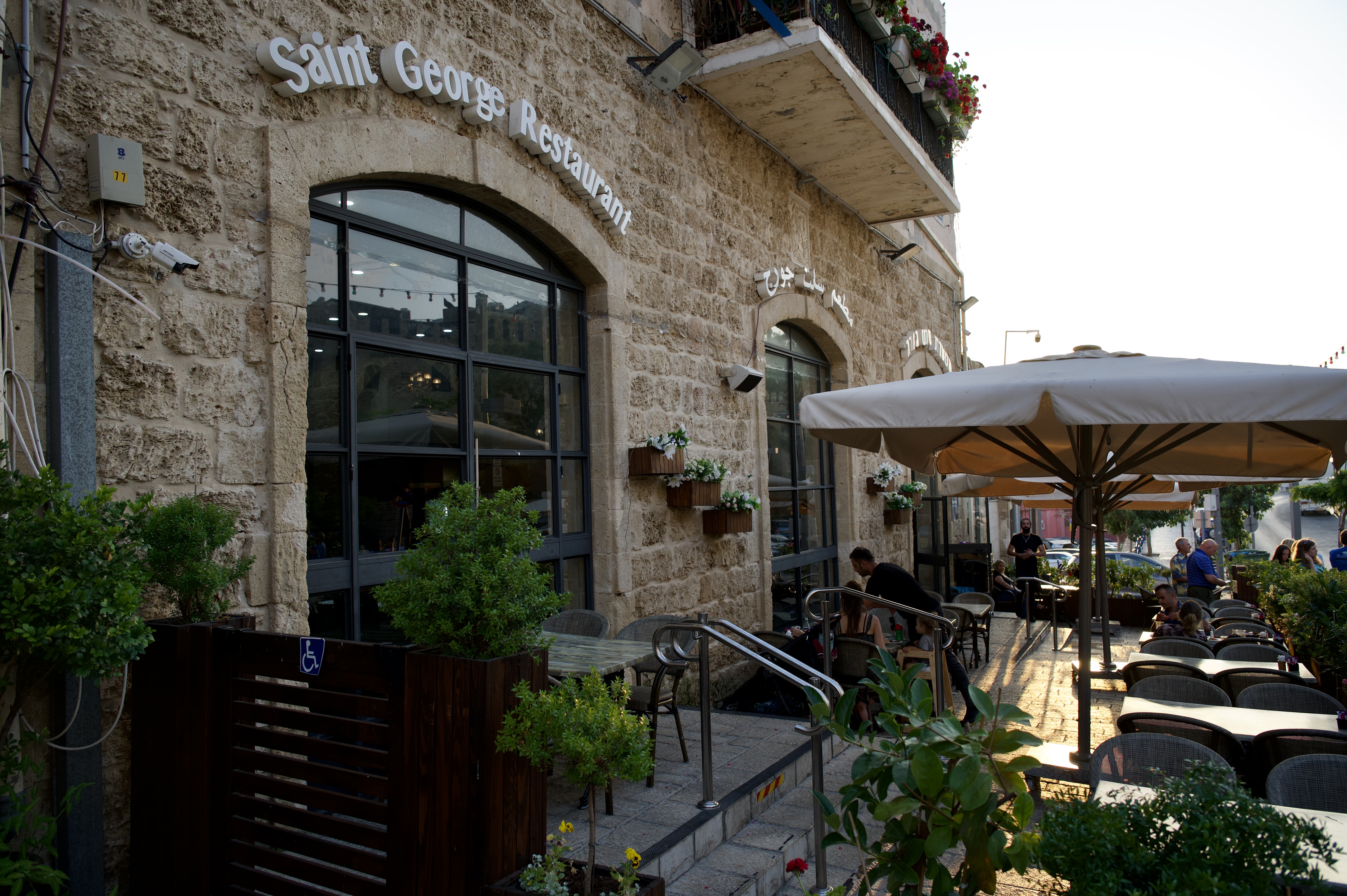
There are no ruins from Peter’s time in Jaffa today, but it was still nice to visit the location right on the Mediterranean.
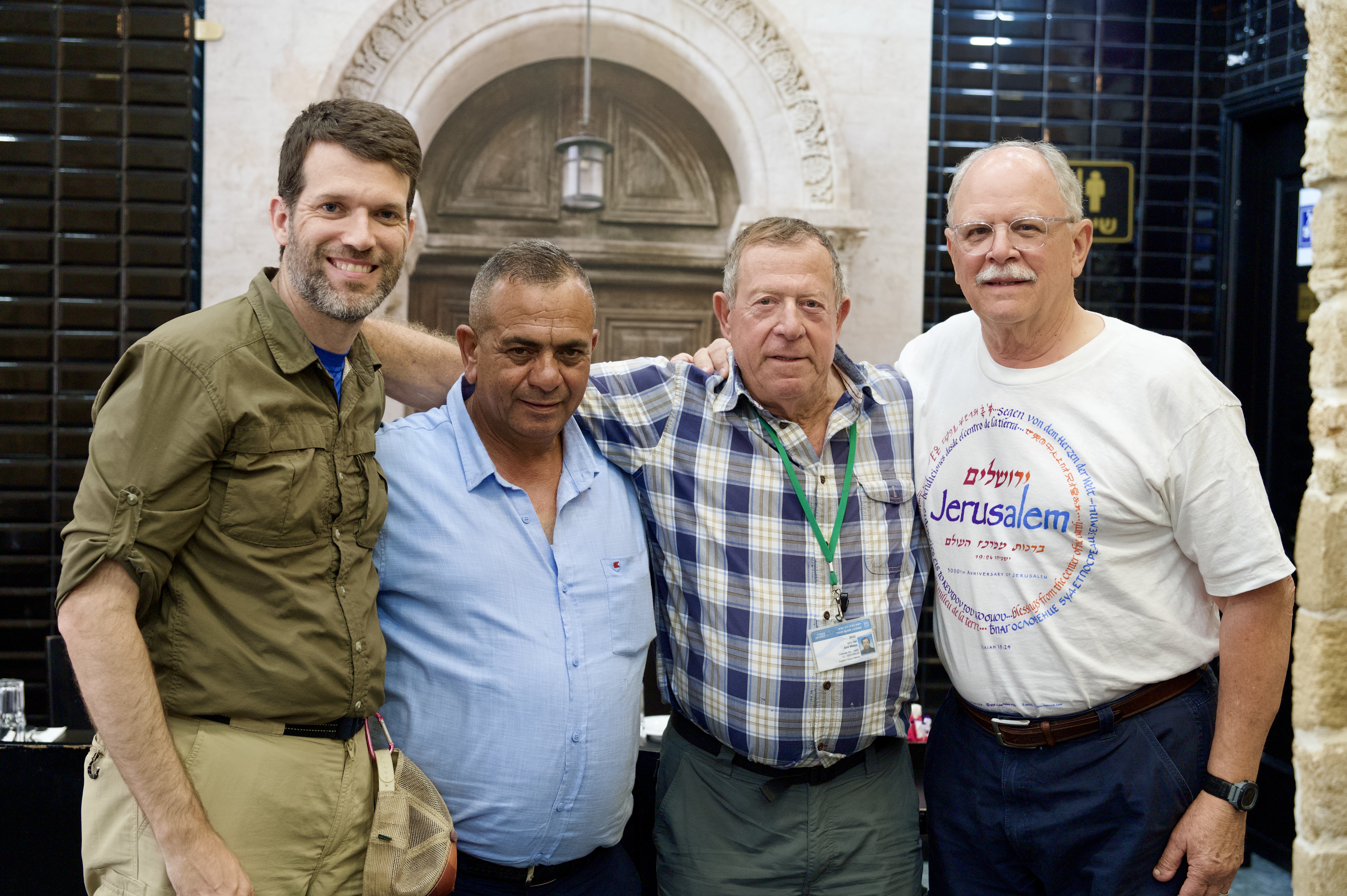
Our dinner was at St. George Restaurant, and it was delicious. After dinner we thanked Ami and Jamil for a wonderful trip as they guided us through the Holy Land.
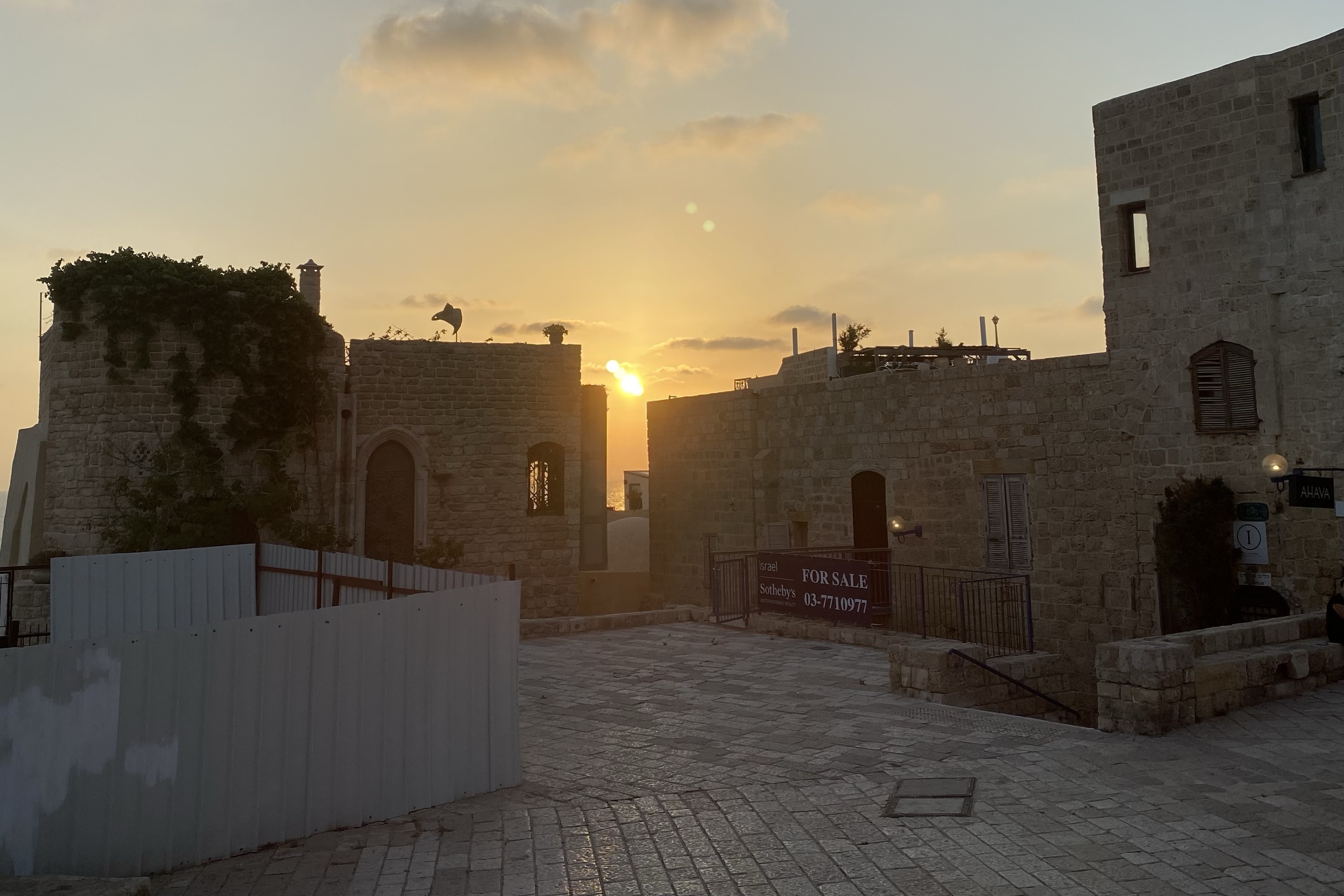
Just as we were leaving, I was able to snap a quick shot with my phone through bus window of a beautiful sunset between two buildings.
Travel Home
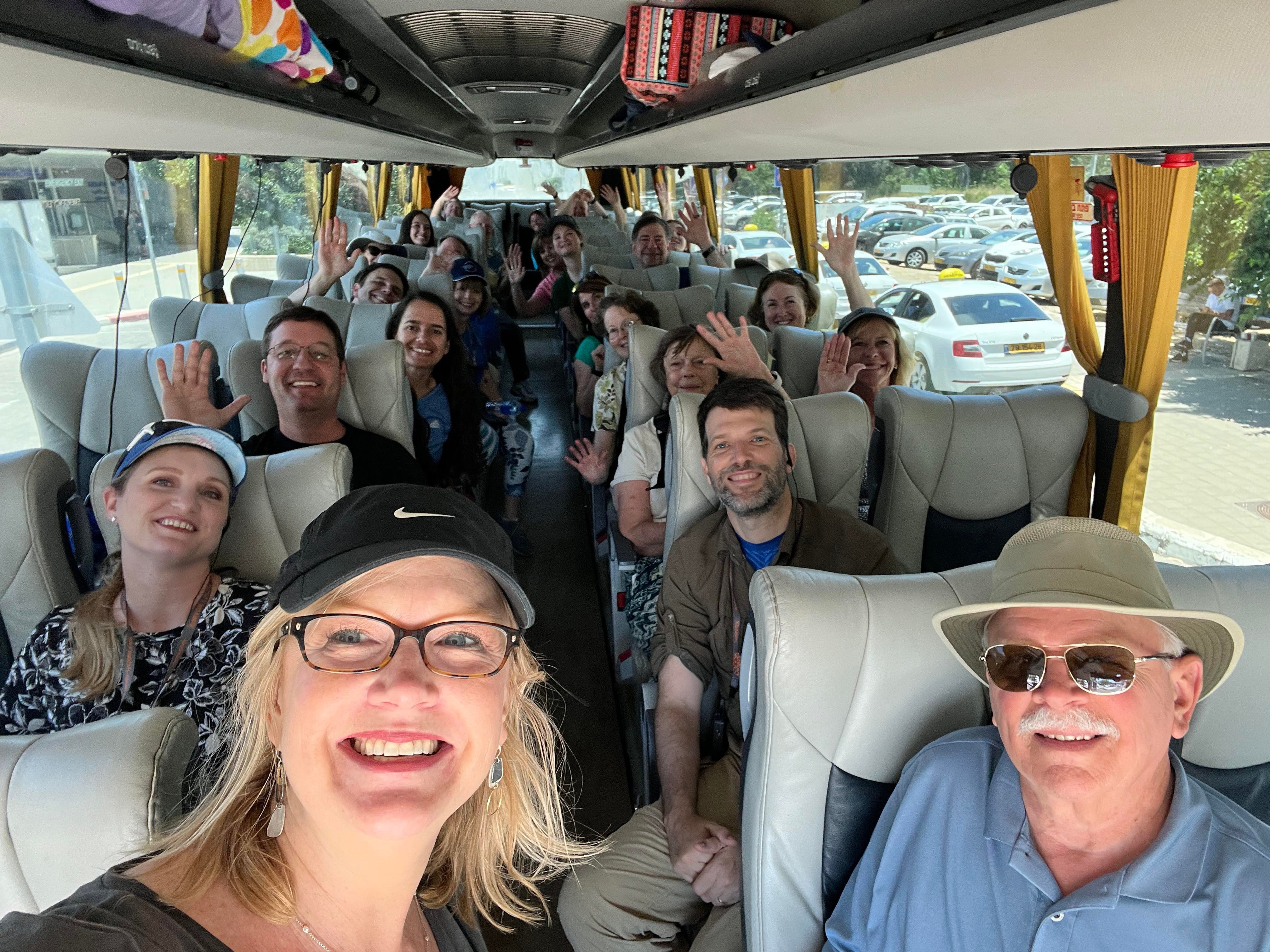
After dinner, we made the short drive to the Ben Guiron airport for our return flight.
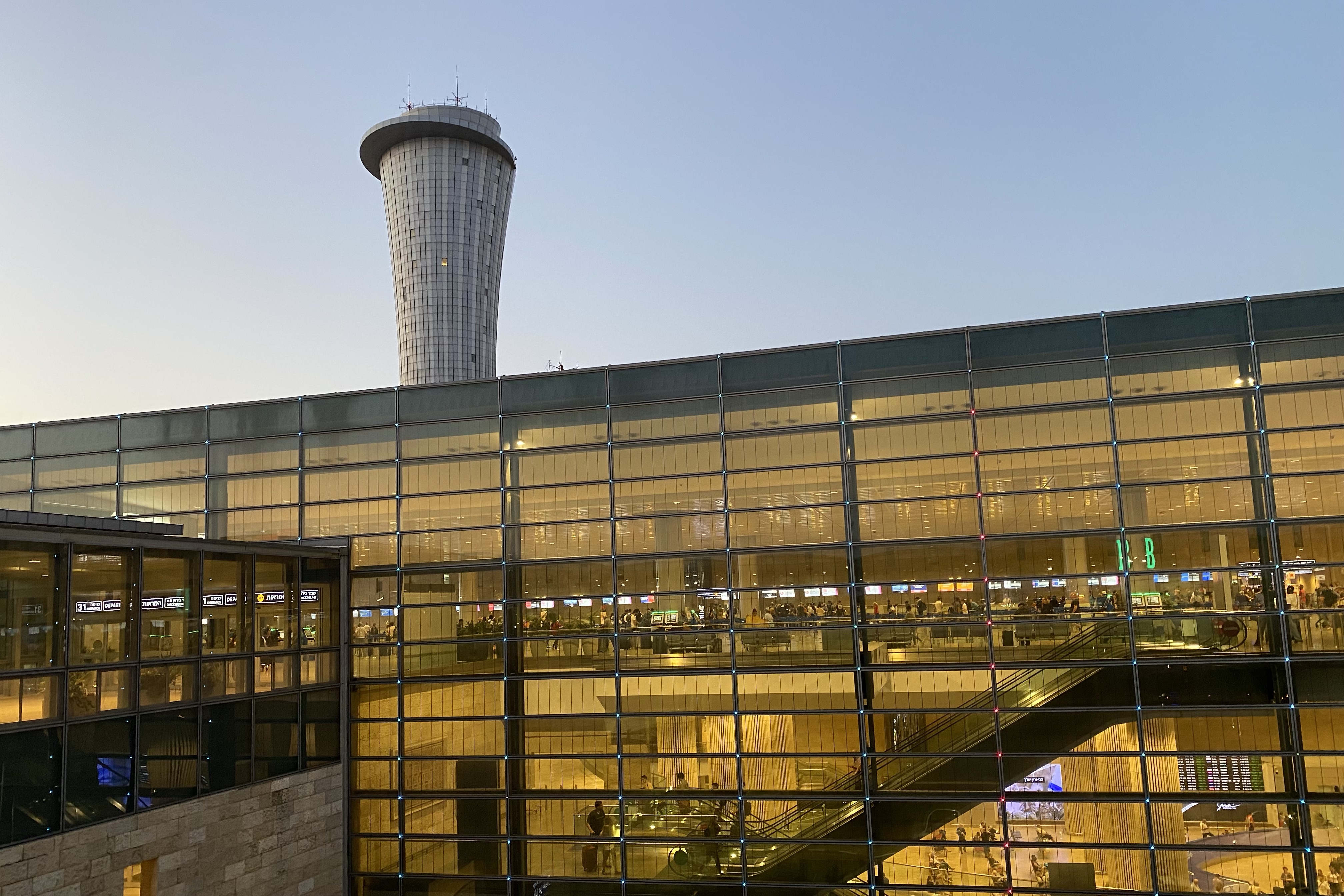
We again had a snafu with our tickets and had to wait for a long time at the American Airlines customer service counter for them to get things straightened out. Even with the hassle, we still all made it on the flight.
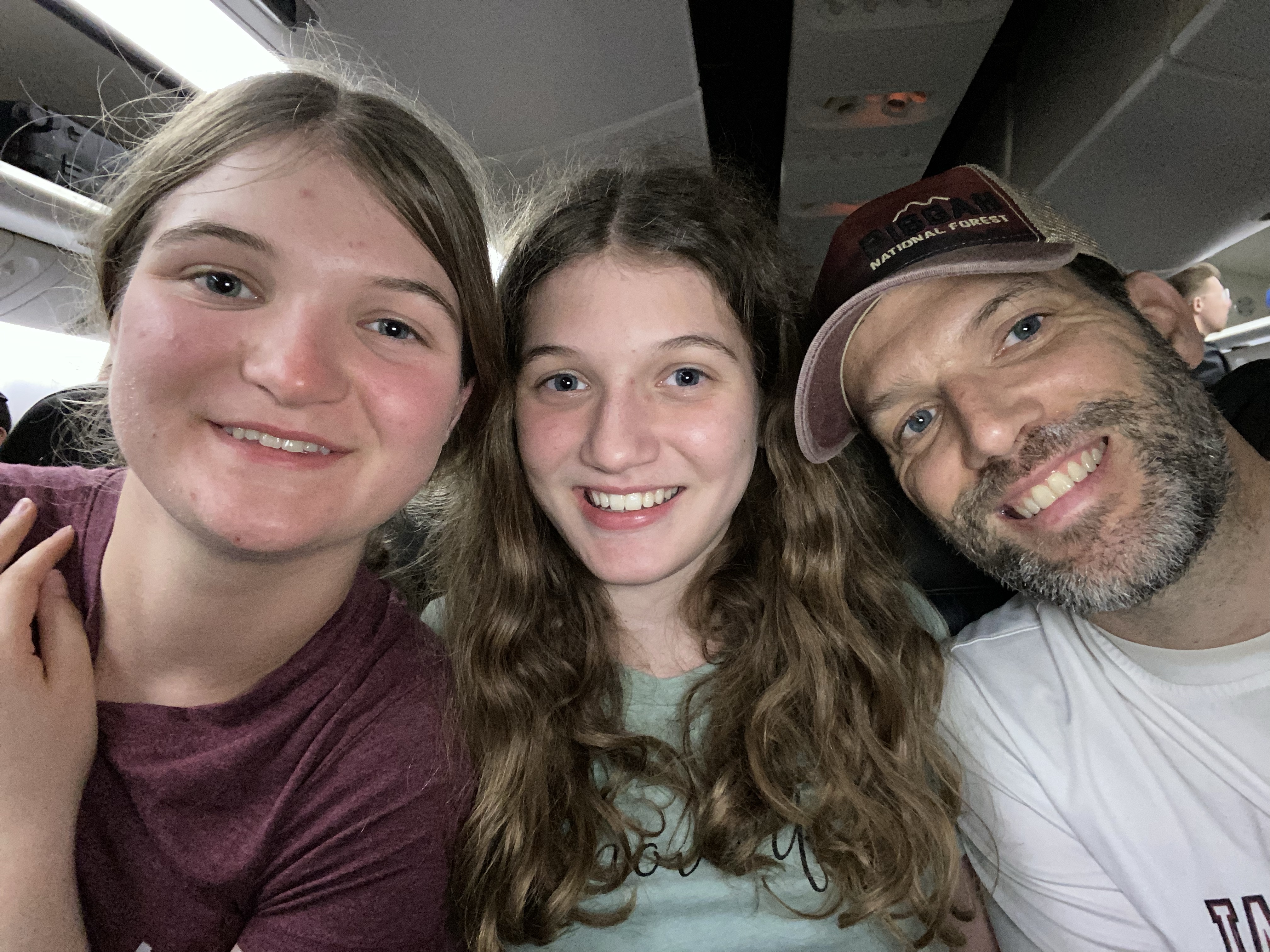
Our flight from Tel Aviv to Miami left just before midnight. It was long flight (Almost 7,000 miles in 13 hours), but relatively uneventful other than a lot of very unhappy kids. I probably slept for 5 or 6 hours of the flight, but I’m pretty sure Sara only slept for about an hour. I’m expecting her to completely collapse when we get home.
We landed in Miami just after 5:30am, so we only moved forward in time 5 1/2 hours on a 13-hours flight. Flying across the Atlantic always messes with my brain regarding time.
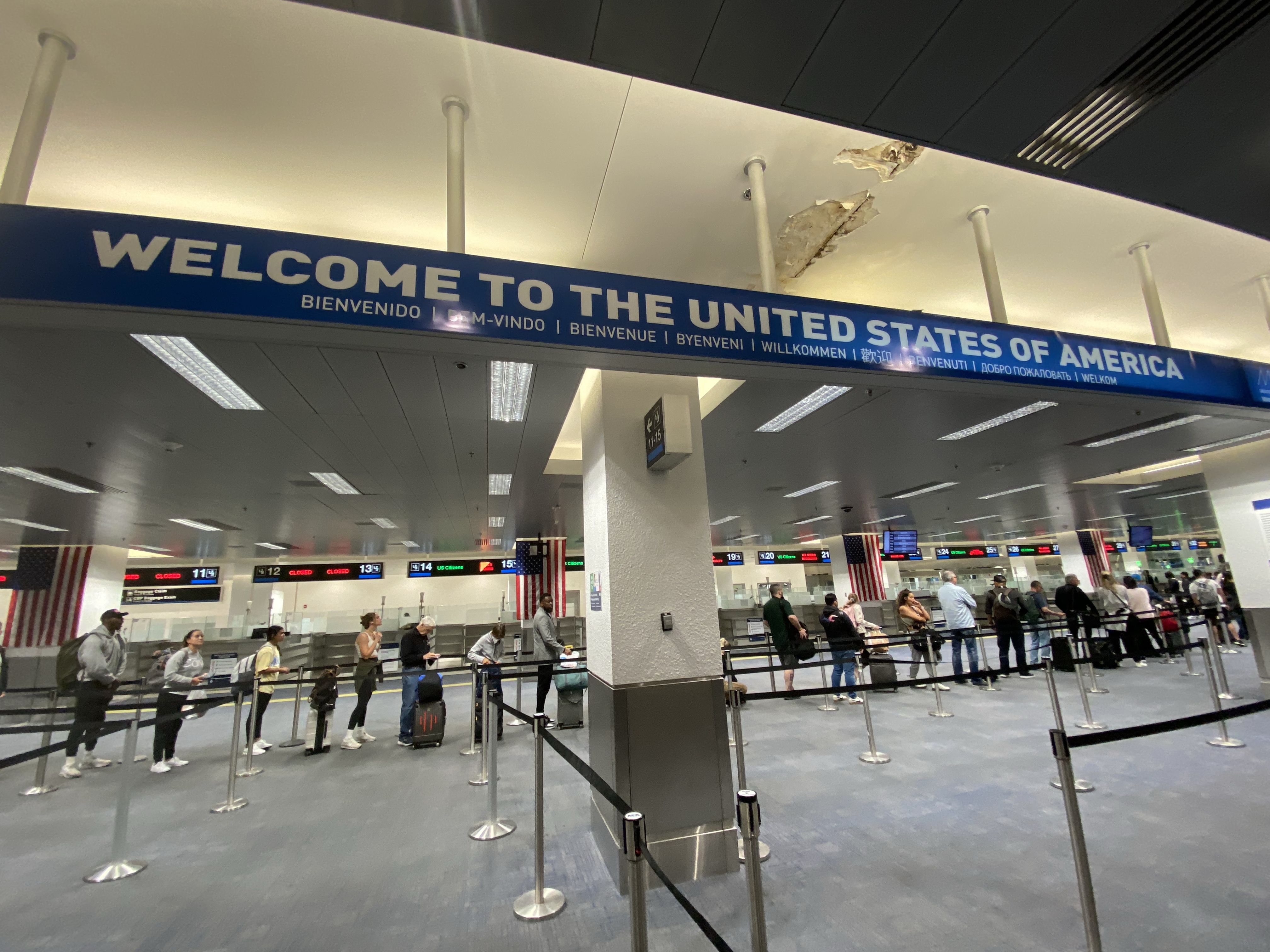
In Miami it took a very long time to get through immigration, customs, and to be re-checked through security. This seems to always be the case for international flights coming in through Miami. I’ve had much better experience in places like Newark and Atlanta.
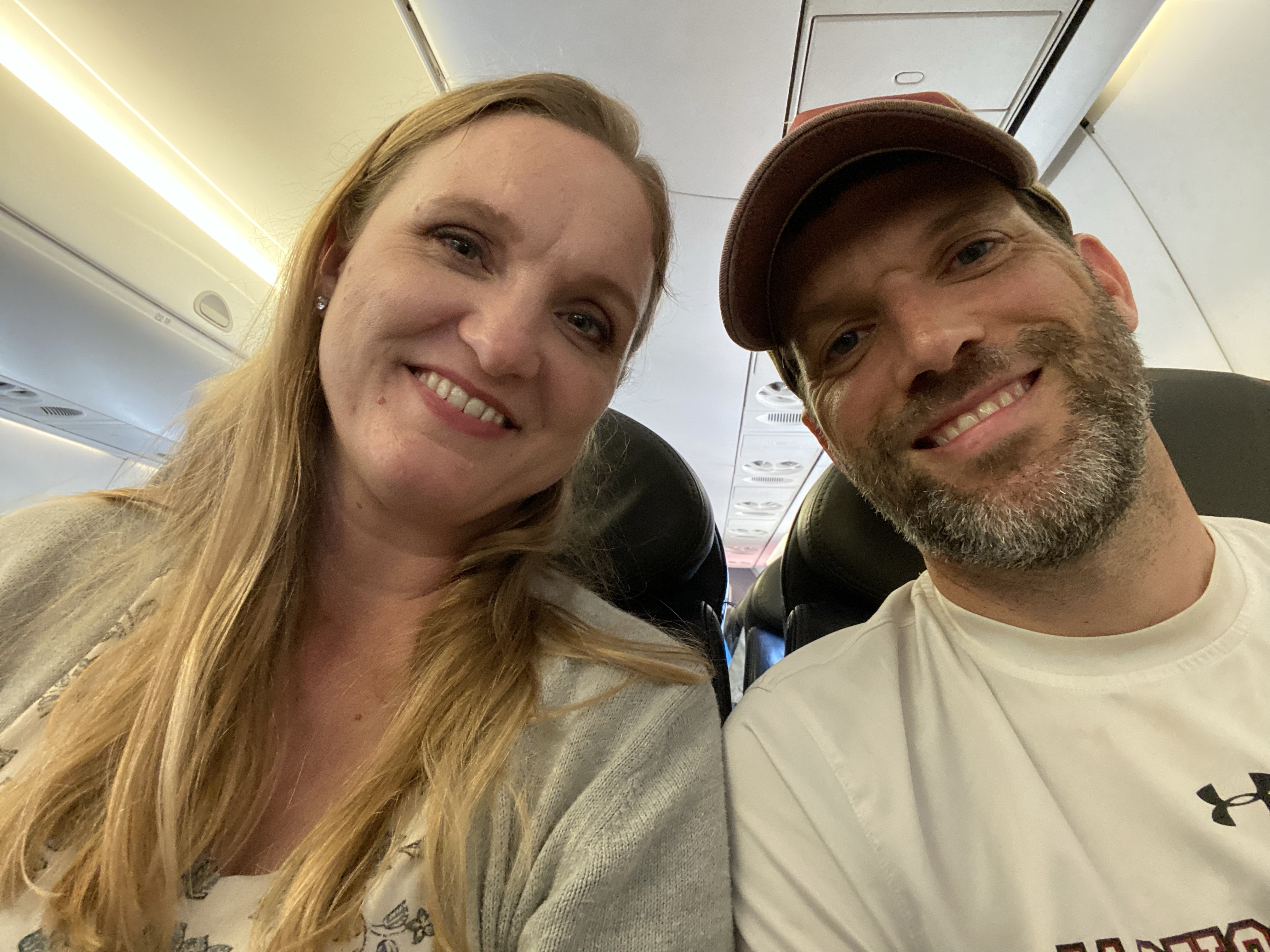
Our flight to Nashville was delayed a bit, but we still left around 9:30am EDT and landed around 10:45am CDT with no issues. Now as I finish this out, I’m sitting at my desk at home completely exhausted, but still smiling from a wonderful pilgrimage to the Holy Lands. I didn’t think my last trip there could be topped, but this one was even better. I’m so thankful that Bruce invited me to join him in leading this wonderful group, and I’m also thankful that I could experience Israel with my family. We got off to a bumpy start, but even though we missed a day it really didn’t seem like it. Ami did a wonderful job in helping us make up as much as we could.
I can’t wait to go back and am already thinking about the next trip!
